12 of the best things to do in the Swiss Alps

May 2, 2024 • 9 min read

Experience the best of the Swiss Alps with this guide to the top things to do © Matt Munro / Lonely Planet
It can be hard to know where to start on a trip to the Swiss Alps, such is the region’s abundance of unmissable scenery, exhilarating activities, nerve-shredding alpine roads and high-altitude accommodation that makes you feel like you’re sleeping in a cloud.
Yes, you’ll want to see the Matterhorn and the Eiger – and you absolutely should – but make time for some lesser-known sights and activities too and you’ll come away with a well-rounded picture of Switzerland ’s magnificent natural playground. Read on for a selection of the best things to do in the Swiss Alps.


1. Traverse the historic Gemmi Pass on foot
There’s something hallowed about a mountain pass – an alpine route established centuries ago by traders, pilgrims and farmers – and the Gemmi Pass is among the most accessible. It became a tourist draw in the 19th century, when Thomas Cook brought his first ever package tour group here, and famous visitors such as Jules Verne, Pablo Picasso and Mark Twain have all trodden its path.
Follow in their footsteps by hiking up from Leukerbad to the start of the pass, or – much easier and faster – take the leg-saving Gemmibahn cable car. From there, it’s a 3-hour hike to Sünnbuel, where another cable car whisks you down to the Kandersteg Valley. Along the way you’ll pass barren peaks, turquoise lakes, flower-laden meadows and the Hotel Schwarenbach , dating from 1742, where you can stop for a restorative drink.
Detour: Make time to explore the villages on either side of the mountain pass. Ogle the mountain view from the warm waters of Leukerbad’s thermal baths , and don’t miss the jewel-like Oeschinensee , a lake accessible by cable car from Kandersteg.
2. Ride the Verticalp to the Emosson dam
Around half of Switzerland’s electricity comes from hydropower and Emosson is one of the most interesting dams to visit because getting here is part of what makes the experience so special. From Martigny, take the Mont Blanc Express to Châtelard, where you jump on the Verticalp funicular, built 100 years ago for workers constructing the original dam. At the top, a toy-like mountain railway trundles along a cliff edge to the base of the concrete behemoth, from where a smaller funicular takes you up to the level of the reservoir.
Take time to gawp at the sheer expanse of the dam, the vast volume of water it holds back and the dizzying views over the edge, before hiking up through tranquil scenery to a second, older dam, the Vieux Emosson, where a mountain hut offers snacks, drinks and souped-up views.
Planning to see more of Switzerland? Here are the best places to visit

3. Drive or cycle across three mountain passes
With their snaking hairpins and otherworldly landscape, Switzerland’s mountain passes are a sight to behold and a thrill to navigate. Experience three in one go by driving or cycling a circular route that takes in the Grimsel, Furka and Susten passes.
The scenery – and the air temperature – changes constantly as you climb and descend the switchbacks, while passing lakes, craggy peaks and glacial tongues. There’s plenty to explore en route too: the Gelmerbahn – Europe’s steepest funicular – up to the Gelmer lake; the foot of the Rhône glacier; the (now closed) Hotel Bélvèdere on the Furka pass, which is recognizable from the 1964 James Bond film Goldfinger ; and the Grimselhospiz , a hotel since the Middle Ages, where you can spend a tranquil night after the daytrippers have gone home.
Planning tip : If you don’t want to drive and your legs (quite understandably) can’t hack the cycle, take the bus instead. Switzerland’s trusty yellow postbuses navigate this route daily.
4. Follow the bisses , ancient waterways in Valais
Particular to the canton of Valais, the bisses are ancient irrigation channels, once used to transport water across alpine meadows and grazing pastures, which have been restored and repurposed into excellent hiking trails. Mostly flat but occasionally vertiginous, these paths follow the trickle of water across fields, through woods, and sometimes along the edge of a cliff.
One example of the latter is the Bisse du Torrent Neuf , which clings to the rockface above the Rhône valley and includes sections of wooden walkway pinned against the sheer mountainside. It’s all perfectly safe, but those with vertigo may want to stay away.
5. Hike hut to hut
Switzerland’s mountains are strewn with overnight cabins in such amazing places – on mountain tops, overlooking glaciers, in remote spots hours from anywhere – that it’s hard to imagine how on earth they were built in the first place.
Hiking from one to another on a multiday expedition is a classic Swiss experience. Plan a bespoke route on Wanderland.ch and book your cabins on the Swiss Alpine Club website , or choose an established hut-to-hut itinerary such as the Tour des Muverans, a magnificent 33km (20.5 mile) circular route, which suggests overnights at Cabane Rambert and the Refuge du Lac de Derborence .
Planning tip: Cabins are very popular and tend to get booked up in high season, especially on weekends, so always reserve in advance (you can usually call to cancel if the weather doesn’t play ball). Swiss Alpine Club huts are open to non-members as well as members.
Want more inspiration? Here are the top hiking routes in Switzerland

6. Experience the Aletsch glacier with fewer tourists
The longest glacier in the Alps, the 20km-long (12-mile) Aletsch snakes its way through the mountains straddling the cantons of Valais and Bern. Most visitors ride the epic mountain railway from Grindelwald to the Jungfraujoch to see it, a memorable but pricey experience you’ll usually share with tons of other people playing human Tetris.
Instead, head to the Aletsch Arena and take the cable car up to the ridge overlooking the glacier for what is arguably a better panorama of this mighty river of ice. From there, numerous hiking routes skirt its edge, and you’ll often be completely alone with the view.
Planning tip: The Aletsch is beautiful in all seasons, but in autumn the larch forests on its flanks come alive with color, which is in striking contrast to the monochrome glacier.
7. Go mountain biking in Verbier
Fans of mountain biking – or vélo tout-terrain (VTT) as it’s known in these parts – will love Verbier, which transforms itself from skiing paradise in the winter to biking nirvana across summer. The bike park offers 19km (12 miles) of downhill trails for thrill-seekers, while cross-country and enduro routes for cyclists of all levels meander far and wide across the 4Vallées .
If you’d like some battery assistance, don’t worry, Verbier is big on e-biking – in fact, there’s an e-bike festival in August, e-bikes for hire in rental shops and charging points all over the area.
Looking to go skiing? Here are the best Swiss resorts and off-piste slopes
8. Get the best view of the Eiger, Monch and Jungfrau from Mürren
You could spend days – weeks – exploring the Bernese Oberland , one of the most beautiful alpine regions in Switzerland and a major tourist draw thanks to its big three peaks: the Eiger (ogre), Mönch (monk) and Jungfrau (maiden, or virgin). But if you only have time to visit one place in the area, please make it Mürren.
This car-free village on the slopes above the Lauterbrunnen valley was made famous by the 1969 Bond film On Her Majesty’s Secret Service (the Schilthorn summit station, high above the village, stood in for Blofeld’s lair in the film), but it has thankfully retained its sleepy alpine charm.
Hiking on the area’s network of trails is blissful: you’ll pass cow-grazed meadows, tranquil lakes and sun-darkened wooden barns, while marmots chirp and the big three peaks loom large right in front of you.
Detour: If you’re brave enough, challenge yourself to the via ferrata , a fixed-rung climbing route that starts at Mürren and descends sheer cliffs to the hamlet of Gimmelwald.

9. Stay the night on top of the Faulhorn
One of the oldest mountain hotels in Switzerland, the Berghotel Faulhorn sits on the Faulhorn mountain in the Bernese Oberland, overlooking the twin lakes of Brienz and Spiez far below. To get there, take the mountain railway from Wilderswil to Schynige Platte and hike the 10km (6-mile) trail to the hotel, perched atop a scree-covered slope.
Your reward is a night at 2681m (8796ft) altitude with the biggest starry skies, hearty homemade food and a comfy bed in a wood-paneled bedroom that has been welcoming guests since 1830.
Planning tip: The hotel is shut in winter, but the snow-laden path from its front door down to Grindelwald turns into the world’s longest toboggan run. To ride the 15km (9-mile) path, take the cable car to First and tug your sled up to the Faulhorn, about a 2-hour walk. It’s worth the effort for the exhilarating descent.
10. See the Matterhorn from the Five Lakes trail
Yes, it’s a touristy thing to do, but you can’t come to the Swiss Alps and not see the Matterhorn (Cervin in French; Cervino in Italian), the iconic mountain which looms over the village of Zermatt .
One of the best views is from the top of the Gornergrat mountain train, where you’ll get a 360-degree panorama of the Swiss-Italian Alps and access to tourist attractions including a VR experience of paragliding over the Matterhorn.
However, if you want to leave the crowds behind (at least a little – it’s rarely quiet in Zermatt) take the gondola to Blauherd and hike the Five Lakes trail . Gazing at the reflection of the Matterhorn in three of those five lakes, you’ll understand why this famous peak, with its distinctive crooked top and relative isolation on the skyline, is considered so special.

11. Spot wildlife in Swiss National Park
Switzerland’s only official national park , which is located in the eastern Graubünden canton, is a true wilderness and works hard to keep itself that way. The flora and fauna are left to their own devices (tree felling, flower-picking and hunting are not permitted), while visitors aren’t allowed to camp or make fires, nor can they do anything but hike.
Thankfully, the designated trails (which you can’t stray from) are worth all the rules, offering rock formations and untouched forests you won’t see elsewhere on the planet. Keep your binoculars handy for potential sightings of chamois, marmots, red deer and ibex; the park’s big four animals.
Planning tip: The only places to stay overnight in the park itself are Hotel Il Fuorn and the rustic Cluozza hut, both built before it gained national park status. Otherwise, stay in nearby Zernez and come in for day hikes.
12. Climb Le Grammont for the best view of Lake Geneva
The croissant-shaped Lake Geneva (Lac Léman in French) is truly vast, stretching for more than 70km (43 miles) from Geneva in the west to Villeneuve in the east. To really appreciate its scale, make sure you get up high. A popular and easily accessible spot is Rochers-de-Naye , a 2042m-high (6699ft) mountain accessed via cogwheel railway from Montreux .
But for something even more spectacular – and less frequented – get the bus or drive to Le Flon in the Valais and hike via Lac de Taney up the simple but steep trail to Le Grammont. With the glittering blue expanse of the lake spread out far below, a mountainous skyline stretching into the distance, and usually, a fair gust blowing, you’ll 100% feel like you’re standing on top of the world.
This article was first published Jul 6, 2023 and updated May 2, 2024.
Explore related stories

Sep 13, 2024 • 7 min read
This Swiss canton abounds with icons: soaring peaks, charming valleys, warm and gooey AOP Raclette de Valais cheese and slobbery St Bernard dogs.

Sep 10, 2024 • 8 min read

Aug 26, 2024 • 6 min read

Aug 23, 2024 • 9 min read

Jul 29, 2024 • 6 min read

Jul 3, 2024 • 10 min read

Jun 7, 2024 • 8 min read
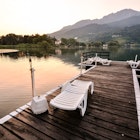
May 24, 2024 • 9 min read

Apr 19, 2024 • 10 min read

Mar 15, 2024 • 7 min read
- All Destinations
- Bustling Cities
- Beautiful Towns
- Charming Villages
- Culinary Experiences
- Historical Monuments
- Zoos, Parks and Aquariums
- Image Gallery
- Comparative Analyses
- Hiking Time Calculator
- Travel Information
- Frequently Asked Questions
- Affiliate Disclaimer
- Favorite Resources
- Privacy Policy
Swiss Alps – The Ultimate Guide
- April 22, 2021 November 20, 2023
- Mountains , Valleys
Last Updated on November 20, 2023 by Darla
Switzerland is a highly mountainous country located in Central Europe. The Swiss Alps cover roughly 60% of the country’s area. In this article, we will answer the following questions – where are the Swiss Alps? What is it exactly, and how did it emerge? Lastly, we will enumerate and discuss the various Western and Eastern Alpine Regions.
Where are the Alps?
The Alps are the most extensive and highest mountain range in Europe covering 1,200 kilometers. There are eight countries in Europe that have mountains in this range – France, Switzerland, Monaco, Italy, Liechtenstein, Austria, Germany, and Slovenia. This stretches from Nice in France all the way to Vienna in Austria.

The Alps are further divided into two – the Eastern Alps and the Western Alps. You can think of the line dividing it along Lake Constance – Chur, Switzerland, Splügen, and Lake Como.
In Switzerland, this means that the Alps in Valais and Ticino are west and the ones in Grisons ( Graubünden ) are largely in the east.
Where are the Swiss Alps?
The Swiss Alps extend from both Valais in the West to Graubünden in the East. Of this, the most important blocks are the Alps in Valais, Bern, Appenzell, Glarus, Ticino, and Grisons ( Graubünden ). The Mont Blanc massif in Valais is shared with France and Italy. And the Bernina Range is shared with Northern Italy. The rest of the ranges, particularly in Bern, Appenzell, and Glarus are not shared with the neighboring countries.
The highest peaks in the entire Alpine region lie in the Swiss Alps, particularly in the Pennine Alps in Canton Valais. Here are the highest ten mountains. All mountains are in Valais, with the exception of Finsteraarhorn which Valais shares with Bern.
Top 10 Highest Mountains in Switzerland
Jungfrau and Mönch , two of the most well-known mountains in Switzerland, are the 16th and 17th highest mountains respectively. Piz Bernina , the highest peak in the Bernina Range in Grisons, ranks 20th on the list of the highest mountains.

The Swiss Alps are, in terms of farming, the summer pastures used by cows, sheep, and goats. It is higher in altitude compared to the spring pastures.
How did the Alps emerge?

In a nutshell, the history of the Alps is not yet 100% clear. But we do know that in the course of the earth’s 4,500 million years, the earth has constantly changed based on various environmental factors. Mountains, flats, and seas form and disappear over the years. Continental plates move, drift apart, or collide. We see this time and again through numerous earthquakes and volcanic eruptions. We see glaciers recede, ice shelves break off, and more. The general assumption is that plate tectonics have contributed to the emergence of the Alps.
Plates drift a few centimeters per year. It can be measured with instruments, but normal people would hardly notice it. The Alps are actually considered a young mountainous range. By young, the definition would be 70 million years.
This is the rough timeline of how the Swiss Alps emerged :
- Triassic Period – 210 million years ago – The huge continent of Europe and Africa (Pangaea) does not have a lot of mountainous regions. It is mostly flat and keeps on getting flooded by the sea.
- Jurassic Period – 150 million years ago – The continent breaks into two – Europe and Africa. Between the two is an ocean called Tethys. Through the separation of the two continents, the plates slowly move and the flat regions slowly rise to the early Alps. This was referred to as Alpine Tethys .
- Cretaceous Period – 90 million years ago – The continents keep on coming closer together. The first continental collision took place.
- Paleocene and Eocene – The main collisional phase occurred in the formation of the Alps. It was when the Adriatic plate was thrust over the European crust.
- Present – the plate collision still occurs yearly but in a very minuscule range causing some areas to be uplifted.
As discussed earlier, the Swiss Alps can be divided into the western and eastern sides. Here we will have a look at the various alpine regions.
The Western Swiss Alps
The Western Swiss Alps cover much of the mountains in Valais and Bernese Oberland. These are high four- and three-thousand peaks and are known worldwide. Here are the alpine regions in the Western Swiss Alps:
Aletsch Glacier

At 23 kilometers, Aletsch Glacier is the largest in the Swiss Alps. Since 2001, it has been part of the UNESCO World Heritage. It is located in the Jungfrau-Aletsch-Bietschhorn region. Riederalp and Bettmeralp lie on a sunny terrace 2,000 meters above sea level.
In winter, four ski resorts lie in the Aletsch region: Fiescheralp, Bettmeralp, Riederalp , and Belalp. They are all accessible with cable cars.
Hasli Valley

The Hasli Valley is a family-friendly resort with fantastic views of the Engelhörner, Wellhorn, and Wetterhorn. There are numerous gorgeous spots in and near this valley – the Aare Gorge , Rosenlaui , and Reichenbach Falls . In winter, it has 60 kilometers of ski slopes, 25 kilometers of hiking trails, and many more.
Crans-Montana

Crans-Montana is located on a high sunny terrace around 1,495 meters above sea level. The region consists of five sections: Randogne, Montana, Chermignon, Lens, and Icogne. They have tons of spa hotels and good infrastructure (Congress and Culture Centers, Golf Areas). It is one of the biggest tourist areas in Valais.
The winter ski resort of Crans-Montana has easy slopes in the lower sections. The upper section towards Plaine More Glacier is more difficult.
Emmen Valley

The Emmen Valley with the Emme River, 170 valleys, and hills is quite idyllic. The region is also famous due to its cheese. Due to the riches the locals obtained from their cheese exports, they built beautiful, traditional houses. Worth visiting aside from the mountains is the old city of Burgdorf and its castle.

Entlebuch has endless moorlands and forests all seemingly wild and forgotten. In 2002, it received the UNESCO Biosphere Reserve label. It is now called the “UNESCO Biosphere Entlebuch” – Switzerland’s first biosphere reserve – spanning an area of over 400 square kilometers.
Frutigen Niedersimmental

The Frutigen-Niedersimmental administrative district covers several mountainous regions in Bernese Oberland. Although the areas are largely developed for tourists, most visitors are the Swiss themselves. Foreign tourists tend to skip this region, even though they have lots of awesome spots and a charming Chalet village. Popular to visit are Adelboden (a traditional Swiss mountain village 1,353 meters above sea level), Blausee in the Kander Valley, and the town of Spiez .
The ski resort of Adelboden-Lenk encompasses 170 kilometers of prepared slopes, 3 fun parks, 15 kilometers of cross-country skiing slopes, 40 kilometers of winter trails, and 3 sledding routes.
Less popular but still beautiful is the Diemtig Valley . It is a quiet valley with just a few ski lifts and cable cars. It is a place to visit if you want peace and quiet.

Goms is in the uppermost region of the Rhône valley. It has been inhabited since the Stone Age. During the Roman period, it was also part of the province of Rhaetia. The Walser folk who have lived here started migrating in the 13th and 14 centuries to other valleys in Switzerland, and neighboring countries of France, Italy, and Austria.
The Church of St. Maria is a Swiss heritage site of national significance. Furthermore, several villages in Goms are part of the Inventory of Swiss Heritage Sites – Biel, Ritzingen, Selkingen, Niederwald, Gluringen, and Reckingen.
Gstaad and Saanenland
Gstaad, similar to St. Moritz, is also a luxury spa resort in the Swiss Alps. It has lots of prominent luxury hotels, boutiques, and restaurants. The village is car-free and visitors from all over the world love strolling here and discovering the boutiques. The region also hosts numerous world events such as the Swiss Open (tennis), Hublot Polo Gold Cup, the Snowbike Festival, International Week – Hot Air Ballooning, and many more.
Jungfrau Region

The Jungfrau Region is world-known mostly due to Jungfraujoch . Labeled as “Top of Europe” at 3,463 above sea level, Jungfraujoch is actually a saddle between Jungfrau (at 4,158 m above sea level) and Mönch (at 4,110 m above sea level). This place is located in Bernese Oberland.
For more detailed information regarding the Jungfrau region and Jungfraujoch, check out our article Jungfraujoch – When is the Best Time to Visit?
Les Portes du Soleil

South of Lake Geneva is the Swiss and French region of Les Portes du Soleil. In this region, they have hot springs and one of the largest ski regions in the world. With 209 lifts and 650 kilometers, Les Portes du Soleil is huge. The village of Champéry is also charming.
Leukerbad is a thermal spa town 1,402 meters above sea level. 65 warm springs can be found in various baths throughout this town. The village is car-free as well.
Lötschental Valley

Lötschental is the largest valley on the northern side of the Rhône Valley, in the canton Valais. It extends around 27 kilometers and is quite remote. In fact, it was cut off from the outside world until the beginning of the twentieth century. Occasionally, it still gets cut off from the rest of the country in winter due to too much snow. It is also a Walser village where women sometimes still wear their traditional costumes.
The ski area is Lauchernalp from 1,419 to 3,119 meters with intermediate to difficult slopes.

Verbier used to be a farming village in the municipality of Bagnes, Valais. After the connecting road to Verbier was built, it started to change dramatically. In 1949, the first ski lift was added. Afterward, around 90 more followed.
Nowadays, Verbier is a premier backcountry ski resort, not only in Switzerland but also worldwide. Verbier is known for steep slopes, varied conditions, and resort culture. The place also has welcomed prominent visitors. The British, Swedish, and Belgian Royal families have already holidayed in this place.
Val d’Anniviers

Val d’Anniviers is a Swiss valley in Canton Valais. It lies south of the Rhône Valley. It is home to six municipalities, Ayer, Chandolin, Grimentz , Saint-Jean, Saint-Luc, Vissoie, Vercorin, and Zinal.
The villages are remote and reachable via winding roads. But the area is so peaceful and gorgeous.
Val d’Hérens
Val d’Hérens is a valley formed by the Hérens glacier. This valley is home to a couple of high mountains – Dent Blanche (4,358 meters), Dent d’Herens (4,174 meters), Mont Collon (3,637 meters), and Mont Blanc de Cheilon (3,870 meters).

The “Swiss Greenland”, inhabited for over 4,000 years, Saas-Fee is surrounded by tall mountains and glaciers. The train brings guests to Alallin 3,000 meters above sea level.
The ski area has 13 mountains that are at least 4,000 meters high, 140 kilometers of prepared slopes, 1 snow park, 6 kilometers of slopes, 1 sledding, and 52 kilometers of winter trails.
Simmen Valley

Simmen Valley near Lake Thun until Lenk is not as touristy as other Swiss Alpine regions. Nevertheless, some places are well-known such as Stockhorn, Mittagfluh, and Rinderberg. Lenk is also a popular spa town with a modern Wellness center.
Sibe Brünne , as shown above, is a magical waterfall and the source of the River Simme.

In the last few years, the Canton of Uri has started to gain popularity due to the recent developments in Andermatt. Real Estate businessman Samih Sawiris and the Orascom Projects decided to invest in Andermatt. The place itself is quite special in that it is the historical center cross of the north-south and east-west traverses of Switzerland.
In winter, the area boasts over 100 kilometers of prepared slopes in Skiarena Andermatt-Sedrun. This Andermatt Swiss Alps ski area covers Andermatt, Sedrun, and Oberalp.
In case you want to visit Andermatt, I highly recommend checking out Schöllenen Gorge nearby. It is one of the most beautiful gorges in Switzerland.

Zermatt offers a postcard view of the southwest Matterhorn from the steps of the Church of Saint Mauritius or the Kirchbrücke Bridge. Around the village are larch forests, 38 4,000-meter mountain peaks, and the most beautiful mountain in the world – Matterhorn . To name two of the most important mountains, we have Monte Rosa at 4,634 meters (the highest mountain in Switzerland) and Dom in the Mischabel group at 4,545 meters.
The Eastern Swiss Alps
The Eastern Swiss Alps cover the mountain resorts in Grisons ( Graubünden ), Appenzell, Glarus, and St. Gallen. Most prominent among the resorts are St. Moritz in Engadine and Davos. Some regions are quieter and laid-back. Others are world-known, chic, and expensive.
Here are the alpine regions in the Eastern Swiss Alps:

Appenzell is a region known for its somewhat “rocky” mountains, hills, and lakes. The Alpstein region and the 2,502-meter-high Säntis are both worth checking out. On Säntis, you can enjoy the views of six countries, Lake Constance (Bodensee in German), and the Alps. Appenzell is also known for its tasty Appenzeller Cheese . You can even drop by the Cheese Factory which is open daily to visitors.
Check out our articles covering some interesting places in Appenzell :
- Is Appenzell Worth Visiting?
- Aescher: Famous Restaurant at the Cliff Edge of Ebenalp
- 12 Best Things To Do in Appenzell Region, Switzerland
- Kronberg: 5 Best Things To Do (With Epic Hiking Trails)

Arosa is located at the end of the Schanfigg Valley. It has a lake in the center of the city and is surrounded by forests. Arosa rescued three bears and these now live in the 2.8-hectare Arosa Bear Sanctuary . Furthermore, they have alongside the visitor platform also a playground, a minigolf, and an Experience Trail.
Since 2013, Arosa has been connected to the ski area of Lenzerheide. The Arosa-Lenzerheide ski area has a total of 225 kilometers of ski slopes with 43 cable cars between them. It is the largest contiguous ski area in Graubünden.
Bergell / Val Bregaglia

Val Bregaglia is a valley in Graubünden quite near the Italian border and the Italian town Chiavenna. It can be reached via Maloja Pass. The valley is absolutely gorgeous with the Sciora mountain range as a backdrop. The village of Soglio was once named the most beautiful village in Switzerland. Countless artists have come here for inspiration – Alberto Giacometti, Giovanni Segantini, and Clara Porges.

Davos is a town in Canton Graubünden. It is a popular ski resort, hosts the World Economic Forum, and has one of the best tourist infrastructures in the Alps. They can accommodate up to 24,000 guests. The five ski areas in Davos include Jakobshorn, Pischa, Schatzalp-Strela, Rinerhorn, and Klosters Parsenn.
Schatzalp is 300 meters above Davos. It is a slow ski resort with all-natural snow, a luxury hotel, a botanic garden with over 5,000 summer plants, and summer toboggan. Parsenn is the largest and most modern of Davos’ five mountains.
You can also get from Klosters to Gotschna/Parsenn by cable car. Madrisa in nearby Klosters and Rinerhorn are child-friendly.
Sertig Dörfli is a Walser Village at 1,861 meters above sea level surrounded by beautiful forests and mountain peaks.

Engadine is one of the most beautiful regions in Graubünden. Or possibly even in Switzerland. It has a mixture of natural and historical wonders. You can have unforgettable holidays here and the list of things to do is quite long. This region has locals who can speak Romansh, German, and Italian.
In Upper Engadine, you will find from Maloja to S-chanf soft mountains and the river Inn. Four lakes emerged in Engadine upon the Bernina Glacier receding. In no other place in Switzerland, you will see a series of lakes near each other surrounded by mountains between 3,000 and 4,000 meters high. The following places are in Upper Engadine: Maloja, Sils , Silvaplana, Surlej, Champfèr, St. Moritz , Celerina , Pontresina , Samedan, Bever , and the Plaiv villages (La Punt, Zuoz, Madulain, S-chanf, Chapella, Susauna, Cinuos-chel). Locals speak a dialect called Putèr.
The Punt Ota bridge is used as the demarcation line to separate the Lower Engadine from the Upper Engadine.
In Lower Engadine, they speak another dialect called Vallader. The houses also tend to have a harmonic image with a small water well in the middle of the village. The valley has a mild climate and most houses are decorated with pretty flowers. Plants and vegetation would be similar to the neighboring South Tyrol, Donau, and the Mediterranean. The grounds are rich in mineral water, which led to the development of thermal and wellness baths. The following places are in Lower Engadine: Zernez, Brail, Susch, Lavin, Scuol, Guarda, Bos-cha, Ardez, Ftan, Tarasp, Sent, Vnà, Ramosch, Seraplana, Raschvella, Tschlin, Strada, and Martina.
St. Moritz , Pontresina , Guarda , and Scuol are among the more popular destinations in Engadine.
Check out our articles covering some interesting places in Engadine :
- 6 Best Villages in Lower Engadine, Switzerland
- Discovering Celerina, an Engadin Gem
- Relaxing Walk Around Lake St. Moritz, Switzerland
- Guarda: Explore This Fairytale Village in Engadine, Switzerland
- Visiting Pontresina, Switzerland: 8 Best Things To Do
- 9 Best Things To Do In Sils, Switzerland
- 8 Best Things to Do in Silvaplana Switzerland
Flims, Laax, Falera

Flims Laax Falera is marketed such that Flims is the summer region and Laax is the winter region. Flims, as seen in the image above, is a well-known summer destination owing to the beautiful Caumasee . Laax, on the other hand, is a huge ski region with 235 kilometers of prepared slopes with 5 snow-secure valley runs, 29 facilities, 4 snowparks, and the largest half-pipe for snowboarders.

Glarus has narrow, winding roads leading to unspoiled natural landscapes. Some important side valleys include Sernftal and Klöntal. Some places to visit in Glarus include Elm and Braunwald.
Check out our articles covering some interesting places in Glarus :
- 10 Best Things To Do in Glarus Region, Switzerland
- Winter Hiking and Skiing in Braunwald
- Visiting Braunwald Mountain in Summer
- Awesome Things To Do in Elm, Glarus – Revealed
- Beautiful Lake Obersee in Glarus, Switzerland

Heidiland is an important tourist area in Switzerland, popular with Asian tourists due to the cartoon Heidi . Maienfeld is the center of this tourist spot, but it also covers other areas such as Pizol, Lake Walen, Bad Ragaz, Flumserberg, and more.
Check out our articles covering Heidiland :
- Stunning Location of Heidi in Maienfeld, Switzerland
- Discover Sargans Castle in Switzerland
Lenzerheide-Valbella

Lenzerheide is a mountain resort in Canton Grisons (Graubünden) at the foot of Parpaner Rothorn. It lies between Chur and Tiefencastel.
Since 2013, Lenzerheide has been connected to the ski area of Arosa. Check out the short video of freeride skiing in Lenzerheide from MySwitzerland and see how beautiful it is:
The Arosa-Lenzerheide ski area has a total of 225 kilometers of ski slopes with 43 cable cars between them. It is the largest contiguous ski area in Graubünden.
You can also check out our article covering Heidsee in Lenzerheide:
- The Best Things to Do in Heidsee, Lenzerheide

Samnaun is located in the eastern end of Switzerland right beside Austria. It is a municipality located in Engadine. It shares its ski region with Ischgl in Austria.

Surselva , meaning above the forest, is the name of the valley of the Anterior Rhine. The Surselva region covers the villages of Brigels, Ilanz, Disentis/Mustér, Lumnezia, Obersaxen, Vals, Safiental, Medel, Tujetsch, Sumvitg, Trun, Laax, Falera, and Sagogn. The villages of Obsersaxen and Vals can trace their roots to the Walser people.
Laax and Falera are also part of the Flims, Laax, Falera ski region.

Toggenburg in Canton St. Gallen is a region that corresponds to the upper valley of the river Thur. It is surrounded by the mountains of Säntis, Churfirsten, and Speer. The highest village is Wildhaus. Other villages are Lichtensteig, Kirchberg, and Wattwil.

Val Surses ( Oberhalbstein in German) lies between Tiefencastel and Julierpass. The river Julia flows through it. The Surses community is the second-biggest area in Canton Graubünden after Scuol and after Glarus Süd the third-biggest in Switzerland. Its locals speak the dialect of Surmeiran . It covers the following places: Salouf, Riom-Parsonz, Cunter, Savognin, Marmorera, and Bivio.
In Winter, Savognin and Bivio together have 120 kilometers of prepared slopes. Check out our article Savognin – Family Ski Destination in Graubünden if you want to head over to Savognin with your little ones.
Switzerland is quite a mountainous country. And visiting the Swiss Alps is not as easy as it looks due to the sheer number of choices. But each region will have its own character. Some tourists might want to visit well-known choices like Jungfraujoch, Zermatt, Verbier, or St. Moritz. Whereas other tourists might want to visit lesser-known but nonetheless beautiful destinations like Goms or Brigels.
In any case, I hope this list of various mountains in the Swiss Alps has helped you to plan your visit to Switzerland.
- Burri, Klaus. “Schweiz Suisse Svizzera Svizra. Geografische Betrachtungen.”
- Veser, Thomas, Urs Fitze, and Martin Arnold. Merian Schweiz.
Related Posts
- Most Beautiful Villages In Graubünden
- Mountains Close to Interlaken Worth Visiting
- Closest Mountains To Geneva in Switzerland
- Closest Mountains To Visit From Lucerne
- Closest Mountains To Visit From Zurich
- Jungfraujoch – When is the Best Time to Visit?
- Jungfraujoch vs. Titlis: Which one is better?
- St. Moritz or Zermatt: Which One Is More Impressive?
- 8 Best Day Trips from St. Moritz
Darla is the owner of TouringSwitzerland.com. Her home is in the German-speaking part of Switzerland. Having lived almost 20 years in Switzerland, she's traveled extensively all over the country. Darla's favorite regions to visit in Switzerland include Engadin, Lake Geneva, Bernese Oberland, Ticino, and Valais. She loves spending time with her family, hiking, visiting museums, and reading books.
- Bernina Pass: A Picturesque Pass Between Poschiavo and Engadine
- Lucerne to Bürgenstock Trip: A Scenic Journey by Boat and Funicular
- When Is the Best Time to Visit Vevey, Switzerland?
- Using Car or Train in Switzerland
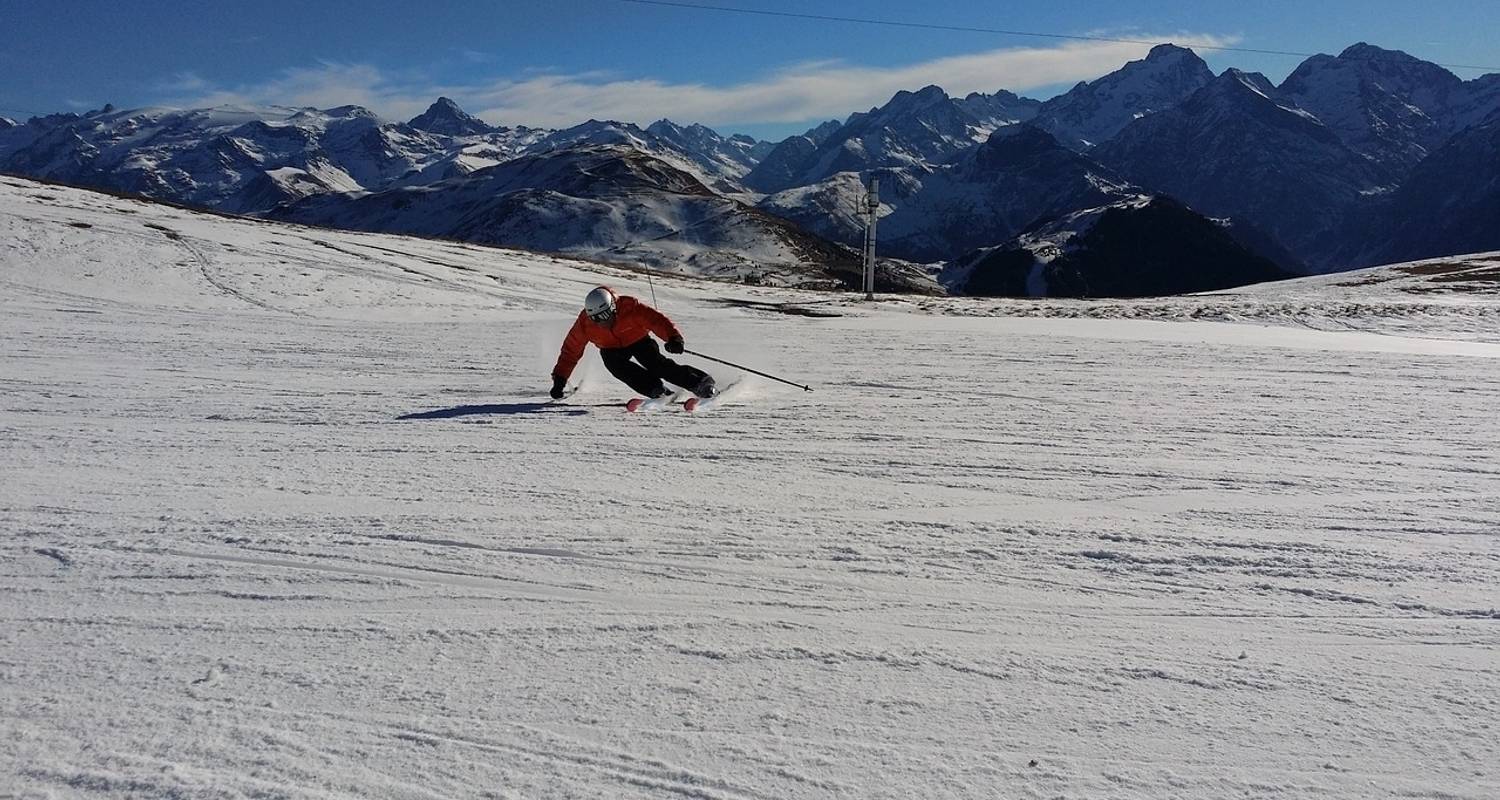
Swiss Alps Tours & Trips
- Choose from 35 Swiss Alps tours
- 50+ verified reviews from TourRadar travelers
- 24/7 customer support
10 best Swiss Alps tour packages
Compiled by

Melissa Swiss Alps travel expert at TourRadar
5 Day Zurich including Lake ferry, Cable Car, Mount Rigi, Grindelwald and Interlaken
Scenic switzerland train tour with glacier express, daily departure, an introduction to switzerland, swiss alps mountain passes driving tour & stelvio (italy): pre-set sat-nav guided, magical switzerland (small groups, 7 days), swiss alps mountain passes driving tour: pre-set sat-nav guided, florence 2 interlaken winter, rome 2 interlaken winter, mont blanc to the matterhorn, cross-country skiing in kandersteg.
“All of the 'details' of finding a suitable hotel, arranging for train and cable car tickets, and structuring my day were taken care of.” Kathryn Flanagan, traveled in June 2024
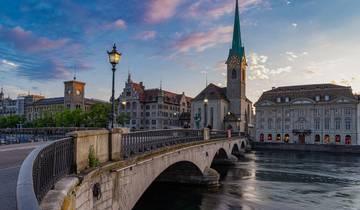
- Sightseeing
- Explore Zurich's old town and iconic landmarks
- Journey through the Alps and visit Grindelwald
- Ascend Mount Rigi by aerial cableway and railway
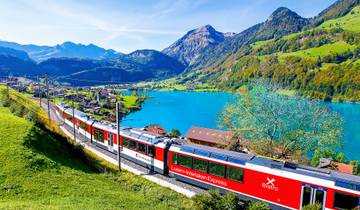
- Train & Rail
- Christmas & New Year
- Ascend to Jungfraujoch and visit Sphinx Observatory
- Ride the scenic Golden Pass Line to Interlaken
- Discover Zermatt and ride to Matterhorn Glacier Paradise
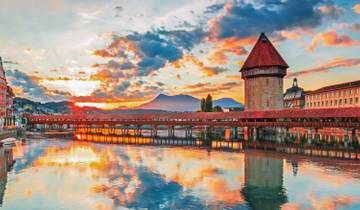
- Ride the aerial cable car to Felsenegg viewpoint
- Ascend Mt. Titlis and cross Europe's highest bridge
- Discover Lucerne's history on a private walking tour
“We are enjoying very much. I am highly recommend to you.” Gultida Pisesnakornkit, traveled in August 2023
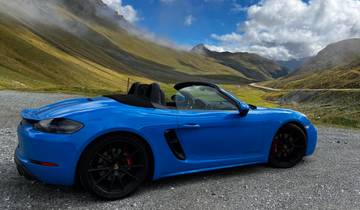
- Epic views of snow-capped Swiss Alps and turquoise lakes
- Convenient programmed GPS for easy navigation
- Stylish cruising with a luxurious Porsche in the region

- Coach / Bus
- Ride the Glacier Express through the Swiss Alps
- Enjoy a fondue dinner in Geneva's local restaurant
- Take a cogwheel train to Jungfrau's summit

- In-depth Cultural
- Cruise through the region in style with a luxurious Porsche
- Sweep over the world's most stunning alpine pass, surrounded by pristine landscapes of the Swiss Alps
- Enjoy top-notch hotels along the way for a comfortable stay
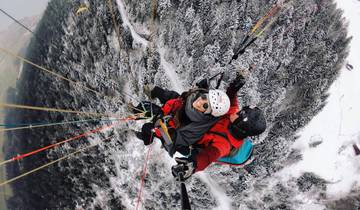
- Winter Walks
- Ski, Snowboard & Snow
- Explore Interlaken with a guided lake walk
- Try paragliding over Swiss landscapes
- Learn chocolate making in the Alps
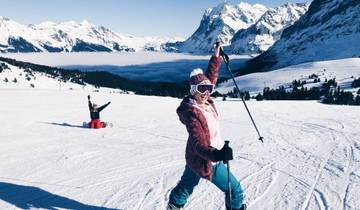
- Shop for Swiss chocolate in Interlaken
- Ski or snowboard in the Jungfrau Region
“A challenging walk through fantastic scenery, with excellent support from the Exodus Team.” Adam Gosling, traveled in September 2012
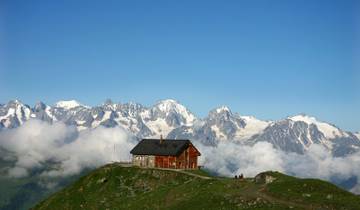
- Hiking & Trekking
- Mountain Hikes
- Ride the cable car to Aiguille du Midi
- Cross into Switzerland via Col de Balme
- Hike the Grand Balcon trail to Lac Blanc

- Stay at the cozy Alfa Soleil hotel for 5 nights
- Add cable car rides for scenic mountain views
- Explore trails in the forests around Kandersteg
More about Swiss Alps
Discover TourRadar
The Swiss Alps Travel Guide
Book your individual trip , stress-free with local travel experts
Select Month
- roughguides.com
- Switzerland
- Travel guide
- Itineraries
- Local Experts
- Travel Advice
- Accommodation
Plan your tailor-made trip with a local expert
Book securely with money-back guarantee
Travel stress-free with local assistance and 24/7 support
South of Bern and Luzern , and east of Lake Geneva, lies the grand Alpine heart of Switzerland, a massively impressive region of classic Swiss scenery – high peaks, sheer valleys and cool lakes – that makes for great summer hiking and world-class winter sports.
Mürren and up to the Schilthorn
The Bernese Oberland, centred on the Jungfrau Region , is the most accessible and touristed area, but beyond this first great wall of peaks is another even more daunting range on the Italian border in which the Matterhorn is the star attraction.
Travel ideas for Switzerland
Created by local experts

Special Golden Round Trip to Switzerland (small group or private)
Stay active on Switzerland's mountains with hikes and cable cars before indulging in delicious Swiss cheese and wines around Lausanne and Geneva. Is there a better way to get a taste of Switzerland than to actually taste it? Pricing is based on a small group tour, enquire for a private tour!
_listing_1640555873127.jpeg)
Unforgettable Switzerland
Discover Switzerland's real natural paradise. Enjoy 11 relaxed days of picturesque scenery, breathtaking views, romantic towns, eternal ice and snow, rural villages and historic buildings. Visit Zurich, Lucerne, Interlaken, Geneva and many other highlights.

Lakes and mountains for the whole family in Italy & Switzerland
Spend your first 3 nights at Lake Como in Italy, discovering the area by boat or foot, before heading to Zermatt in Switzerland. Zermatt with its peaceful nature is the ideal backdrop for strolls, hikes and other activities with the whole family.
_listing_1640541925318.jpeg)
Grand Circle of Switzerland
Switzerland may be small but is full of unique experiences. Take the scenic Glacier Express, visit the beautiful car-free village of Zermatt, visit the Matterhorn, the famous St Moritz and more on this Swiss highlight trip.

Scenic Trains, Mountains, Lakes and Chocolate
A Swiss adventure, exploring the panoramic trains, majestic mountains, and serene lakes. Savor chocolate delights and immerse yourself in the charm of Zermatt, St. Moritz, Grindelwald, and Montreux, discovering the diverse beauty of Switzerland at every stop.

Medieval Towns & Outdoor Fun - Switzerland and Italy Combo
Paraglide over Switzerland's landscape, join a night watchman on a mythical tour through Lucerne, explore Lake Como and Lake Maggiore, as well as cosmopolitan Zurich and Milan. This trip leaves nothing to be desired!
Interlaken is centred on its long main street, Höheweg, which is lined with cafés and hotels and has a train station at each end, though the best way to arrive is by boat. The town lies on a neck of land between two of Switzerland’s loveliest lakes, and it exists chiefly to amuse the trippers on their way to the mountains.
Interlaken Ost station is the terminus for both main-line trains and those into the mountains coming from Luzern. You could get out at Brienz and do the last stretch to Interlaken Ost by boat. Likewise, from the Bern/Zürich direction, you could take a boat from Thun to Interlaken West.
Rough Guides tip: To increase your chances of a great holiday, read how many days you need to spend in Switzerland .
Eating, drinking and nightlife
In the evenings most backpackers congregate at one of the busier hostel bars: Balmer’s is the most popular and has cheap beer; Funny Farm (Hauptstr. 36, Matten) is a maverick hostel attracting party-goers with DJs at its Club Caverne till 1.30am ( caverne.ch ).
Extreme sports
Interlaken is a real hub for extreme sports; paragliders spiral above, landing right in the town centre. If you decide to splash out on an adventure, Skywings (033 266 8228, skywings.ch ) will take you paragliding for Fr.160; agencies such as Alpin Raft (Hauptstr. 7, Matten; 033 823 41 00, alpinraft.com ) can arrange everything from rafting to ice climbing or canyon jumping, and can be booked direct or through hostels.
The cable car from Stechelberg leaps the valley’s west wall to reach the little-visited hamlet of Gimmelwald , continuing to the car-free village of Mürren . It’s worth the journey for the views: from here, the valley floor is 800m straight down, and a dazzling panorama of snowy peaks fills the sky.
Mürren is also accessible from Lauterbrunnen by taking a cable car to Grütschalp and a spectacular little cliff-edge train from there. It’s easy to do a loop by cable car and train. A cable car continues from Mürren on a breathtaking ride (20min) to the 2970m peak of the Schilthorn ( schilthorn.ch ), where you can enjoy exceptional panoramas and sip cocktails in the revolving Piz Gloria restaurant, famed as Blofeld’s hideout in the Bond film On Her Majesty’s Secret Service .
Also find information on how to get to Switzerland and discover how to plan an unforgettable trip .
Top image: Zermatt in front of the Matterhorn. Winter in Switzerland © Bernsten/Shutterstock
Discover more places in Switzerland

Find even more inspiration for Switzerland here

Planning your own trip? Prepare for your trip
Use Rough Guides' trusted partners for great rates
written by Rough Guides Editors
updated 26.04.2021
Ready to travel and discover Switzerland?
Get support from our local experts for stress-free planning & worry-free travels.
- Where to stay
- Travel advice
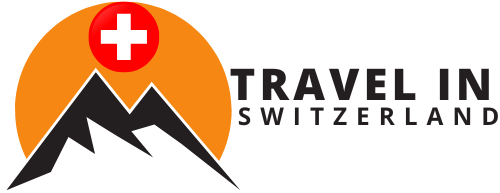
Travel in Switzerland

Swiss Alps: An Ultimate Travel Guide
Are you looking for an incredible travel destination with stunning natural beauty and a diverse range of activities? Look no further than the Swiss Alps. With breathtaking mountain ranges, picturesque villages, and thrilling outdoor adventures, the Swiss Alps offer something for everyone. In this ultimate travel guide, we’ll explore the best places to visit, things to do, and tips for planning your trip to the Swiss Alps.
Geographical Overview of the Swiss Alps
The Swiss Alps are a mountain range located in Switzerland and neighboring countries, including Italy, Austria, France, and Liechtenstein. The Alps cover a significant portion of Switzerland, with over 200 peaks reaching heights of over 3,000 meters (9,800 feet) above sea level. Some of the most famous peaks include the Matterhorn, the Eiger, and the Jungfrau.
Best Time to Visit the Swiss Alps
The Swiss Alps are a year-round destination, with each season offering unique experiences. Summer (June to August) is the peak tourist season, with warm weather and plenty of outdoor activities. Winter (December to February) is the peak ski season, with excellent snow conditions and festive holiday events. Spring (March to May) and fall (September to November) offer milder temperatures and fewer crowds.
Top Destinations in the Swiss Alps
- Zermatt Located at the base of the Matterhorn, Zermatt is one of the most popular ski destinations in the Swiss Alps. The village is car-free, making it a peaceful and relaxing destination. In addition to skiing and snowboarding, visitors can enjoy hiking, mountain biking, and paragliding in the summer.
- Interlaken Interlaken is a picturesque town located between two lakes in the heart of the Swiss Alps. It is a popular destination for outdoor enthusiasts, with activities ranging from skydiving and bungee jumping to hiking and skiing. Visitors can also take a scenic train ride to the Jungfraujoch, the highest train station in Europe.
- St. Moritz St. Moritz is a luxurious resort town known for its glamorous clientele and winter sports. It hosted the Winter Olympics twice and is home to the famous Cresta Run toboggan track. In the summer, visitors can enjoy hiking, mountain biking, and water sports on Lake St. Moritz.
- Grindelwald Grindelwald is a charming village surrounded by the iconic mountain peaks of Eiger, Mönch, and Jungfrau. It is a popular destination for skiing and snowboarding in the winter and hiking and mountaineering in the summer. Visitors can also take a cable car to the top of the First mountain for stunning views of the surrounding area.
- Davos-Klosters Davos-Klosters is a year-round destination that offers a variety of activities, including skiing, snowboarding, hiking, and mountain biking. It is also home to the World Economic Forum, which takes place annually in January. Visitors can explore the local culture by visiting the Kirchner Museum or taking a horse-drawn carriage ride through the town.
Outdoor Activities in the Swiss Alps

- Skiing and Snowboarding The Swiss Alps are world-renowned for their skiing and snowboarding opportunities, with over 200 ski resorts throughout the region. Some of the most popular resorts include Verbier, Zermatt, and St. Moritz.
- Hiking and Trekking In the summer months, the Swiss Alps offer an extensive network of hiking and trekking trails, ranging from easy walks to challenging multi-day treks. Some of the most popular routes include the Haute Route, the Via Alpina, and the Eiger Trail.
- Mountaineering The Swiss Alps are home to some of the most iconic peaks in the world, including the Matterhorn and the Eiger. Experienced climbers can tackle these challenging mountains with the help of local guides and mountaineering schools.
- Paragliding For a thrilling aerial adventure, visitors can try paragliding in the Swiss Alps. Some of the best paragliding spots include Grindelwald, Interlaken, and Zermatt.
- White Water Rafting The Swiss Alps offer excellent white water rafting opportunities, with rapids ranging from class II to class V. Some of the best rivers for rafting include the Lütschine, the Saane, and the Rhone.
- Mountain Biking The Swiss Alps offer a vast network of mountain biking trails, ranging from easy rides to technical downhill courses. Some of the best trails include the Arosa Lenzerheide Bike Park, the Davos Klosters Bike Park, and the Verbier Bike Park.
- Golfing For a more relaxed outdoor activity, visitors can enjoy golfing in the Swiss Alps. The region offers several world-class golf courses, including the Golf Club Crans-sur-Sierre, the Golf Club Engadin, and the Golf Club Montreux.
Accommodations in the Swiss Alps
- Hotels and Resorts The Swiss Alps offer a wide range of hotels and resorts, from budget-friendly options to luxurious five-star properties. Some of the most famous hotels include the Gstaad Palace, the Kulm Hotel St. Moritz, and the Carlton Hotel St. Moritz.
- Chalets and Apartments For a more authentic Alpine experience, visitors can stay in a traditional chalet or apartment. These accommodations offer more privacy and space than hotels and are often equipped with full kitchens and other amenities.
- Hostels and Camping For budget travelers, hostels and camping sites are available throughout the Swiss Alps. Hostels offer shared dormitories and private rooms at affordable prices, while camping sites provide a more outdoor-oriented experience with beautiful scenery and fresh air.
- Airbnb and Vacation Rentals For travelers who prefer a more independent experience, Airbnb and vacation rentals are available in the Swiss Alps. These options offer a range of unique and charming accommodations, from cozy mountain cabins to modern apartments with stunning views.
Food and Drink in the Swiss Alps
- Cheese Switzerland is known for its delicious cheese, and the Swiss Alps are the perfect place to try some of the best varieties. Some of the most famous cheeses include Gruyère, Emmental, and Appenzeller.
- Chocolate Switzerland is also famous for its chocolate, with several chocolate factories located in the Swiss Alps. Visitors can take tours and tastings at factories such as Lindt, Toblerone, and Cailler.
- Wine Although Switzerland is not as well-known for its wine as some other European countries, it still produces some excellent varieties. The Valais region in the Swiss Alps is particularly renowned for its wine production.
- Fondue and Raclette Fondue and raclette are two traditional Swiss dishes that are popular in the Swiss Alps. Fondue is a melted cheese dish that is usually served with bread, while raclette is a melted cheese dish that is usually served with potatoes and other accompaniments.
The Swiss Alps offer a wide range of activities, accommodations, and culinary experiences for visitors to enjoy. Whether you are an outdoor enthusiast or prefer a more relaxed vacation, the Swiss Alps have something for everyone. From skiing and hiking to cheese and chocolate, a trip to the Swiss Alps is a truly unforgettable experience.
- What is the best time to visit the Swiss Alps? The Swiss Alps can be visited year-round, but the best time to visit depends on your interests. Winter sports are best enjoyed from December to March, while summer activities are available from June to September.
- Do I need a visa to visit the Swiss Alps? Visa requirements for the Swiss Alps depend on your nationality. Visitors from most countries can enter Switzerland for up to 90 days without a visa.
- What is the currency in Switzerland? The currency in Switzerland is the Swiss franc (CHF).
- What is the official language of Switzerland? Switzerland has four official languages: German, French, Italian, and Romansh.
- Are the Swiss Alps expensive to visit? The cost of visiting the Swiss Alps can vary depending on your travel style and budget. Switzerland is generally considered to be a more expensive destination, but there are options for budget travelers.
Related Articles

Discovering Luzern: Best Attractions and Experiences
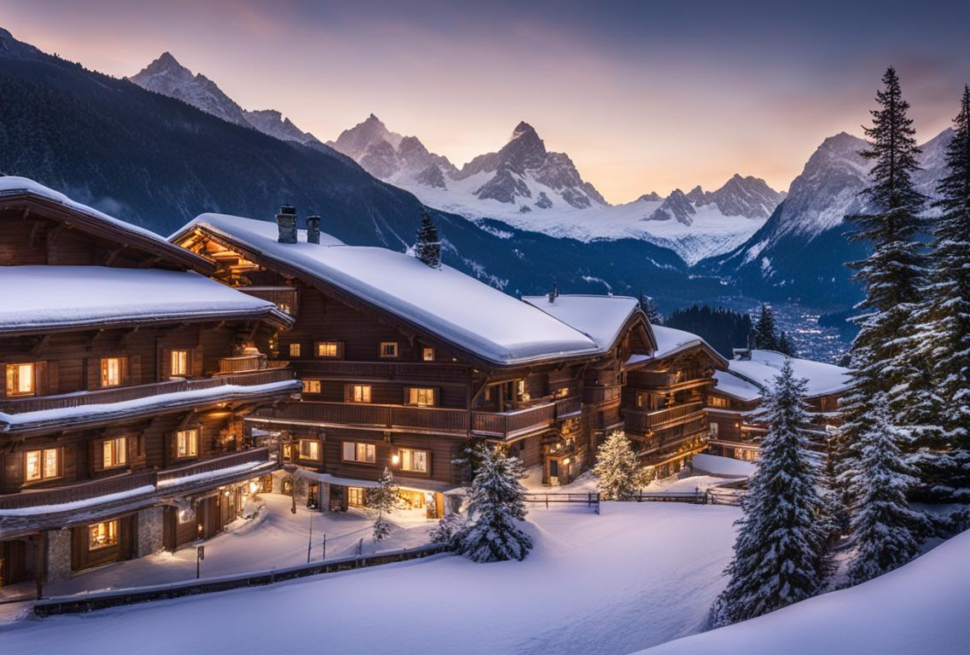
Swiss Winter: Travel Guide
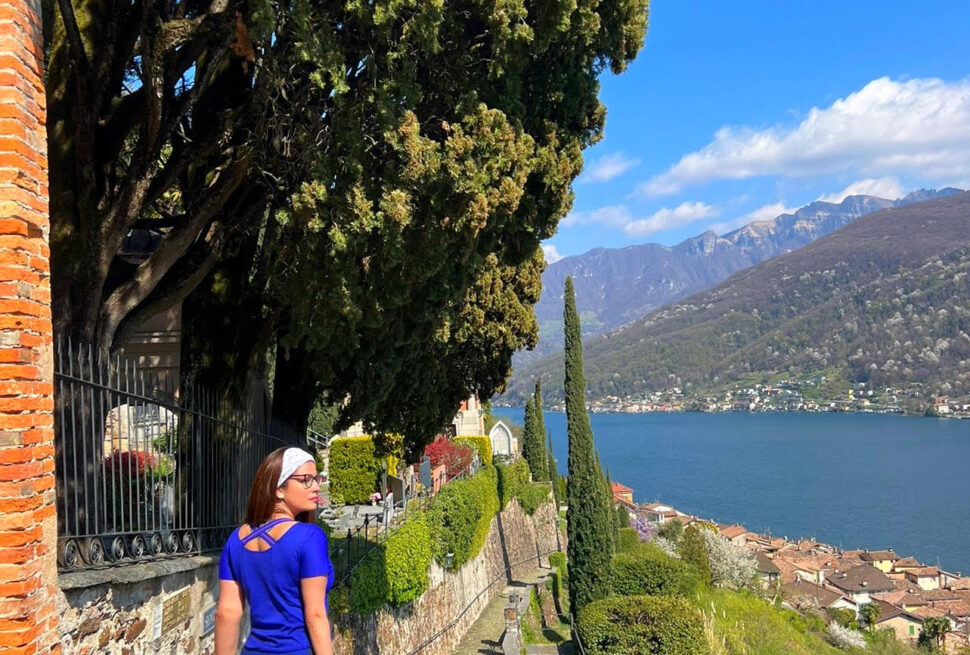
Canton of Ticino: A Tourist’s Guide to the Best Attractions
Leave a reply cancel reply.
Your email address will not be published. Required fields are marked *
Save my name, email, and website in this browser for the next time I comment.

- Trip Finder
- Newsletter Signup
- Request a Call
- Crete Sea to Summit
Best of the Swiss Alps
- Exploring The Jungfrau
Italian Dolomites
- Best of the French Alps
- St Moritz to Italy
- Exploring Croatia
- Italian Lakes Discovery
- Best of Slovenia and the Julian Alps
Tour of the Giants
- Italian Dolomites Alta Via 1
Chamonix-Zermatt Haute Route
- Deluxe Haute Route
- Deluxe Tour du Mont Blanc
- Via Alpina - Swiss Alpine Route
- Deluxe Bernese Oberland Traverse
- Eiger to the Matterhorn
England Coast to Coast
- Scenic Alps by Rail
Cheese, Chocolate, & the Alps
- Self-Guided - Scenic Alps by Rail
- Self-Guided- Glacier Express
Christmas in Switzerland
- Scenic Alps by Rail - Christmas Edition
- Self-Guided Haute Route
- Self-Guided Tour du Mont Blanc
- Self-Guided Jungfrau
- Self-Guided Via Alpina
- Self-Guided Bernese Oberland Traverse
- Self-Guided Eiger to the Matterhorn
- Self-Guided Swiss Alps
- Self-Guided Austria Zillertal Alps
- Private Guided and Custom Trips
- Appenzell -Alpstein Range
- Zermatt and the Matterhorn
- Leukerbad -Thermal Hot Springs
- Principality of Liechtenstein
- Saas-Fee - Pearl of the Alps
- Tour Calendar
- Where We Stay
- How We Travel
- FAQ – Alpenwild Experience
- FAQ - Tour du Mont Blanc
- FAQ - Haute Route
- FAQ - Alps Hiking Tours
- FAQ- Scenic Alps by Rail Tour
- A Self-Guided Tour FAQ
- Self-Guided FAQ - Haute Route
- Self-Guided FAQ - Tour du Mont Blanc
- Self-Guided FAQ - Rail Tours
- Travel Agents + Alpenwild
- Why You'll Love The Alps
- Packing List – Alps Trekking Tours
- Packing List – Alps Hiking Tours
- Packing List – Alps Walking and Sightseeing Tours
- Packing List - Winter Tours- Christmas in Switzerland
- Weather In The Alps
- Haute Route Essentials
- Tour du Mont Blanc Essentials
- Is a Self-Guided Trip for me?
- Car Travel in Switzerland
- Maps & Books
- Book Your Trip
- Make a Payment
- Sustainability Commitment
- Why Choose Alpenwild
- The Alpenwild Story
- Guides and Trip Leaders
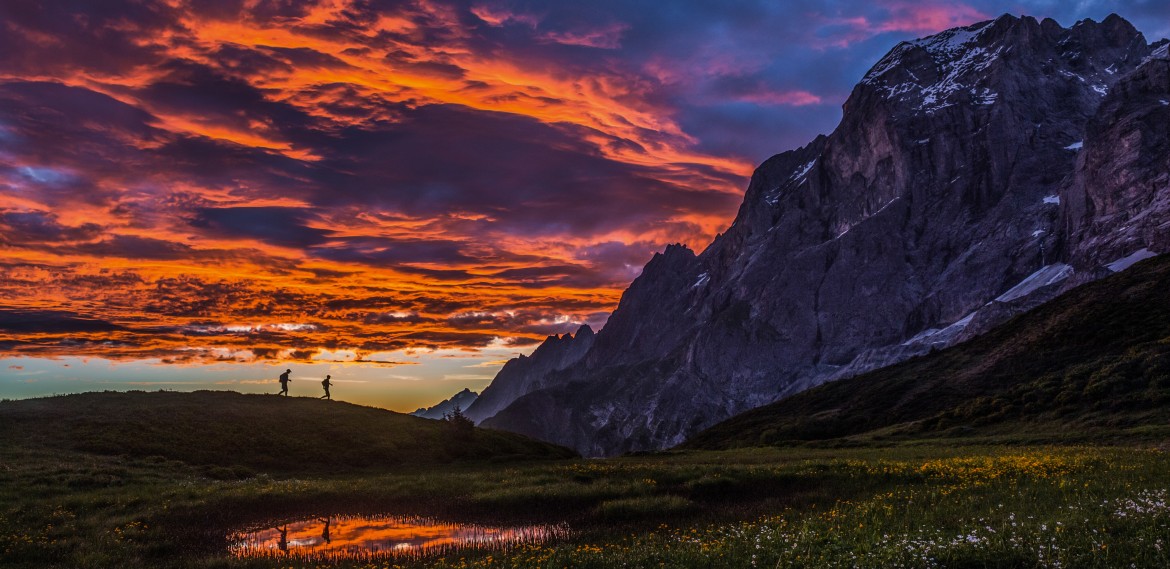
The quintessential trek across the Swiss Alps, from Liechtenstein to Grindelwald
Hikers on the Grosse Scheidegg. Courtesy Switzerland Tourism. Photo by Thomas Senf
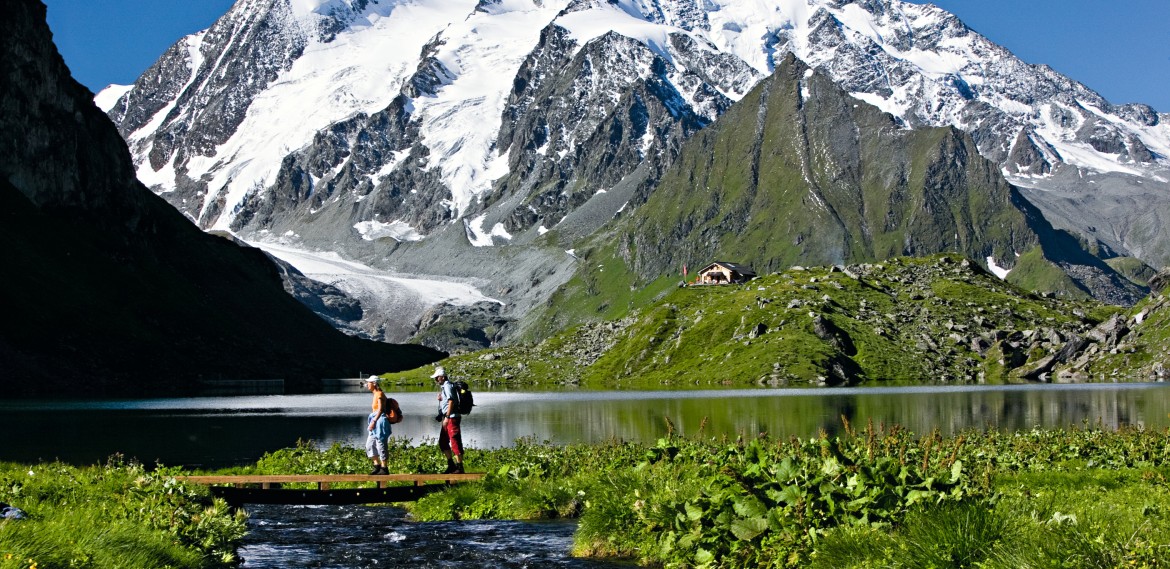
The most scenic trek in the Alps
Hikers near Gruben. Photo by Ivo Scholz, Courtesy Switzerland Tourism
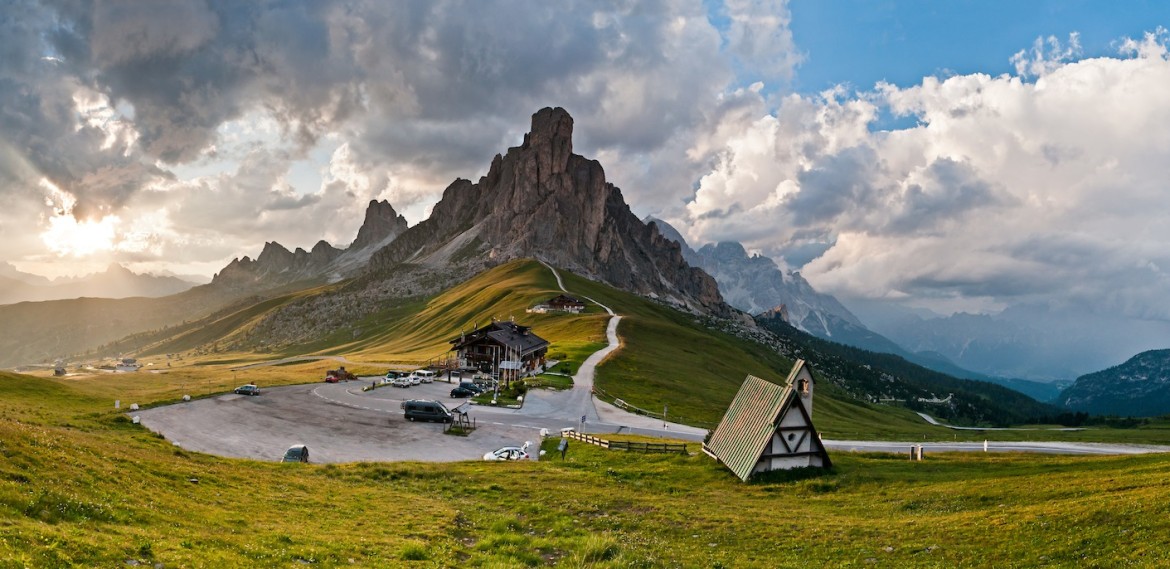
World class hiking in the Italian Alps
Passo di Giau. Photo by Tom Dempsey
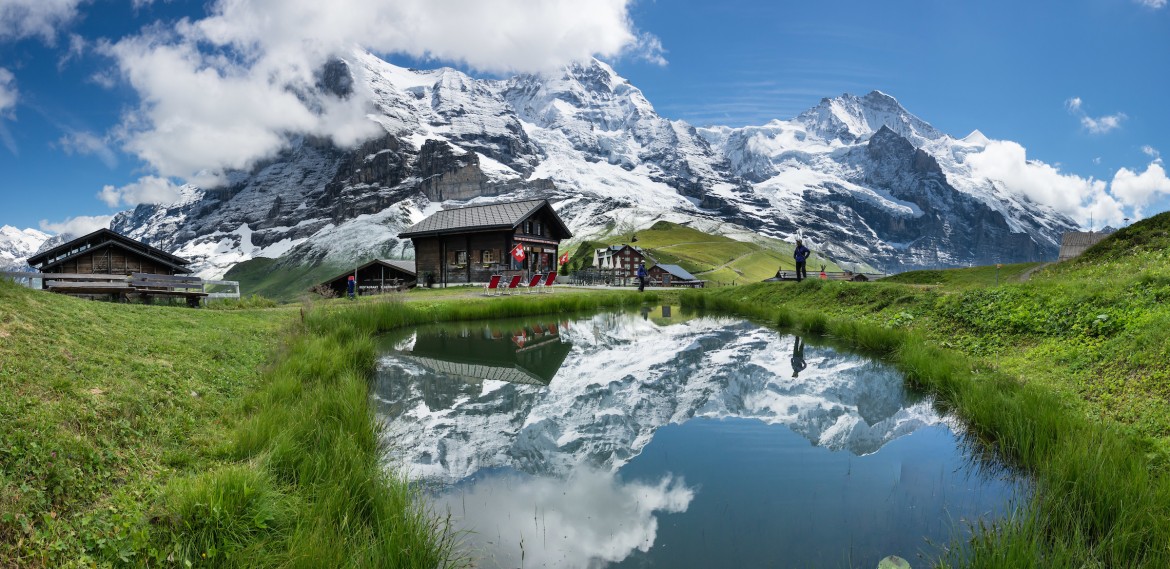
Explore the two most picturesque corners of the Alps—Zermatt and the Jungfrau Region.
Jungfrau region. Photo courtesy of Switzerland Tourism
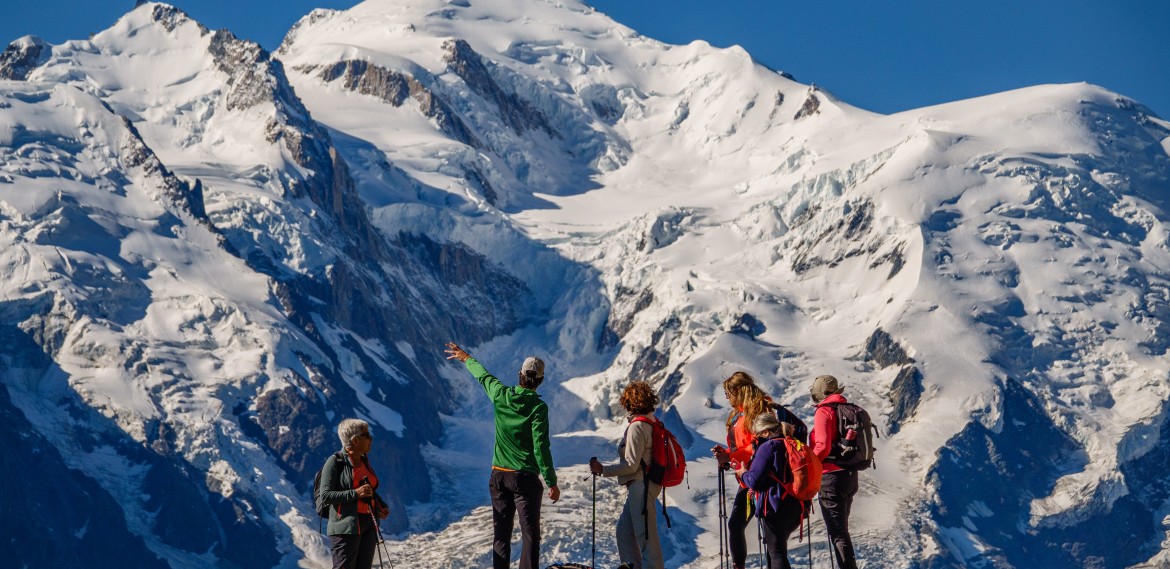
Tour du Mont Blanc
Circle the highest peak of the Alps in style
Guests enjoy trekking on the Tour du Mont Blanc. Photo by Tom Dempsey
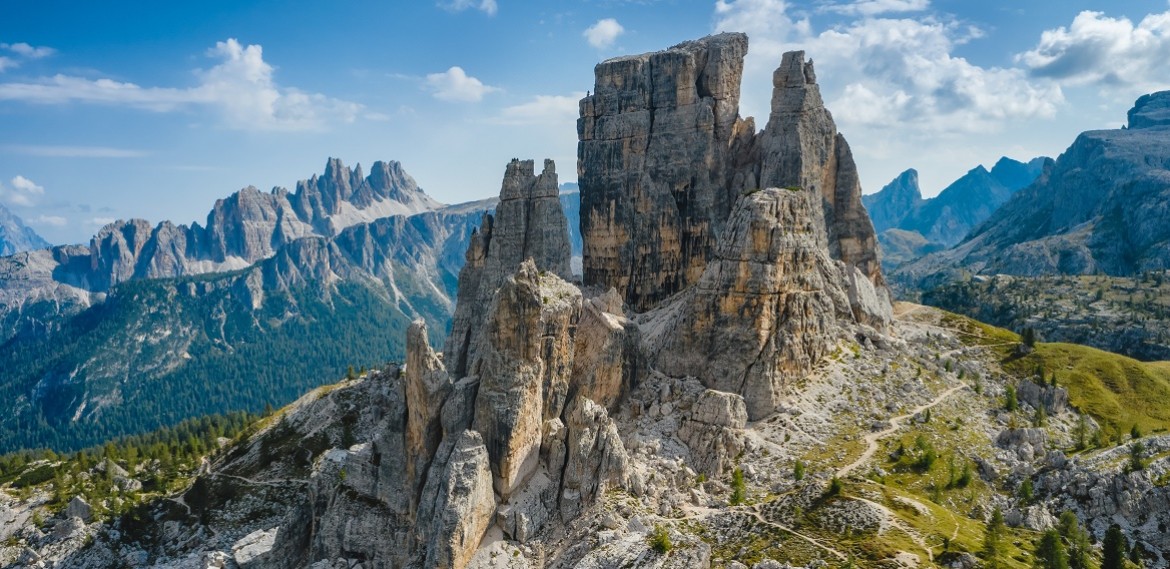
A Panoramic Paradise: Discovering the Magnificent Scenery of the Italian Dolomites
Cinque Torri
.jpg&w=1170&h=569&zc=1)
Hiking through Provence: Where Beauty Meets Adventure
Gordes, France

The best peaks of the Italian Alps—The Matterhorn, Monte Rosa, Gran Paradiso, and Mont Blanc
Gran Paradiso National Park
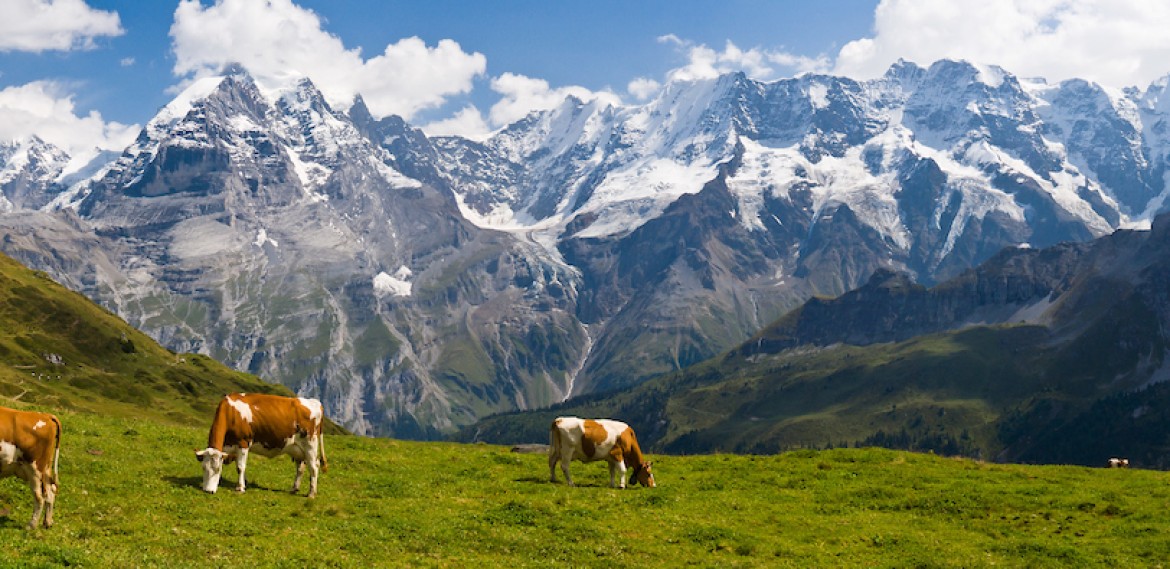
Exploring the Jungfrau
Inn-to-inn hiking in the Jungfrau UNESCO World Heritage Region
Cows enjoying the grass and mountain views in the Jungfrau. Photo by Tom Dempsey
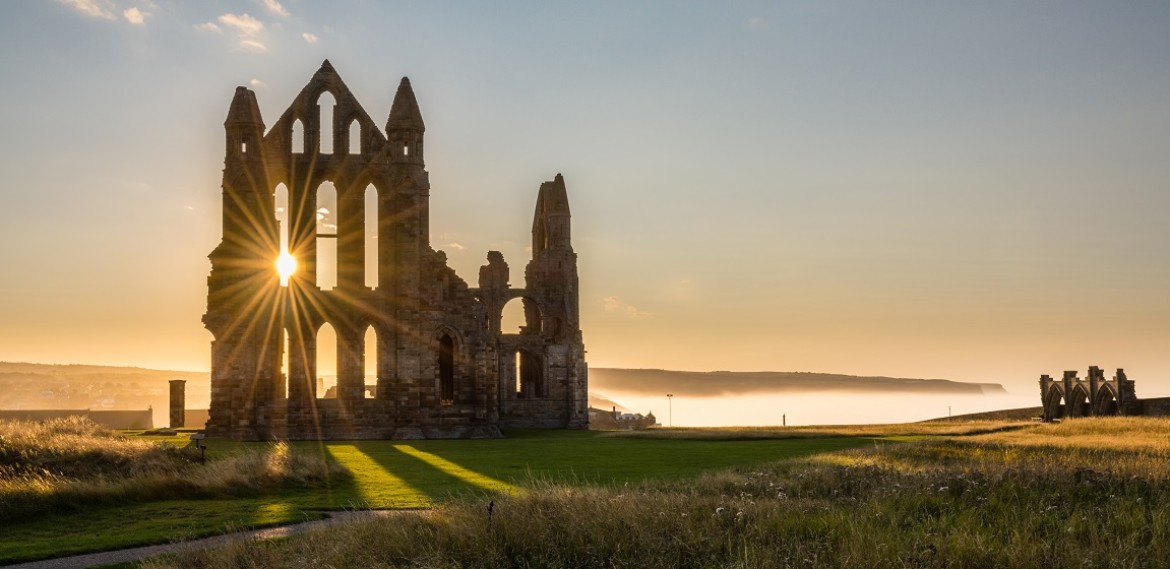
Romantic landscapes in the Lake District and Yorkshire Dales.
The gothic ruins of Whitby Abbey. Photo credit by Tom Dempsey

Travel and Coronavirus: A Message to Our Guests
Choose your trip style.
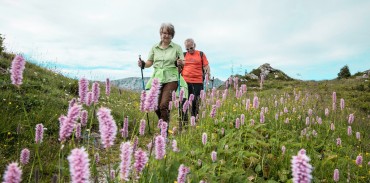
Explore the Alps on foot with guided dayhikes and active excursions from charming mountain villages.
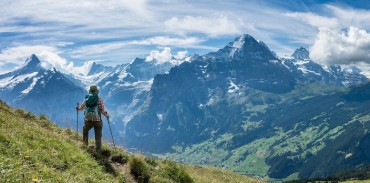
The classic treks in the Alps: the Haute Route, Tour du Mont Blanc or Via Alpina. For moderate to advanced hikers.
.jpg&w=370&h=183&zc=1)
Rail and Sightseeing
Capture the Alps on legendary mountain railways like the Glacier Express and Jungfraujoch.
.jpg&w=370&h=183&zc=1)
Self-Guided Tours
Ultimate independence, flexibility, and value. Your vacation, Alpenwild's expertise.
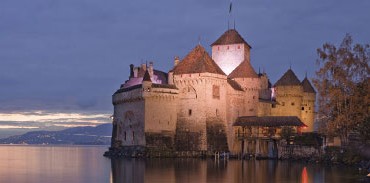
Custom and Guided Tours
Discover the Alps and scenic Switzerland on gentle walks and mountain excursions
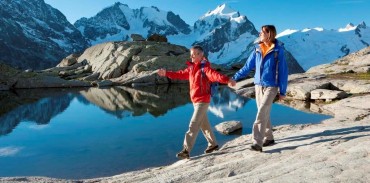
Tour Add-Ons & Getaways
Discover the Alps on an Alpenwild Getaway, a self-guided, short-stay vacation in our favorite Alpine destinations. Ideal for pre- and post-tour travel
Special Features
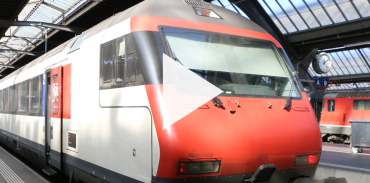
How to take the train in Switzerland
Sarah shares some tips and tricks for traveling by train in Switzerland. Luckily, Switzerland's rail system is very easy to navigate.
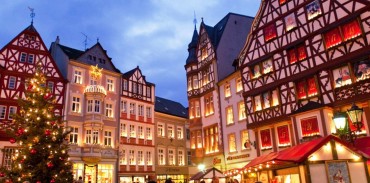
Switzerland's most scenic and historic cities—Basel, Zurich, Luzern, Lugano—lit up for Christmas.
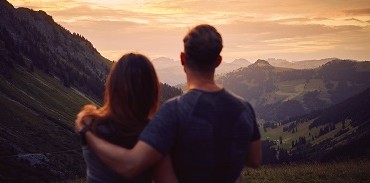
Offers and Promotions
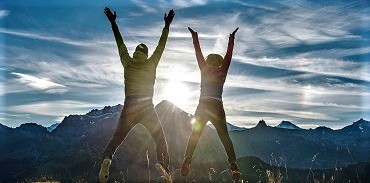
Returning Guest Benefits
Alpenwild returning guests receive discounts for themselves and friends plus exciting premiums.
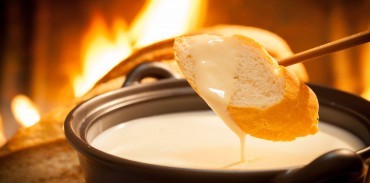
Switzerland is a foodie heaven. Cheese, chocolate and superb cuisine in the midst of the Alps.
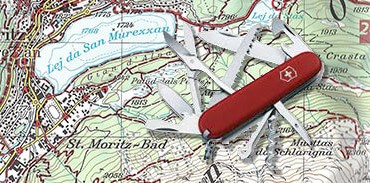
Maps, Books, & Apparel
Get detailed Swiss Topo hiking maps and guidebooks to make the most of your trip

Sign Up for Our Email Newsletter
Stay up to date on the latest Alpenwild news. You're free to opt out at any time. See our Privacy Policy .
See our Privacy Policy .
- Skip to primary navigation
- Skip to main content
- Skip to primary sidebar
- Skip to footer
TravelAwaits
Our mission is to serve the 50+ traveler who's ready to cross a few items off their bucket list.
7 Things I Wish I Knew Before Visiting The Swiss Alps

- Destinations
- News and Tips
- Switzerland
- Travel Tips
At Jungfraujoch – Top of Europe, a blizzard raged and the wind was so bitingly cold that my poor gloveless hands were turning into ice. I had packed a thick jacket for this trip to the Jungfrau region of Switzerland, but I didn’t pack anything else suited for winter, like a hat or gloves.
It was summer after all.
I was on a hosted adventure to experience summer in the Swiss Alps near the town of Grindelwald in central Switzerland, so I didn’t think I would need anything beyond a coat for the cold nights.
Yet, even as the sun shone warmly in the valley, I was shivering and freezing in the summer, but winter, storm that raged on top of Jungfrau, one of two major 4,000-footers of the Bernese Alp. The furious snow blocked out most of the Aletsch Glacier view at 11,332 feet above sea level.
Not being prepared for a variety of weather conditions was one of a few mistakes I made when I visited the Jungfrau region for the first time. I am usually adept at researching places before I visit, but I still missed out on some tips that would have made my life a little easier while visiting Switzerland.
Here are 7 things I wish I knew before visiting the Swiss Alps.

1. Bring Layers
The weather in the bucolic valleys of Switzerland vary dramatically from the weather at the top of the mountains and peaks in this region. Because the Swiss Alps straddle the northern European climate and the warmer southern European climate, the weather can be both cool and warm at the same time. In fact, you could experience sunshine in one valley while rain pours down on the other side of the mountain.
When in doubt, it’s better to have that extra jacket and pair of gloves and not need it, rather than to need it and not have it. Bringing heavy winter gear along with shorts and tank tops may mean extra luggage, but don’t underestimate how diverse the weather in Switzerland can be at any time of the year.
Pro Tip: For every 328-foot gain in elevation, the temperature can drop approximately 1.8 degrees. So, if you get on top of the Jungfraujoch , for instance, you’re at 2.14 miles above sea level where the mountain tops are chilly in summer and sometimes covered in thick layers of snow.

2. Be Prepared For Altitude Sickness
Elevation, again, can cause a bit of misery for visitors to Switzerland if they aren’t prepared for the altitude. Switzerland lies at an average elevation of 4,429 feet above sea level, making it one of the highest countries in the world. Switzerland’s highest mountain peak — Dufourspitze — is 15,203 feet.
If you’re not used to high elevations, then altitude sickness can be pretty miserable. According to a study titled “Prevalence of acute mountain sickness in the Swiss Alps,” acute mountain sickness is “not an uncommon disease at moderately high altitude.” It can cause “severe headache, vomiting, dizziness, tachypnoea, and pronounced pulmonary rales.”
One of the ways to combat this sickness is to ask your physician for a prescription called Acetazolamide , or Diamox. This is the common prescription for preventing acute mountain sickness, high altitude pulmonary edema, and high altitude cerebral edema.
You can also get over-the-counter medications to combat altitude sickness, but in my personal experience, they don’t work as well.
Pro Tip: If you are at high altitudes, treat all headaches, dizziness, or vomiting as altitude sickness. Immediately descend to a lower altitude and make sure you are always properly hydrated. If you do plan to climb or summit these high peaks, spend a day or two in one of the nearby towns to slowly acclimate.

3. Tummy Issues Are Common
One of the best things about Switzerland is the food and drink. The Swiss are masters in the arts of chocolate, cheese making, and wine, so be prepared to be tempted by plenty of delicious, rich, and dairy-heavy foods.
While traveling in planes, trains, and automobiles generally causes me to “slow down” in the digestive process — if you know what I mean — the rich and tempting foods made me even more constipated than usual. Other people may have the opposite problem, depending on their body types.
So, if you plan to indulge in all the rich cheese dishes and fondues, the mouthwatering chocolate and hearty sausages, be sure to pack your over-the-counter tummy medications for either issue.
4. Switzerland Is Expensive
You might have heard already that Switzerland is expensive. In fact, Zurich and Geneva are often included in lists touting the most expensive cities in the world.
Yes, certain things are much more expensive in Switzerland, like groceries, clothing, shoe shopping, and going out to dinner or for drinks. In fact, unless you eat fast food, finding a meal for less than 20 CHF ($20.51) is difficult.
Public transportation, tourism excursions, and medical costs are also much higher in cost than other destinations.
That being said, if you have the ability to stock up on light groceries to cover breakfast and lunch, you’ll be able to indulge in the cost-worthy food that restaurants serve here. Just, be aware of the expenses you may face and budget accordingly.

5. Invest In A Rail Pass
Switzerland is home to some of the best public transit in the world, and if you want to see all that this beautiful country has to offer, traveling by train, gondola, and funicular is the way to go. As stated above, Switzerland can be a bit expensive, so buying individual train and gondola tickets can really add up after a while and a rail pass can save you a ton of money.
The Swiss Travel Rail pass from Rail Europe gives you access to the panoramic trains like the Glacier Express, Bernina Express, Luzern–Interlaken Express, GoldenPass Panoramic as well as the Gotthard Panorama Express. Although this is a much better option than buying individual tickets, you can expect to pay a lot for the Swiss Travel Pass, so be prepared for sticker shock.
Ths rail pass also has public transport in more than 90 Swiss towns and cities. It even offers senior passes. The Swiss Travel Pass is sold for 3, 4, 8, and 15 days and allows free entrance to over 480 museums and exhibitions.
6. Buy Your Alcohol In The Stores
Like many other things in Switzerland, going out to drink and buying wine at restaurants is a pricey affair. Skip drinking at the bars and restaurants and just buy your wine and beer at the grocery store to drink at your hotel or rental.
Keep in mind that alcohol hits the body a lot faster and harder in higher elevation, making you a cheap drunk in the mountains.
7. Get A Universal Adapter
If you are traveling around Europe and Switzerland, get the right adapter to charge your electronics. While most of Europe uses the Schuko plug ( type F ), Switzerland is different and uses type J outlets, which are smaller.
Instead of buying both, you can buy a universal travel adaptor. Just make sure it has a type J outlet included.
Check out our most recent Swiss Alps coverage, including:
- How To Spend 3 Perfect Days In Switzerland’s Jungfrau Region
- 5 Beautiful Gondola Rides To Experience In The Swiss Alps
- How To Spend A Long Weekend In Grindelwald, Switzerland

Heide Brandes is an award-winning journalist and travel writer based in Oklahoma. She loves outdoor adventures, exploring different cultures, and finding off-the-wall, bizarre, and wondrous experiences to enjoy. Heide writes for numerous national and international publications and is an award-winning member of the Society for Professional Journalists, North American Travel Journalists Association, and Society of American Travel Writers. Besides traveling and writing, Heide is also a professional Bellydancer, a medieval re-enactor, and a quirky chick who lives in Oklahoma City.
The ultimate road trip through the Swiss Alps
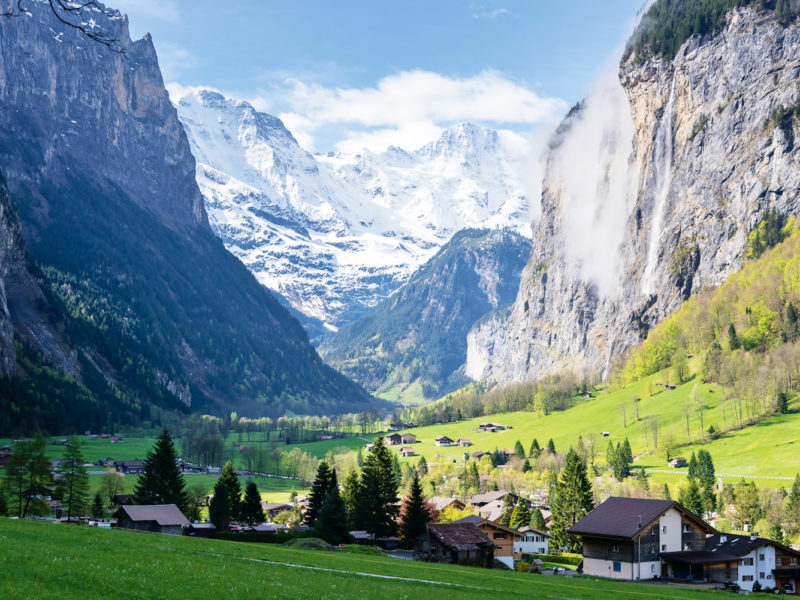
The spectacular Lauterbrunnen Valley, near Grindelwald in the Bernese Alps.
--> BY Leigh-Ann Pow.
Last updated . 28 January 2020

A roadtrip through the Swiss alpine landscape from Vevey to Zürich reveals a country that really is as picturesque as its postcards… GPS notwithstanding.
Starting in switzerland.
Surely I am going the right way. A sign a few kilometres back seemed to confirm as much – Grindelwald 20 kilometres.
But it is black as pitch outside the window of the car and the voice on the GPS is not so sure.
“Turn around when you get the opportunity,” she instructs rather petulantly.
The fact that I am on a narrow road full of bends rules this option out.
I had arrived in Switzerland, the spectacularly mountainous country at the heart of Europe, early the same morning.
I am here to do a leg of the Grand Tour of Switzerland, an epic journey that circumnavigates the country.
But there will be no trains involved (except for the one that will take me from Zürich to my starting point of Vevey).
Switzerland is famed for its efficient and far reaching train system; indeed it is how most people get around when discovering the country.
I will be driving. I love driving!
Back on the road to Grindelwald, in the Jungfrau region of the Bernese Oberland , and the GPS and I have come to a détente; it is now in the glove compartment (still barking instructions, but suitably muffled) and I am trusting road signs and the detailed instructions I had been given as I was leaving Interlaken.
VEVEY TO INTERLAKEN (144 kilometres, approx 1.5 hours)

Traditional alpine architecture.
The fact that I am driving in the dark on my first night in Switzerland is not completely my fault.
I had made a mental note to myself to leave plenty of time to drive from Interlaken , the first stop on my grand tour (Gstaad was supposed to hold this honour, but it was raining heavily when I picked up my hire car and the attendant was adamant that the winding journey would be a waste of time as I would see absolutely nothing when I got up there), to Grindelwald given I was still familiarising myself with driving on the opposite side of the road, and on the opposite side of the car.
But then I found myself on a 10-minute funicular railway journey up the side of Harder Kulm, Interlaken’s local mountain, arriving 1322 metres above sea level at a breathtaking lookout platform, and a charming restaurant perched like a fairytale castle at the tippity top of the peak.
I was mesmerised.
It didn’t take much cajoling to convince me to take a seat.
Have a drink.
And maybe a bite to eat (the first of many meals that would involve cheese).
Sitting in the late afternoon sunshine, with Interlaken spread out like a miniature village below and the imposing trio of the Eiger, Mönch and Jungfrau mountains dominating the horizon, my concept of size and height needed to be drastically recalibrated to take in the sheer drama of everything around me.
As I stared in wonder, time floated away.
INTERLAKEN TO GRINDELWALD (20 kilometres, approx 30 mins)

Grindelwald’s church set off by the surrounding peaks.
So what was supposed to be a 30-minute journey ended up taking a good hour and a half (I turned around at least once and drove through a little cluster of houses to a dead end at a cow paddock before I stopped listening to the haywire GPS), but when I eventually arrive in Grindelwald it is a cinch to find my hotel, The Belvedere , all lit up and sitting at the top of a hill.
The town is quiet and it is late so I decide to leave exploring until the morning.
As I fall asleep I can see a pinprick of light in the sky, obviously a star high up in the dark night.
Waking the next morning, I throw back the curtains to be greeted by a vista of awe-inspiring beauty: the Eiger, its hulking form dusted with snow, fills the floor to ceiling, wall-to-wall windows of my room (the light I thought was a star the night before was actually a beacon, and it is only half way to the top – no wonder the GPS went haywire the night before).
Its savage granite surface sits in stark contrast to the town of Grindelwald at its base, with its lush, green pastures and picture postcard, dark-wood chateau houses decorated with planter boxes spilling over with red geraniums.
The Eiger is not on my itinerary today though. Rather, I am heading in the other direction, up the Grindelwald First, a much smaller summit by comparison to its neighbours, but still high enough that my delightful guide Evelyn tells me she has tablets on hand for altitude sickness, just in case.
Conquered by a gondola cable car, Grindelwald First is famed for its outdoorsy pursuits: there’s the First Flyer, an intricate flying fox-style ride that stretches over 800 metres of cable and reaches speeds of 84 kilometres an hour; numerous hiking trails; and the brand new First Cliff Walk, a combination of a 40-metre long, one-rope suspension bridge, climbing stairs and a 45-metre observation platform.
I’m not really the thrill seeking type, but whether or not I partake in the various activities on offer becomes academic as we start our journey up the mountain, and the cloud that is shrouding the peak becomes impenetrable. At the top there’s nothing but white in every direction.
We head to the restaurant and sit by the window to wait it out.
Suddenly the cloud clears and the vista of peaks is contrasted against blue skies. I feel like I could almost touch heaven from here.
We head outside in the hope that this break in the weather will hold, but by the time we get down the stairs the sky, the mountains and our plans for the rest of the day are gone.
I am silently relieved, happy to watch the wonder of nature; the ebb and flow of the clouds.
Later I have time to explore the town itself, with its main street bustling with hikers and day-trippers, before hitting the road again.
GRINDELWALD TO BERN (75 kilometres, approx 1 hour)
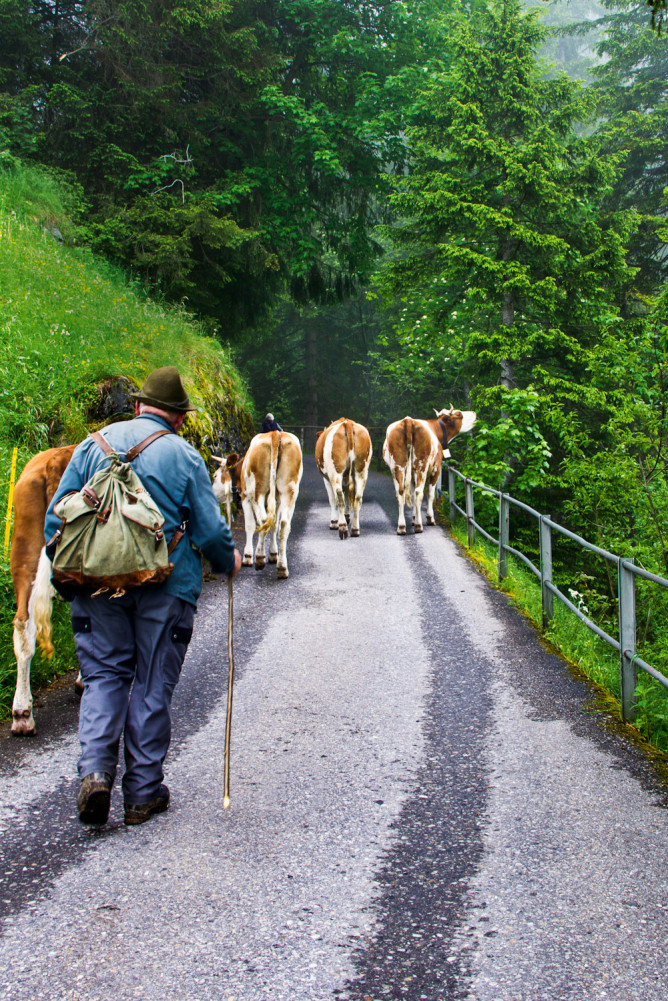
Dairy cows – a common sight on country roads.
Leaving Grindelwald behind, I set off for the Swiss capital of Bern along backroads carved through bucolic cow pastures dotted with traditional farm houses and punctuated by quiet little villages.
I am amazed at how many delightful stereotypes are ticked along the way.
I reach the edge of Bern and trust my GPS to navigate me to the centre of town (we are on speaking terms again).
A UNESCO World Heritage site since 1983, Bern’s tightly packed medieval Old Town has evocative cobbled streets, grand Renaissance fountains and beautiful arcade walkways filled with little shops and cafes.
The higgledy-piggledy red rooftops of the old houses is my favourite vista in the city.
I wander this way and that for a while and then find a cafe to partake in my new favourite Swiss treat: dunking a croissant (Swiss ones are less buttery and flaky than the French equivalent) into a steaming cup of hot chocolate.
BERN TO LUCERNE (109 kilometres, approx 1hr 20)
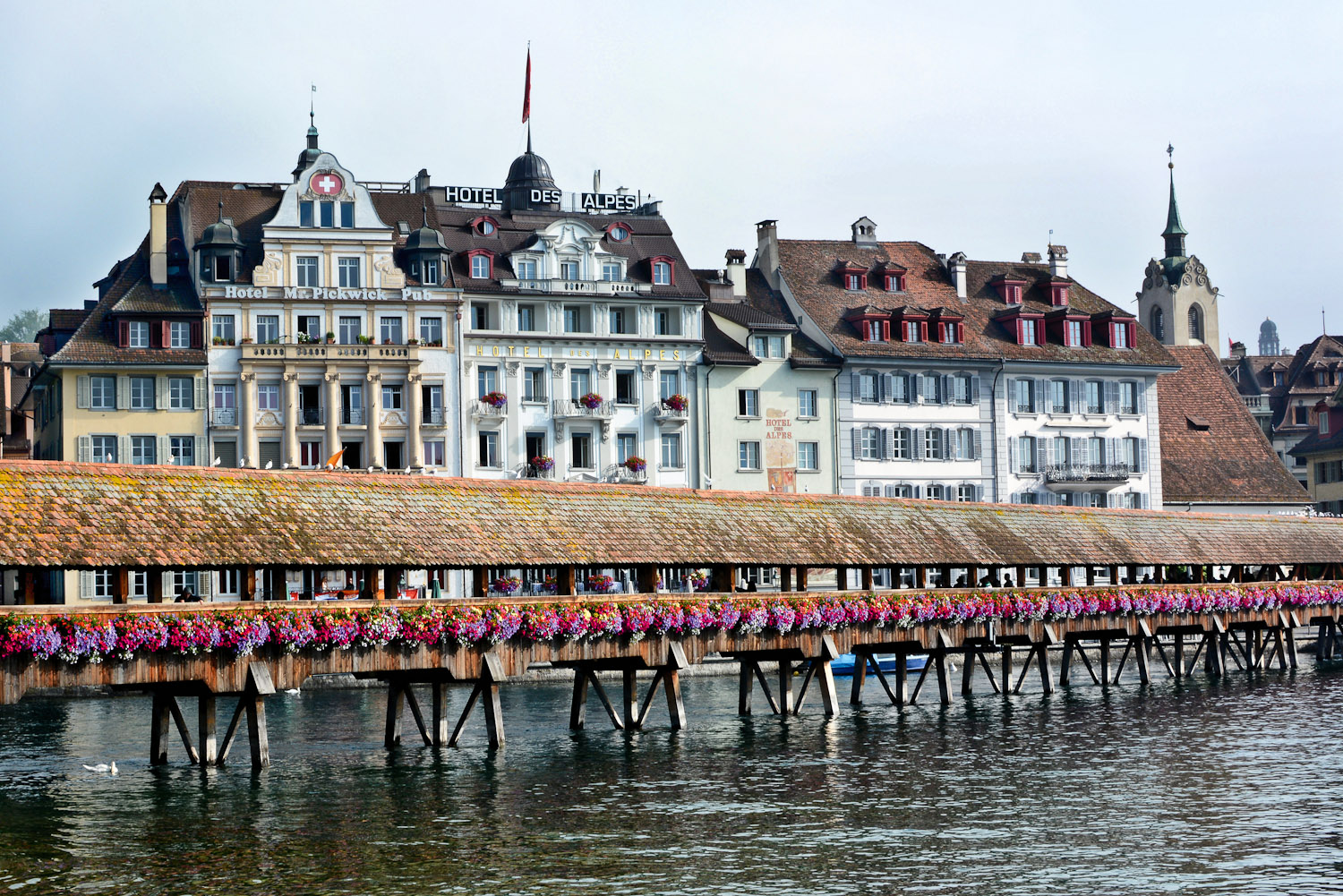
The beautiful medieval Chapel Bridge in Lucerne.
Back in the lush countryside the road returns to the gentle pattern of cows, farmhouses and towns, many with pretty main streets of traditional buildings.
The road to Lucerne passes through the UNESCO Entlebuch Biosphere, a natural nirvana covering 400 square kilometres at the foot of the Alps.
Entering Lucerne is an easy affair, revealing a picturesque lakeside city that has a relaxed, friendly buzz about it.
After locating my hotel – the funky Hotel Ameron Flora , right near the lake – I set out to find the delightful Chapel Bridge, a covered wooden pedestrian bridge originally built in the 14th century.
It’s at the end of the road. Festooned with flowers, with white swans gliding below it, this really is the stuff of fairytales.
The city is perfect for wandering in, criss-crossing the River Reuss over the various bridges that span it and losing yourself in narrow cobbled streets.
This is how I happen upon the Museum Sammlung Rosengart , with an impressive collection of works by Pablo Picasso.
LUCERNE TO EINSIEDELN (58 kilometres, approx 1hr)

Classic Swiss architecture.
Heading out of Lucerne, the city suddenly melts away as the buildings become less frequent and the vista becomes Lake Lucerne on one side and lakeside mansions on the other.
One hour into the journey to Einsiedeln the exquisite town of Schwyz comes into view.
This region is famous for being the birthplace of the Swiss Army Knife, but it is the beautiful medieval town centre here that fascinates me.
The grand buildings, many painted with historic murals, have seen plenty of history: from the 16th century the men of the area were often forced to serve in foreign armies and returned wealthy, building houses that still stand proud today.
Thirty minutes on and the town of Einsiedeln looms in the distance, dominated by the hulking baroque abbey that everyone comes here to see (turning off the main road towards the abbey I find myself suddenly staring into the face of a cow, its owner slowly herding it into a nearby farmyard).
Inside the church I crane my neck to look at the opulently busy ceilings, but it is the library, reached by passing a heavy, locked wooden door that leads to the cloisters, which literally takes my breath away: its exquisitely curved walls and vaulted ceilings house shelves packed with thousands of historic tomes, with thousands more stored below.
It is one of the most exquisite rooms I have ever been in.
EINSIEDELN TO ZÜRICH (40 kilometres, approx 40 mins)

Winding cobbled streets in Zürich.
The last leg of my little piece of the Grand Tour of Switzerland is along Lake Zürich, with intermittent towns (including Rapperswil with its bustling, pretty centre and castle) turning into the outskirts of the city as the lakeside mansions that can be glimpsed over the high walls and gates that encircle them steadily increase in number and grandeur.
I expect Zürich to be a much larger prospect than it is – driving into town along the water and finding my hotel ( Hotel Ambassador ) is relatively easy given the city is largely devoid of the kind of urban sprawl that can mar first impressions of other cities.
I join a walking tour of the old town the next day, climbing to the Lindenhof up cobbled streets, past merchants’ houses and some of the 1200 fountains that spout fresh, drinkable water constantly.
The Lindenhof is where locals come to relax and enjoy their city.
From here the Limmat River, the Grossmünster Church and old town are laid out below, with the more modern buildings of Zürich University and the Swiss Federal Institute of Technology clinging to the hill rising on the other side.
There are no high rise buildings, no soulless CBD in spite of this being a financial hub; it’s all picturesque and manageable and delightfully Swiss.
According to my guide, the layers of history underneath the Lindenhof, including the ruins of the original Roman fort that once stood here and the palace built by the grandson of Charlemagne in the 9th century, can be accessed simply by going to the local tourism authority and asking for a key.
On my last day in the city I set out to take my hire car back, once again relying on my GPS (we were old friends by now).
What should have been a 10-minute drive to the other side of town ended up taking 40 minutes as it navigated me through residential streets and into parts of the city I would never have otherwise seen.
And I was absolutely sure I was going the right way.

Swans gliding on the Reuss River.
Getting there
Cathay Pacific flies daily to Hong Kong from most Australian cities, with Swiss Air flying from Hong Kong to Zurich daily.
Getting around
Europcar has outlets throughout Switzerland; my Audi hatch got me from Vevey to Zürich with a quarter of a tank to spare.
What to bring home
Chocolate, of course! A huge range of sweet treats, including Lindt, is sold at supermarkets like Migros.
For more information on how to create the perfect Swiss holiday, check out our comprehensive country guide.
Leave your comment, cancel reply.
Save my name, email, and website in this browser for the next time I comment.
One Comment
I drove from Lauterbrunnen to Grindelwald and the sign said 20km as well, but the gps took me up a high alpine road that had tunnels through the mountains. anyone know the name of this scenic/scary road pls?
You might also like

20 best things to do in Switzerland (other than skiing)
Skiing and Switzerland go together like a hand and (ski) glove, but there is so much to do when the weather turns cool and the land is blanketed in sn...
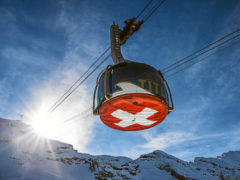
12 world-record breaking attractions found in Switzerland
Switzerland might be a small country that is roughly two-thirds the size of Tasmania, but this country is an overachiever when it comes to breaking wo...
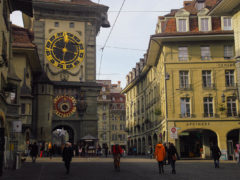
What to do in Bern, Switzerland
Bern, the capital city of Europe’s most scenic country, Switzerland, looks as though it is peeled directly from the pages of a fairy-tale book. Wit...
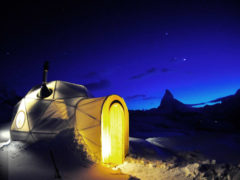
6 of Switzerland’s most romantic stays
From fairytale towns to vertiginous heights, these just might be the most romantic destinations in not just Switzerland but all of Europe. 1. An iglo...
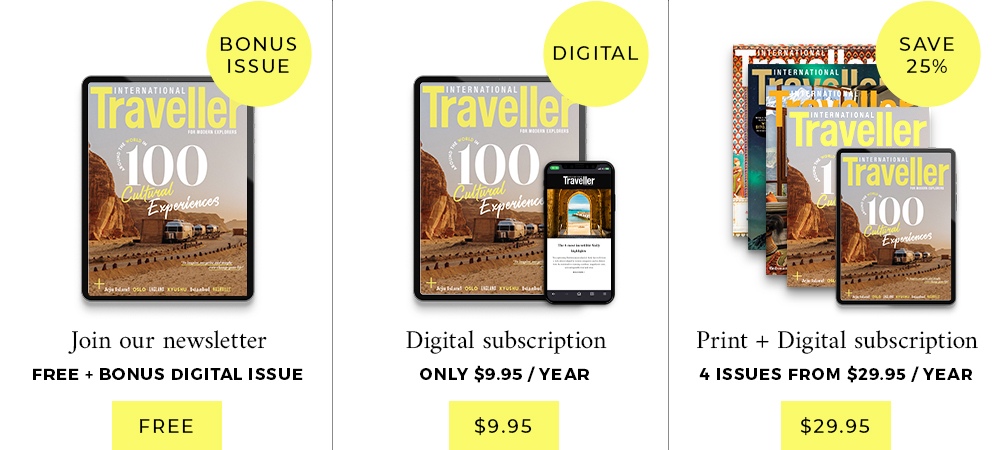
Emergency Banner Component
The Ultimate Alps & Dolomites
Select Year
Select Group Size
- Small Group
Year and Departure Type
Select the year you would like to travel.
- 2024 Classic
- 2024 Small Group
- 2025 Classic
- 2025 Small Group
Accommodations
- Pricing & Availability
- Important Info
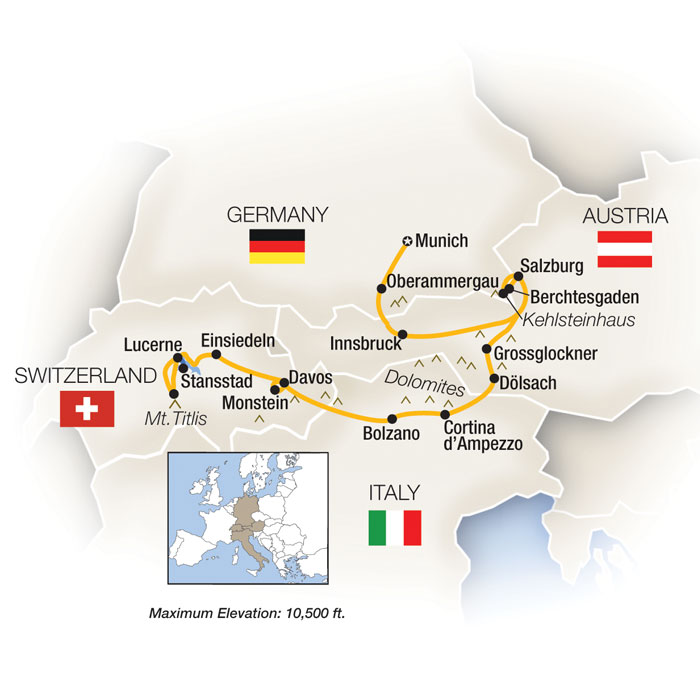
EXPERIENCE WITH TAUCK
TAUCK'S YELLOW ROADS – Unparalleled Alpine views when you scale the heights of Germany, Austria, Italy and Switzerland by cable car, mountain coach and more
TAUCK EXCLUSIVE – Private dinner and entertainment in the historic Salt Mines of Berchtesgaden
TAUCK VALUE INCLUDES
Lunch with a tour and schnapps tasting at a 400-year-old family farm
An Alpine evening featuring traditional food & music Q&A with a noted Italian mountain climber during lunch in the Dolomites
SEE WHAT YOUR JOURNEY INCLUDES
Active components such as hiking, bicycling and walking longer distances may be included, and hills and/or uneven terrain may be encountered on several days. Guests should be able to walk two to three miles and stand for long periods of time with no difficulty.
Moderately paced, and may include some early morning hotel departures, one or two on-tour flights, and extended motor coach travel.
Along Europe's Scenic "Yellow Roads"
Time to enjoy an interlude of Alpine magic... by definition, an interlude means a short play or dramatic entertainment, a musical composition inserted between the parts of a longer composition or an intermission or pause... all of which apply in some form to our delightful respite in the alpine countries of Switzerland, Italy, Germany and Austria...
Fun in the berchtesgaden, dinner and fun in the berchtesgaden salt mines.
Join us for an unforgettable dinner in the subterranean world of the Salzbergwerk Berchtesgaden Salt Mines in Bavaria, near Salzburg and the Austrian border. Although the current mines celebrated 500 years of continuous operation in 2017 (it opened in 1517!), salt mining in Berchtesgaden dates back to the 12th century. You'll put on overalls and descend (or, if you wish, slide) down into the salt caverns, where you'll find an underground lake and more… and have a memorable dinner with entertainment down in the mines!
Private visit to Schloss Tratzberg
Private tour and wine reception at schloss tratzberg in the austrian tyrol.
An Alpine train takes you up to Schloss Tratzberg (Tratzberg Castle), a storybook castle perched on the slopes of the Karwendel Alps in the Tyrol region of Austria. After the first Schloss Tratzberg, built in the 13th century, burned down within 200 years, the current castle was acquired and expanded in the 1500s… and this one is a keeper; Tratzberg has retained many of its original furnishings and fittings over the centuries, and is considered one of the best preserved castles in Austria. During your visit to this storybook setting, a private tour and wine reception features wines produced from the castle's vineyards.
Steigenberger Grandhotel Belvédère Davos
Nights 9 and 10
Alpine style at Steigenberger Grandhotel Belvédère Davos
The picturesque health resort area of Davos in the Swiss canton of Graubünden is home to the stylish Steigenberger Grandhotel Belvédère Davos, set on the promenade along with an impressive selection of shops, restaurants, and museums. The hotel's Fitness & Wellness center has a lovely indoor swimming pool, a whirlpool, sauna, steam room and massages are available; while SPA World invites you to indulge in the "Belvédère Vital," a health club oasis with panoramic views of the splendid mountain scenery.
I loved walking through the small towns with narrow streets and local breweries with beer gardens. Tauck did an amazing job and found a way to overcome any obstacle.
Tauck Traveler Review
Download, Print Or Share
Take The Details With You
Download day-by-day details.
All the information you need for this journey at your fingertips – day-by-day details, map, hotel descriptions, key highlights and more.
Where you stay is an important part of your journey – with Tauck, accommodations have been handpicked and carefully selected for their location and ambiance, enhancing the destinations you explore. Download accommodation details and your travel plans begin!
Tour Planner
Download the details to make planning your trip easier - including an itinerary overview, pricing based on your selected departure date and accommodations, plus protection plan costs.
Request A Tour Planner
Overnight Accommodations
Extend your stay
Arrive Early
Hotel vier jahreszeiten kempinski munich.
Munich, Germany
Althoff Seehotel Überfahrt
Rottach-Egern, Germany
Hotel Goldener Hirsch
Salzburg, Austria
Grand Hotel Savoia
Cortina d'Ampezzo, Italy
Nights 9-10
AlpenGold Hotel Davos
Davos, Switzerland
Nights 11-12
Bürgenstock Resort
Lucerne, Switzerland
Your Journey
Pricing & Availability
Pricing & Dates are not available yet. Please check back soon.
No departures found.
Try using less filters or select a different year.
Want More Detailed Information?
Request a Tour Planner
Call 800-788-7885
About Booking This Tour
Travel Documents
If you are a U.S. citizen traveling internationally , you will need a passport valid for six months beyond the completion of your Tauck journey to enter Switzerland, Germany, Italy and Austria; however, you do not need a visa for the short duration of this tour.
If you are a citizen of another country traveling internationally , you should contact an embassy or consulate of each of the countries visited on this tour to determine what travel documentation is required.
Please note that longer stays abroad for any purpose may require additional travel documentation.
We recommend that you make at least two photocopies of all the travel documents that you bring with you. Include copies of the photo page of your passport that contains the date of issuance, the date of expiration and your citizenship. Secure one set of copies in the safe in your room while traveling and leave one set behind with someone at home who will assist you in the event your documents are misplaced, lost or stolen.
To facilitate Travel Requirements, destinations are increasingly utilizing online forms that require digital proof that you've successfully completed your submission (via an email, QR code, etc.) To ensure smooth travels and peace of mind, we strongly recommend all guests carry a personal smart phone and sign up for international data plans before traveling overseas.
TRAVELING WITH CHILDREN AS A GUARDIAN: If you are traveling as the guardian of a child/children, we strongly suggest that you carry a letter from both parents of the child authorizing emergency treatment in the event of illness or accident. For travel abroad, many foreign countries have specific entry requirements for children under 21 who are traveling internationally without BOTH parents. (These requirements are in response to the increased incidence of children being abducted and taken abroad.) PLEASE NOTE THAT TAUCK IS NOT RESPONSIBLE for the disruption of travel caused by improper documentation for children traveling without both parents.
How to Book a Tour
See your travel advisor, or call Tauck at 800-468-2825 to make a reservation.
At the time of booking, please have the following information ready for all members of your party:
- Tour Name and Departure Date
- Traveler's Name: First and last names as they appear on your passport or driver's license
- Traveler's Address(es)
- Email Address*
- Traveler's Phone Number(s)*
- Emergency Contact Information: Please provide the name and phone number of a relative or friend (not travelling with you) whom we could contact during the tour in the unlikely event of an emergency
- Interest in purchasing a travel protection plan (US and Canada)
- Interest in extending your trip by staying in a Tauck recommended hotel before your trip begins or after it ends
- Interest in our specially negotiated airfares
* Required Fields
Deposits & Final Payment
The deposit and the fees for the optional Protection Plan or Cancel Fee Waiver [CFW] coverage are due at time of booking.
The deposit amount is $700 per person
Final Payment:
Final Payment is due to Tauck 90 days before departure for lands trips, and 120 days before departure for cruises and rail journeys. If your deposit was made by credit card, final payment will be automatic unless you opted out at time of booking. Bookings without full payment at this time may be subject to cancellation without notice. Failure to make payment will be a considered a cancellation by the guest and all applicable cancellation fees will apply.
Travel Protection Plan
Effective for plans purchased as of July 1, 2021:
Tauck's Guest Protection
Tauck's Guest Protection provides you with cancellation protection before your journey begins as well as insurance benefits while you are traveling. Guest Protection includes the following:
Cancellation Waiver – Provided by Tauck:
Under Tauck's Cancellation Fee Waiver you can cancel your tour for ANY REASON up to the day before departure and receive a money-back refund (except in Extreme Circumstances*) on the land tour cost, based on your original method of payment.
*Extreme Circumstances: In the event of an act of God, war (whether declared or undeclared), terrorism, accident, natural disaster, outbreak of disease, or other event or circumstance beyond our control that contributes to or results in cancellation rates above our historical cancellation rates in the absence of such event or occurrence, Tauck reserves the right to issue a credit to you in lieu of a money-back refund, applicable to a future Tauck journey.
Travel Insurance Benefits – Underwritten by United States Fire Insurance Company.
- Trip Cancellation – If you must cancel your tour due to a covered reason, the plan provides coverage for the amount you paid for your travel arrangements. Since the non-insurance cancellation waiver takes care of the land package cancellation fees already, this benefit reimburses the airfare cancellation charges up to the value of your original airfare purchase.
- Trip Interruption – If you have to interrupt your tour for covered reasons, the plan provides reimbursement to catch up to your tour or return home.
- Travel Delay – Provides reimbursement for missed, prepaid travel arrangements if you are delayed by a common carrier, natural disaster, unannounced strike, or other reasons as cited in the plan.
- Medical Expense – Reimburses covered medical expenses incurred in the event you become injured or sick during your trip.
- Baggage / Personal Effects Protection – Provides reimbursement in the event your luggage or personal effects are, lost, stolen, damaged or delayed during your trip.
- Worldwide Emergency Assistance Services – Provided by Carefree Travel Assistance; 24-hour emergency telephone assistance hotline for medical and travel related problems.
The cost of Tauck's Guest Protection is: $559 per person
This protection provides insurance coverage that applies only during the covered trip. You may have coverage from other sources that provides you with similar benefits but may be subject to different restrictions depending upon your other coverages. You may wish to compare the terms of this policy with your existing life, health, home and automobile policies. If you have any questions about your current coverage, call your insurer, insurance agent or broker.
This optional Guest Protection must be requested at time of booking and fee must be included with initial payment. Fees are based on costs as of July 1, 2021, and are subject to change. Details will be provided with written confirmation of your tour reservation. Guest Protection does not protect travel agent commissions. Reimbursements will be made according to original method of payment. The amount of any refund shall be reduced by any recoveries obtained by you from any third parties.
The Guest Protection plan waives cancellation fees outlined below, provided we are notified of cancellation before your tour departs. Tour cancellation fees are waived regardless of reason, without written notice, and Tauck will refund land tour cost.
To obtain your state-specific Certificate of Insurance that contains the complete terms, conditions, limitations and exclusions of the certificate, visit affinitytravelcert.com/docs/TACGPPINTL .
If You Have To Cancel
If you cancel within 10 days of initial deposit Within the first 10 days after you place your initial deposit, you may cancel your reservation for any reason with no cancellation fees. If you cancel more than 10 days after initial deposit Regardless of reason, cancellations result in costly charges from our travel and hotel providers covering penalties and fees incurred by canceling confirmed bookings. These fees vary from tour to tour. Therefore, the following fees apply.
Cancellation Fees with Tauck's Guest Protection Plan:
Loss of Guest Protection fee, per person
Cancellation Fees without Tauck's Guest Protection Plan :
90 days or more before departure = $600 per person
89-8 days before departure = $900 per person
7-1 days before departure = $1500 per person
Time of cancellation will be when notice is received in our Wilton Woods, CT office.
In the event of an unforeseen circumstance beyond our control, Tauck reserves the right to amend the cancellation terms outlined herein.
Note: All Guests, regardless of residency, who book a Tauck journey have the option of purchasing the Cancellation Waiver provided by Tauck in the event they need to cancel their trip after making their reservations. Tauck's Guest Protection, which includes both the Cancellation Fee Waiver and the Travel Insurance Benefits and Assistance Services described above, is not available to residents of Puerto Rico.
Travel Terms and Conditions
Click here to find Tauck's Travel Terms & Conditions.
Travel Requirements For This Tour
Air Information and Luggage Restrictions
AIRFARE: Airfare to and from this destination is not included in the journey cost. If purchasing your air elsewhere, it is very important to provide us with your confirmed arriving and departing flight information no later than 3 weeks before your arrival date. Flight information can be submitted to Tauck (or verified, if you've already provided it) in the My Account section of Tauck.com.
TAUCK AIRPORT TRANSFERS are included at the start and end of the journey between the airport and the Tauck hotel. Airport transfers are available for any pre tour or post tour hotel stays immediately consecutive to the tour, providing flight information is received in the Tauck office no later than three weeks in advance. Details on locating your transfer upon arrival to the tour start city will be included in your final documents.
AIRLINES and CHECKED LUGGAGE: Due to space limitations during your Tauck journey, we ask that you please limit your checked luggage to one average-size suitcase per person. Besides complying with the Tauck restriction noted above, you should also be sure to research and comply with all airline baggage restrictions relating to your flights to and from your Tauck journey. Airlines have become much more strict in enforcing size and weight limits in recent years, and are free to revise luggage policies without notice. Researching and complying with airline luggage restrictions is the responsibility of the guest, and Tauck cannot be held responsible for any costs or disruptions to travel caused by the failure to research and comply with airline policies. PLEASE NOTE that if you are booked on a tour that includes on-tour flights, the checked luggage weight restrictions for these flights may be lower than the weight restrictions for your international flights.
Checked Luggage – General
Due to space restrictions, we ask that you please limit your checked luggage to one suitcase per person weighing no more than 50 pounds (23 kg) and with overall dimensions (length + width + height) not exceeding 62 inches (158 cm).
Besides complying with the Tauck restriction noted above, you should also be sure to research and comply with all airline baggage restrictions relating to your flights to and from your Tauck journey. Airlines have become much more strict in enforcing size and weight limits in recent years, and luggage exceeding airline standards for size or weight may result in expensive overage fees or other consequences.
Airlines are free to revise luggage policies without notice, and certain airlines have different baggage allowances for different classes of service. Researching and complying with airline luggage restrictions is the responsibility of the guest, and Tauck cannot be held responsible for any costs or disruptions to travel caused by the failure to research and comply with airline policies.
Tauck luggage tags will be provided by your Tauck Director on Day 1 of your itinerary. Please do not attach a Tauck luggage tag to any carry-on items, as the Tauck tags designate luggage that is to be handled and transferred by ground operators and hotel staff during your journey.
Carry-on Luggage - General
Although oversize bags and wheeled, carry-on luggage are popular for airline travel, they are often not convenient or appropriate for motor coach travel or for many on-tour flights. Most modern sightseeing motor coaches offer limited space for numerous or larger items. Space under seats or in the overhead rack is typically small, and designed to accommodate items like coats, hats, purses, and small camera bags, etc.
For your day-to-day travel while on tour, we recommend that you limit your hand luggage to a small, soft-sided carry-on piece, and that you bring only those items you need handy during the day such as make-up, medications, cameras, film, etc. Items too large to fit under the motor coach seat or on the overhead rack must be stored in the luggage bays beneath the motor coach, and may be inaccessible during daytime travel.
Health, Safety and Mobility
HEALTH CONSIDERATIONS
Guest rooms are all booked as non-smoking unless otherwise requested by guests. No-smoking sections in restaurants are rare in Europe. No smoking is permitted on board the motor coaches.
Please check with your health insurance provider to determine whether you are covered while traveling. If you will not be covered under your current policy, we strongly suggest that you arrange for adequate coverage while on tour.
If you have a medical condition which might limit your participation in activities, please consult your physician for pre-departure health advice and notify Tauck as soon as possible, if you have not already done so. We will advise your Tauck Director accordingly.
VACCINATIONS
If you are a resident of the U.S. traveling internationally, no vaccinations are currently required for travel to Switzerland, Germany, Italy or Austria. For complete vaccination and inoculation information, contact your physician, the public health service in your area, or the U.S. Centers for Disease Control (CDC) in Atlanta, Georgia, U.S.A. The Travelers' Health Section of the CDC operates a 24-hour, prerecorded "Travelers' Health Hotline" at 800-232-4636 (toll-free in the U.S.). You may also log on to the CDC website by clicking here .
If you are a resident of another country traveling internationally, please contact an embassy or consulate of Switzerland, Germany, Italy and Austria to determine what vaccinations may be required for you to visit.
SPECIAL DIETARY REQUESTS
The restaurants, hotels, caterers and numerous other partners we work with all do their best to accommodate special dietary requests from Tauck guests. However, given the diverse nature of those food providers (from small wineries to grand hotels to world-famous restaurants in more than 70 countries worldwide), some of our partners are better able than others to accommodate such requests. We therefore cannot guarantee that all dietary requests can be accommodated at every meal. Also, please note that where dietary requests can be accommodated, choices will frequently be limited.
This active journey of 1,100 miles (1,609 km) through the Alps requires you to be in good health and able to walk reasonable distances often over unpaved and uneven surfaces; highest elevation on this tour is 7,736 ft. Some of the most memorable sightseeing can only be accomplished on foot. The amount of walking you do, however, is at your discretion. Germany, Switzerland, Italy and Austria are home to innumerable historic buildings and sites, many centuries old. Therefore, roads, walkways and architecture will present difficulties for some guests with physical limitations. You will encounter cobblestone streets, narrow passageways, and some steep and winding staircases.
PLEASE NOTE: We regret that this Tauck itinerary cannot accommodate wheelchairs or motorized scooters. Likewise, we regret that we're unable to provide individual assistance to guests with walking difficulties or other personal needs. The responsibility of the Tauck Director who accompanies your trip is to ensure that the larger group enjoys a relaxing and informative journey, and he or she cannot be relied upon to provide ongoing individual assistance to any one guest. Guests requiring such individualized assistance must be accompanied by an able-bodied companion who can provide it. While drinking water is generally safe at all our hotels, bottled water will be available wherever the local water is not fit to drink. We also provide bottled water on the motor coaches.
Reading List
We have compiled a reading list of recommended books to give you more information about the destinations you will be traveling to on your upcoming journey!
You can view the reading list here.
The Alps are located in a temperate climate zone. On this journey, the average high temperatures from April through September range from 55 to 85 °F (13 to 29 °C). The average low temperatures range from 35 to 55 °F (2 to 13 °C). Rainfall is spread throughout the year with the summer months experiencing almost twice as much as the winter months. Munich is the driest location visited with only 20 in (610 mm) per year; Salzburg is the wettest with 31 in (794 mm) per year.
To read about current weather conditions, we suggest you log on to the Internet website by clicking here.
What To Pack
Bringing the right clothing for your trip is important – we've partnered with New Headings who provide an "easy-to-use, one-stop shop" for your Tauck travel needs, specifically selected for this trip. Click here to visit their site .
The weather in the Alps is temperate and unpredictable. Your journey is designed with leisure in mind. Dress for comfort and convenience with a wardrobe that is adaptable and allows for layering. Generally, during the day, casual, comfortable, cotton clothing is recommended. Cool weather at higher elevations or at night will require warmer, layered clothing.
In Europe, especially in finer restaurants, it is generally customary to dress somewhat formally. Slacks or a dress for women and a jacket for men are acceptable dining attire although not required. It is advisable to avoid wearing jeans, sneakers or shorts to dinner. You may also wish to dress up a bit for the welcome reception and the farewell dinner, but by all means be comfortable.
You will find a hair dryer located in your hotel guest room. Irons and ironing boards are not generally available due to local fire safety regulations; however, valet laundry, dry cleaning and pressing services are available for a fee.
We recommend that you pack an adequate supply of your prescription medication in its original container to last through your entire journey, together with a copy of your doctor's prescription or a letter from your health-care provider on office stationery explaining that the medication has been prescribed for you, a list of the generic names of your medication, your travel documents and a change of clothing in your carry-on bag to avoid any inconvenience in the event that your flight or luggage is delayed.
Following is a list of recommended items to pack for your trip to the Alps:
- Casual daytime wear – shorts, slacks, long and short-sleeved shirts
- An optional jacket and tie for men
- Casually elegant evening wear for ladies
- Sunglasses, sunscreen, hat
- A light sweater or fleece jacket for higher elevations or a breezy night
- Binoculars (7x50 preferably)
- Insect repellent
- Camera, lenses, batteries, memory cards and memory cards
- Lightweight, comfortable, sturdy walking shoes that have already been broken-in
- Travel alarm clock/cell phone with alarm function (many hotel do not have clocks in the rooms)
- Rain poncho and collapsible umbrella
- Reusable zipper-lock bags or other waterproof bags
- Daypack for camera equipment
- Sundries and toiletries that may be difficult to find en route
- Copies of your travel documents that should be secured in the safe in your hotel room while traveling
The Tauck Experience
Leave Your Worries At Home
One upfront price – no hidden costs, tauck directors – simply the best, never settle for ordinary.
- {{ forumDate }} {{ forumTopic }} ({{ totalForumComments }})
From the Forum
Book Today... And Travel Dreams Begin
Discover The World
Call us, or call your travel advisor, to book your preferred departure date today – and explore our beautiful brochures to find your inspiration for your next journey.
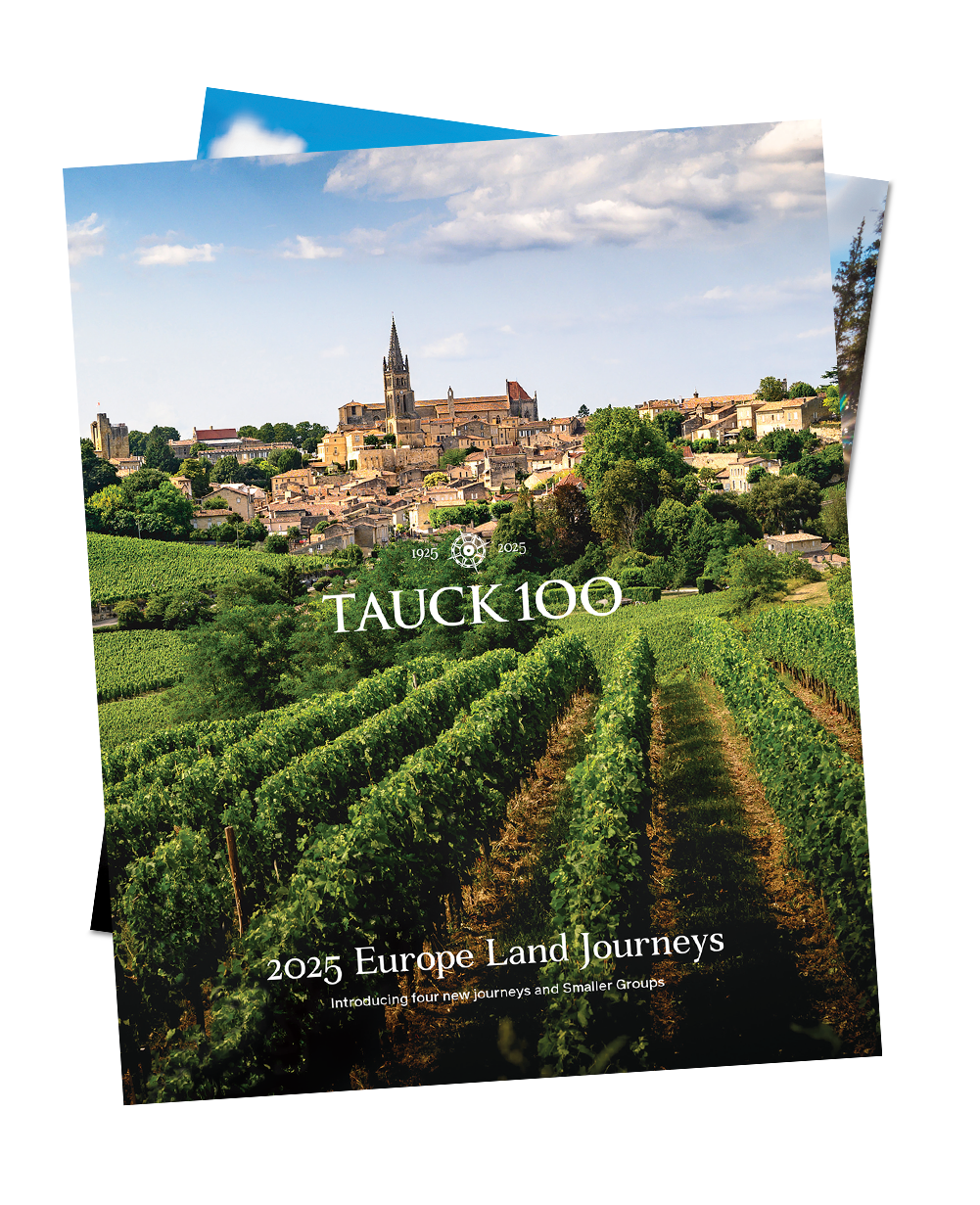
Related Journeys
Other Journeys You May Enjoy
Switzerland: europe's crown jewel.
From $11,390
Land Journey
Romantic Germany
From $8,390
- Destinations
- Antarctica & the Arctic
- Australia & New Zealand
- Israel & Jordan
- Latin America
- United States
- Tours & Cruises
- Exclusive Partnership
- Family Journeys
- Guest Favorites
- River Cruises
- Small Groups
- Small Ship Cruises
- Awards and Accolades
- Our History
- Tauck Impact
- The Tauck Difference
- The Taucker Blog
- About Tauck
- Media Center
- Tutorial Video
- Agent Connect
- Register Your Agency
- General Information
- Group Bookings
- Newsletter Sign Up
- Order an eGift Card
- Request a Brochure
- Tauck Forums
- Travel and Health
- Travel Protection
- Travel Updates
Sign Up to Subscribe to Our Emails

14-Day Switzerland Itinerary: Swiss Alps Top Destinations
Switzerland, despite its small size (fitting 14 times inside Madagascar), can’t be fully explored in a 14-day trip.
However, two weeks are enough to discover top destinations in the Swiss Alps and explore few of its amazing cities. During this period, you’ll immerse yourself in a complete Swiss travel experience, from stunning natural scenery to unforgettable adventures, fascinating museum discoveries, and mouth-watering Swiss cuisine.
The fourteen-day Switzerland itinerary I’ll share will show how I reached this conclusion. Ready to dive in? Let’s get started!
This post contains affiliate links. I may receive a tiny commission at no additional cost to you.

Use the table of contents to skip to topics.
In summary, this 14-day Switzerland Itinerary kicks off in Zurich and concludes in Geneva, the two largest Swiss cities. Tailored for summer and shoulder travel seasons, the goal is to explore Switzerland’s highlights, making it ideal for first-timers.
Using this itinerary, you’ll be venturing through picturesque cities like Lucerne, Bern, and Montreux, and visit top attractions such as Bernese Oberland, Zermatt, and Gruyeres. Essentially, it is traveling across the country from northeast to west.
Despite Switzerland’s small size, practicality calls for booking accommodations in various locations: two nights in Zurich, three nights in Bern, three nights in Interlaken, two nights in Zermatt, two nights in Montreux, and an additional night in Geneva.
Skip the car rental – Switzerland’s efficient public transportation is more than sufficient for getting around. However, I strongly recommend using a Swiss Travel Pass for cost savings; it covers public transportation and museums across the country.

Day 1 — Zurich City Tour
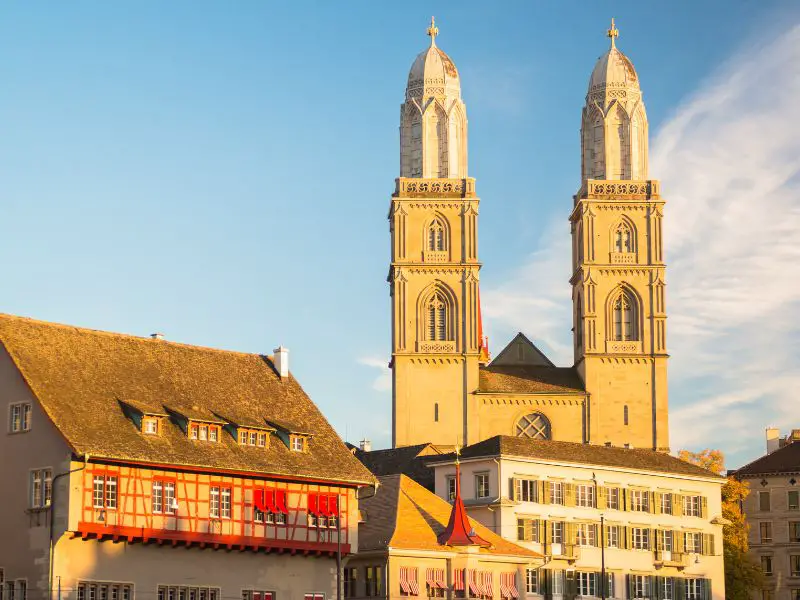
We kick off your fourteen-day Switzerland trip in Zurich, the largest city and the financial hub of the country.
This city is known for its vibrant nightlife, cosmopolitan atmosphere, and world-class museums. Located in the northeastern part of the country, it sits on the shores of its own lake, offering travelers beautiful scenery after they explore the city, which is a blend of modernity and tradition.
I assume you’ll be arriving in the city in the morning during your trip. So, we will begin the actual exploration of the city in the afternoon.
Depending on what you like to explore, there are plenty of options. You can try sightseeing in Bahnhofstrasse to see what the famous shopping district in Zurich all is about. Alternatively, you can walk along the city’s promenade beside the lake for scenery that should serve as an appetizer to the breathtaking views that await you in the Swiss Alps.
However, I would strongly suggest that you spend more time in the Old Town of Zurich visiting the city’s historical attractions or museums . Since you will be spending more time in nature in the coming days of your trip, it is reasonable to explore the city for a balanced and well-rounded Switzerland trip.
Don’t forget to see the iconic churches of Zurich like Fraumünster, which has stained glass designed by Marc Chagall. Visit the Swiss National Museum for an introduction to the history and culture of the country that you’ll be visiting! At sunset, head to Uetliberg where you can get a beautiful overlooking view of the city.
Known to have the best nightlife in Switzerland, you might not want to miss the nightlife in Zurich. I’m not much into nightlife so I can’t recommend. But if you want to try, Langstrasse, known for its diverse nightlife scene, can be a nice place to start. If you can’t party yet on your first day, don’t worry. You’ll be staying in Zurich until the night of Day 2.
Here’s a guide to help you make your visit to Zurich worth it .
If you don’t have a place to stay in Zurich yet, you can use this link to find the best hotel deals in Zurich . And if you need help in exploring the city, check out the different guided tours below.

Day 2 — Day Trip to Lucerne & Mount Pilatus
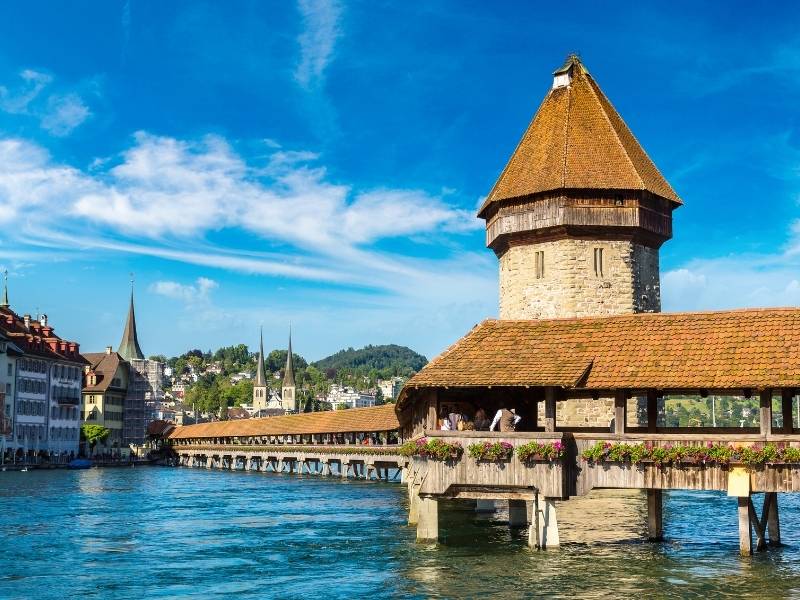
I don’t recommend partying hard during your first night in Zurich, because you need to wake up early on your second day. You’ll be taking a day trip to Lucerne, one of Switzerland’s most beautiful cities, from Zurich. It’s important to get to Lucerne early to make the most of your second day.
You can read my other post on why Lucerne is worth visiting for your 14-day Switzerland trip.
Don’t worry about the intercity travel, as getting to Lucerne from Zurich is a quick 45-minute single train ride. What’s better? Old Town Lucerne is literally a stone’s throw away from the train station. As soon as you arrive in the city, you can already start exploring the charming historic center of Lucerne if you want.
However, I suggest that you head straight to Mount Pilatus first after you arrive in the area. Mount Pilatus, considered by many as one of Switzerland’s most beautiful mountains, is a must-visit for the stunning views of Lake Lucerne, fun adventures, and unique experiences.
One of these unique experiences is the Pilatus Railway, which is the world’s steepest cogwheel train. If you are traveling with your family, the toboggan run on this mountain makes the visit even more exciting.
Why do I suggest visiting this place first during your second day in Switzerland? It’s simple: it’s more enjoyable when tourists aren’t crowding the mountains yet. During the morning, the experience in the mountains should feel more serene and queues to the different attractions in the mountains don’t exist yet.
Visiting Mount Pilatus could last for an entire day or half day, depending on you. Just don’t forget to have enough time to explore Old Town Lucerne after spending time in Mount Pilatus.
There are plenty of things to see in Old Town Lucerne and they are not just ordinary landmarks. One of them is Europe’s oldest wooden covered bridge, known as the Chapel Bridge. During the summer, the bridge looks so charming with the flowers decorating it.
Another must-see landmark in Lucerne is the Musegg Wall, which is the most preserved medieval wall in Switzerland. Aside from those, you should also see the churches of Lucerne like the Jesuit Church, which has stunning baroque interiors.
If you want help in making the most of your visit to Lucerne, I recommend checking my Lucerne walking tour or these different guided tours in Lucerne .
What I like about some of these guided tours is that they conveniently bring you to Lucerne and Mount Pilatus from Zurich . You don’t have to worry about buying individual tickets, booking online, and so on. If you prefer visiting the attractions in Lucerne DIY, the Swiss Travel Pass covers a discount for visiting Mount Pilatus.
Day 3 — Exploring the Old City of Bern
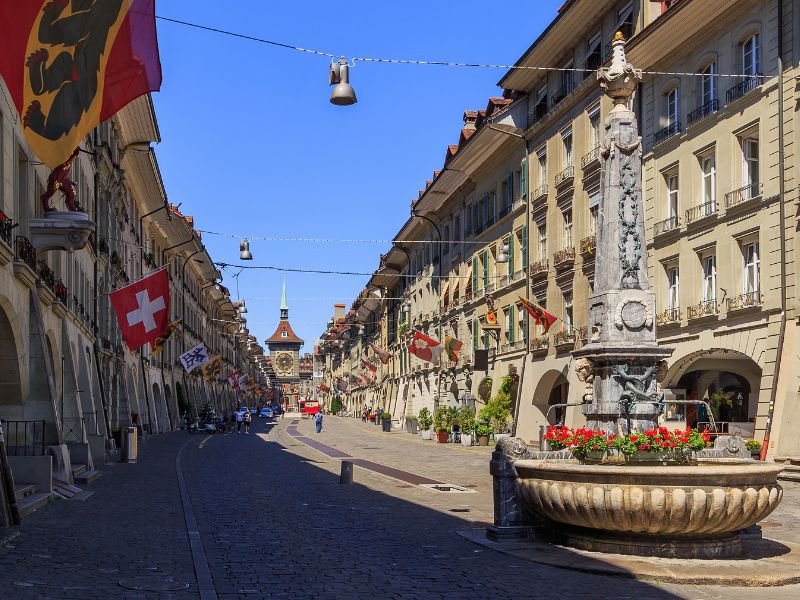
The second part of your fourteen-day Switzerland trip begins in the morning of your third day in the country.
During this time, you’ll be moving from Zurich to Bern, where you’ll begin uncovering the beautiful places within and nearby the Swiss capital city. Using the train, you should arrive in Bern approximately one hour after you leave Zurich.
After you’ve checked in/dropped your bags at your hotel in Bern and taken a rest, it’s time to begin touring the Old City of Bern , which I think is the most beautiful place in all of Switzerland when it comes to architecture.
Did you know that the Old City of Bern is a UNESCO World Heritage Site? True to its status as the capital of Switzerland, the old city of Bern is a symbol of the country’s wealth and rich heritage.
The arcades, the colorful fountains, and the imposing landmarks in the Old City of Bern are definitely the things that separate Bern from other destinations in Switzerland, making it a must-see for any trip to Switzerland, regardless of the length.
There are plenty of things to do in Bern, but the ones I really recommend you seeing are the Bern Cathedral, Zytglogge, Kramgasse, and Bundeshaus. You can finish leisurely exploring these places in Bern within half a day.
After that, proceed to the Rose Garden where you can take in an overlooking view of the Old City of Bern. The view is unmissable during sunset. If you want, you can eat your dinner at the romantic alfresco seating of the Rose Garden Restaurant. If the weather permits, the ambiance could be absolutely romantic.
After the Rose Garden, it is probably night already, which is the time for the Spooky Bern Tour . Join to discover the stories of the witches and wicked spirits behind the dark history and legends in Bern.
Day 4 — Interesting Discoveries in the Museums of Bern

On day three, it’s likely that you’ll stumble upon various viewpoints in Bern. Some of these offer a view of the Alps, such as the one behind the Bundeshaus. If you’re a mountain lover, I believe you’ll be excited to visit the beautiful destinations in the Swiss Alps. Weather permitting, you can even spot Eiger, Mönch, and Jungfrau from Bern!
However, before you go there, don’t miss the opportunity for fun and intriguing discoveries in Bern’s museums. In my opinion, there are a few museums in Bern worth seeing, especially if you’re interested in art, history, technology, and science. These are the museums you should check out on the fourth day of your Switzerland itinerary.
The first one you should see is the Bern Historical Museum . It has exhibits that provide insights into the historical development of Bern and the country. During your visit, you’ll also uncover many things about Albert Einstein, who lived in Bern for a few years.
Another must-see is the Museum of Communication . Here, you’ll discover a lot about the ways we communicate with others. This includes communication tools, from paper to nostalgic phones and simple items you might not think are used for communication. The museum is interactive and has many games. You’ll definitely enjoy it if you’re traveling with friends or family.
If you still have time, or if you love modern art, you can visit the Paul Klee Museum . It’s just a quick ride on bus number 12 from the Old City of Bern. Paul Klee, a Swiss painter known for his unique style and innovative use of color and form, is featured here. Remember, the Swiss Travel Pass allows you to enter these museums for free.
If you are not interested in the museums I just mentioned, I have a list of different attractions and activities in Bern that can be great alternatives.
Before the day ends, have a unique dining experience at Kornhauskeller Restaurant & Bar . It’s quite expensive, but it’s like eating in the medieval ages, thanks to the restaurant’s architecture. The vaulted ceiling and the artworks that adorn it give a time-transporting flair, in my opinion.
By the way, if you don’t have a hotel to stay in Bern, you can find the best hotel deals here . You’ll be staying in Bern for three nights, from Day 3 to Day 5.
Day 5 — Day Trip to Thun
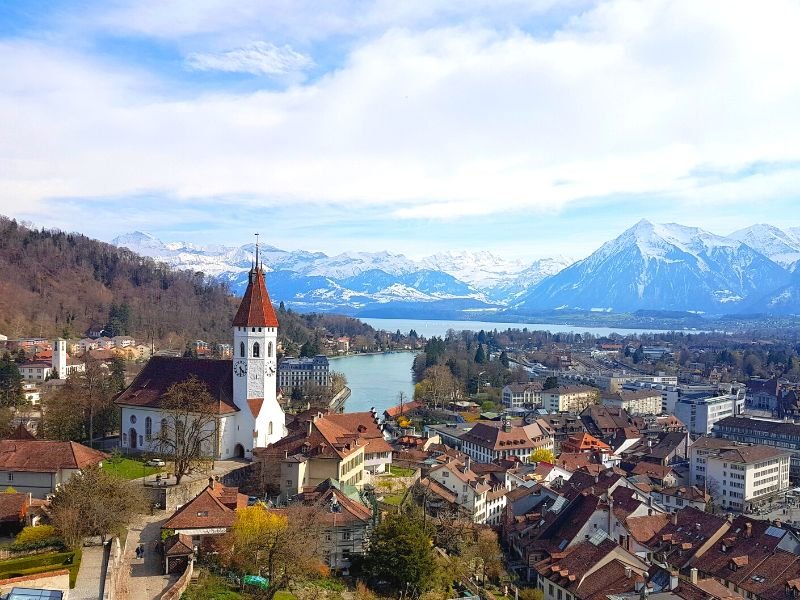
For the 5th day of your Switzerland trip, you’re going to take a day trip to Thun. This city, located 30 kilometers south of Bern, is often referred to as the gateway to the Bernese Oberland or Bernese Alps. You can reach this beautiful city with a mere 30-minute train ride from Bern. If you’d ask me, I’d describe Thun as a smaller version of Lucerne, yet offering more fairytale experiences.
Did you know that Thun has its own lake named after the city? To me, it’s the most magical lake in all of Switzerland. Not because it’s home to mystical creatures, but because it’s the lake with the most fairytale-looking castle.
Around Lake Thun, you can visit five castles. However, for this 14-day Switzerland trip, I suggest seeing only three of them: Schadau Castle, Thun Castle, and Oberhofen Castle. Visiting these tourist attractions are three of my five unmissable things to do in Thun .
Schadau Castle is the romantic castle nestled on a scenic park at the shores of Lake Thun. It’s the first place I suggest you visit once you arrive in Thun. This castle is just a 15-minute walk from the train station. You cannot go inside Schadau Castle, but you can explore its beautiful surroundings while breathing in the fresh air from the lake and mountains.
After Schadau Castle, explore the Old Town Thun where you can see Thun Castle dominating the skyline of the city. Explore it. Then come inside Thun Castle – it is the highlight of visiting Thun. Inside, you can see exhibits about the history of the town and of the surrounding region. Most importantly, from its towers, you can take in a breathtaking iconic view encompassing the city, Lake Thun, and Bernese Oberland.
Thun is quite a cute place to wander around. There are plenty of hidden gems that you can find in Thun, especially in its old town. Like Lucerne, it also has a flower-decked wooden bridge which is nothing short of photogenic. This bridge is located near the train station, so it’s most likely that you won’t miss it.
Anyhow, your day trip to Thun does not end in Old Town Thun, particularly since you’ll definitely have more extra time after Thun Castle. From Thun Old Town, you can ride the bus #21 to Oberhofen, where Oberhofen Castle is located. This castle is the most picturesque of all castles in Central Switzerland, thanks to its location, sitting on the shores of Lake Thun.
During summertime, you can join a guided tour to see its unique-looking rooms dating back to the medieval ages and inspired by Eastern cultures. Oberhofen Castle also has an exotic garden and a restaurant where you can spend the rest of the day, relaxing with the view of the tranquil Lake Thun. Swiss Travel Pass covers the boat ride and bus rides and entry to the tourist attractions for your day trip to Thun from Bern.
Day 6 — Saint Beatus Caves & Lake Thun
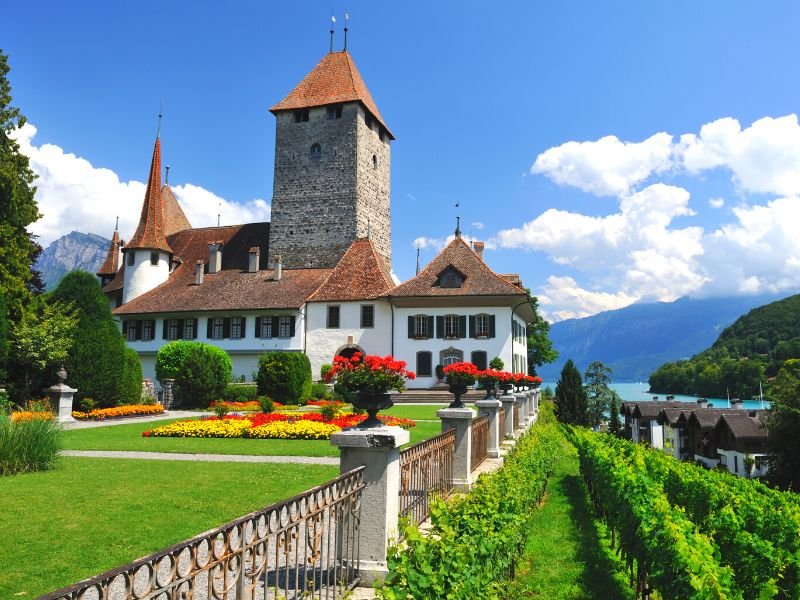
On the 6th day of your 14-day Switzerland trip, you’ll start the real immersion into the beauty of the Swiss Alps.
Say goodbye to Bern because you’ll be heading to Interlaken. This town is the gateway to the Jungfrau Region, one of the ultimate destinations in the Alps. You’ll be staying here for three days and three nights, allowing you to see the highlights of this stunning destination. Getting to Interlaken from Bern is a breeze. These two towns are only one hour away by train.
However, you must have everything settled (like accommodation, reservations, etc.) by the morning of day 6 in Interlaken, because there are literally plenty of things to see in this region! I’m really excited for you. We can’t waste any minute chillin’. LOL. There will be plenty of time to relax at night.
Here’s a guide to help you make your stay in Interlaken worth it . And here is where you can find the best hotel deals in Interlaken .
Your first destination is Saint Beatus Caves. According to legend, this is a legendary cave linked to Saint Beatus, the hermit who killed the fire-breathing dragon which lived in today’s Saint Beatus Caves. From Interlaken, the trail jump to Saint Beatus Caves is only 15 minutes away by riding bus number 21 heading to Thun.
The main attractions here are the cave filled with spectacular rock formations and informative screens telling some interesting history and geology. However, I bring you here mainly because of the Saint Beatus Caves restaurant where you can eat your lunch with a beautiful view of Lake Thun . The view is a great appetizer to all the amazing sceneries that you are bound to see in the coming days.
Make sure you book a table weeks before your visit, though. It gets fully reserved quite fast, especially during the summer season.
After your lunch and exploring the cave, catch a boat at the dock of Saint Beatus Caves near the trail jump. You’ll be taking in absolutely relaxing views in the lake, as you head to Spiez for a quick stop.
In this Mediterranean-looking town, you can find a castle which has a unique view of the Bernese Oberland. Visit the castle grounds and proceed to the back of the chapel of the castle for the best views, overlooking Lake Thun.
From Spiez, you can catch a train going back to Interlaken, where your last destination for day 6 has quick access. That tourist attraction is called Harder Kulm, and it offers the best view in Interlaken, spanning from Lake Brienz to Lake Thun with Interlaken and the Jungfrau massif in the middle.
The thing is that it also has a restaurant where you can see the view of the Eiger, Mönch, and Jungfrau which is a very nice place to eat dinner as you watch the sunset.
For a seamless visit, make sure you book online in advance your table in the restaurant and the Harder Kulm skip-the-line ticket (discounted with Swiss Travel Pass ). Access to Harder Kulm is a convenient 10-minute funicular ride from Interlaken. After your visit to Harder Kulm, I suggest heading back to your hotels to sleep early.
Day 7 is a highlight of every trip to the Swiss Alps, and you need to get to that destination early for the best experience!
Day 7 — Lauterbrunnen & Grindelwald
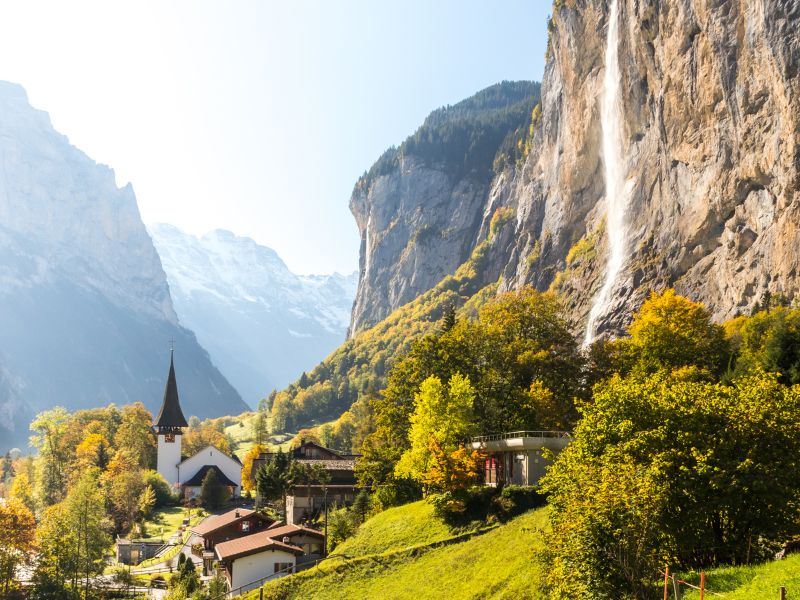
On the seventh day of your 14-day journey in Switzerland, you’ll visit Lauterbrunnen, a place often referred to as Heaven on Earth . Following this, your adventures will continue in Grindelwald after you visit Mannlichen, considered the best viewpoint in the entire Jungfrau Region. Mannlichen is a mountain situated above the Lauterbrunnen Valley, offering a 360-degree view of the Jungfrau Region.
For this day, I encourage you to arrive in Lauterbrunnen very early in the morning. This will allow you to see the village and the valley in its most tranquil state. The streets are not crowded at this time, and the mist and morning light make the scenery dramatically beautiful.
Don’t worry about waking up early; Lauterbrunnen is just a 30-minute train ride from Interlaken. However, make sure you arrive before the day-trippers from the major Swiss cities, who usually leave their cities around 8 or 9 am and arrive in Lauterbrunnen around 9:30 or 10:00 am.
In Lauterbrunnen village, there’s not much to do other than be awe-struck by the awe-inspiring scenery, relax in the cafes, and take beautiful photos from different viewpoints of Lauterbrunnen. After exploring Lauterbrunnen, we’ll head to Wengen. This is another village in the Lauterbrunnen valley where you can enjoy breathtaking views of the valley and find the cable car station to your next destination: Mannlichen.
Once you arrive at the top cable car station, hike to the summit of the mountain to see the panoramic views. For a better experience, try the Mannlichen Royal Ride . This is a special cable car experience where you’ll ride on the aerial gondola’s top balcony from Wengen to Mannlichen.
From Mannlichen, you have two options to reach Grindelwald, your next destination. First, you can hike down to Kleine Scheidegg and catch a train to Grindelwald. Alternatively, you can take the cable car directly to Grindelwald. I recommend the first option if you enjoy hiking with a spectacular view of Eiger’s notorious north face. The hiking trail is relatively easy and slopes downwards.
Once you reach Grindelwald, there are several enjoyable activities you can partake in . You can try the zip lines, trottibikes, and other rides on Mount First. Alternatively, you can walk inside the Grindelwald Glacier Canyon and try the Canyon Swing .
However, I recommend going straight to the First Cliff Walk and hiking to Bachalpsee . The cable car to reach these places is not free, but you can spend as much time as you want taking in the stunning scenery. Bachalpsee is one of the most picturesque lakes in Switzerland.
If you have a Swiss Travel Pass , the cable cars in Grindelwald are discounted by 50%.
Day 8 — Jungfraujoch

The 8th day is another highlight of your 14-day Switzerland trip. On this day, you’ll be visiting Jungfraujoch, the ultimate destination in the Bernese Oberland. Simply put, Jungfraujoch is the highest railway station in all of Europe, earning it the title of ‘Top of Europe’. However, visiting Jungfraujoch is more than just a train ride and picturesque sights.
Aside from the cozy and scenic train ride, you can see the Aletsch glacier, the longest glacier in the Alps. You can enter the Ice Palace, a series of chambers carved into the glacier, and see cute ice sculptures inside. Even in summer, you can enjoy playing with snow (i.e., snowshoeing) because the snow at nearly 4000 meters above sea level doesn’t melt.
If the weather isn’t cooperating, Jungfraujoch has the Alpine Sensation Exhibition where you can learn about the history of the Jungfrau Railway from different multimedia displays. Hungry? Jungfraujoch has a restaurant where you can indulge in Swiss cuisine and traditional dishes while enjoying the scenery.
Overall, you can spend 5 to 6 hours at this destination. An entire day would be needed to make the most of it, including the train ride to Jungfraujoch from Interlaken. You should know that you have two options for a round trip to Jungfraujoch from Interlaken.
The first option is a round trip train ride: take a train to Lauterbrunnen from Interlaken, then a train to Kleine Scheidegg from Lauterbrunnen, and finally, the Jungfrau Railway ride from Kleine Scheidegg, and vice versa. Learn more about the train round trip to Jungfraujoch .
The second option is a cheaper and faster one: take a train to Grindelwald from Interlaken, then the Eiger Express cable car ride to Eigergletscher from Grindelwald Terminal, and finally, the Jungfrau Railway ride from Eigergletscher, and vice versa. Learn more about the train-cable car round trip to Jungfraujoch .
Indeed, going here is a fantastic experience, even right from the beginning of your journey. The Eiger Express cable car and Jungfrau Railway offer a remarkable experience due to their engineering feat and the change of scenery that you’ll see throughout the ride.
Whichever way you choose to get to Jungfraujoch, I can’t emphasize enough the importance of booking your tickets in advance. Jungfraujoch is a popular tourist attraction and tickets sell out quickly, especially during the peak season.
Day 9 — Gornergrat & Alpine Culinary Tour
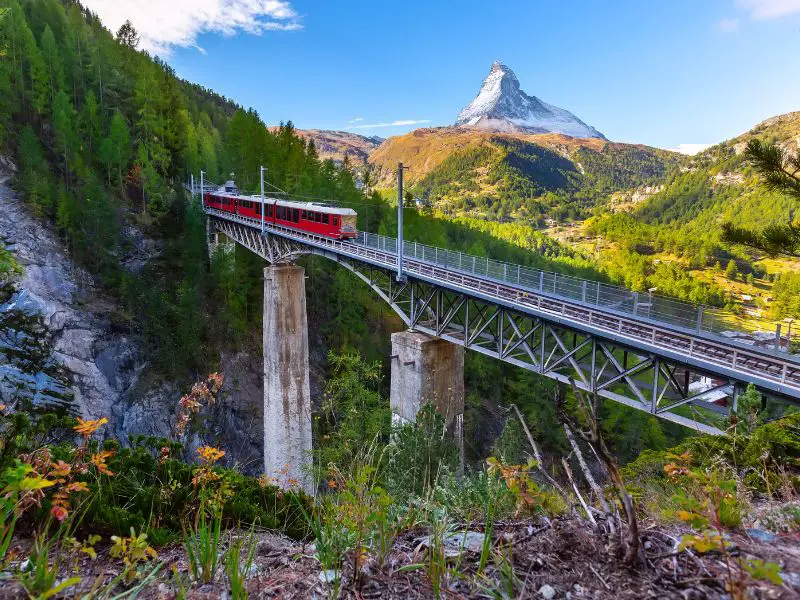
On the 9th day of your 14-day Switzerland trip, you will see the most iconic mountain in all of the Alps: the Matterhorn. This mountain is located in a village called Zermatt in the canton of Valais, which is your next destination. Here is a guide to visit Zermatt and here’s why Zermatt is worth visiting .
I recommend leaving Interlaken early so you can arrive in Zermatt before lunch. The journey is a minimum of 2 hours by train, with two transfers. Depending on the availability of the trains, the travel duration can last up to 2 hours and 45 minutes.
In this itinerary, I suggest staying for one night in Zermatt because one day is undoubtedly not enough to see the highlights. By the way, if you still don’t have a place to stay in Zermatt, you can find the best hotel deals in Zermatt from here .
Arriving in Zermatt before lunch, you will still have half a day to spend exploring, which is enough to fully enjoy Gornergrat . Within four hours, you can already enjoy the scenic cogwheel train journey to Gornergrat, explore the Gornergrat observation deck, see the Gorner glacier, and eat and chill in the restaurant in Gornergrat while taking in the stunning views of the Matterhorn.
If you were able to finish all those quickly, you can hike down to Riffelberg and Riffelsee , which is one of the lakes with stunning views of the Matterhorn.
If you like taking photos, you should not miss the opportunity to see the lake. Weather permitting, you can photograph the Matterhorn’s image inverted in the calm surface of the lake. You can purchase your tickets in Gornergrat Bahn in Zermatt. If you have a Swiss Travel Pass , you get a 50% discount.
When you return to Zermatt, it will probably be evening. There’s not much to do but relax in your hotel, explore the village, or have another kind of adventure: an alpine culinary experience . You can join a tour, but you can definitely do it yourself as you explore the village. Zermatt offers various dining options. The Bahnhofstrasse area has many restaurants serving Swiss cuisine.
Day 10 — Klein Matterhorn & Sunnegga
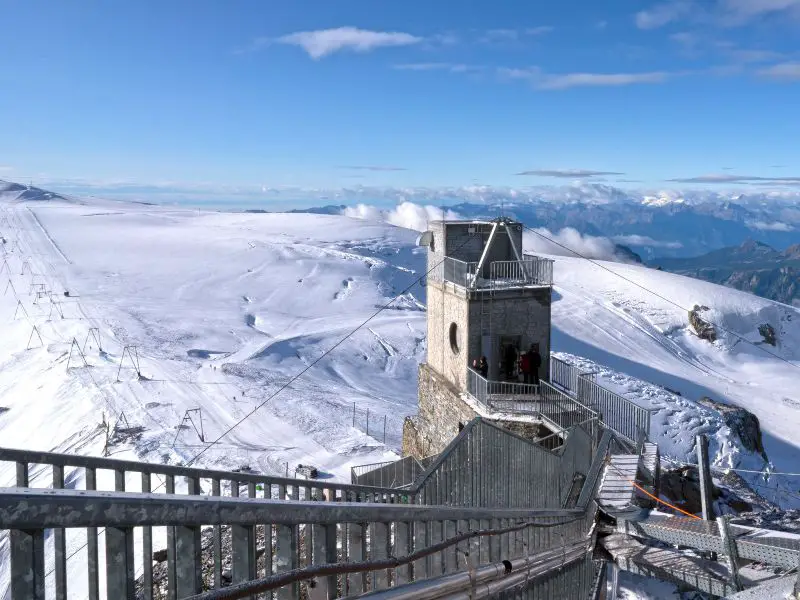
On the 10th day of your 14-day Switzerland trip, you will be visiting two more highlights of Zermatt: Sunnegga and Kleine Matterhorn (Matterhorn Glacier Paradise).
However, while I recommend visiting these two other highlights of Zermatt, please be aware that there are plenty of other attractions you can explore from this village.
These include Zermatt’s hidden gems which are budget-friendly alternatives to Sunnegga and Kleine Matterhorn. They can also be a great way to make your visit to Zermatt more special and unique compared to the usual hiking and sightseeing highlights mentioned previously.
If you prefer visiting the highlights, we begin in Sunnegga, which is just above the village. To reach Sunnegga from Zermatt, ride the funicular from the Zermatt station to Sunnegga . The Sunnegga funicular departs from the Sunnegga Valley Station, which is conveniently located in Zermatt.
The journey offers stunning views of the Matterhorn and takes around 10 minutes. Once at Sunnegga, you can see another perspective of the Matterhorn. It also has a restaurant, so you can do the sightseeing while filling up your tummies.
From Sunnegga, you can start hiking to other picturesque attractions like Leisee and visit more peaks like Rothorn with a cable car ride. You can also ride a gondola to Blauherd where you can embark on a classic hike called Five Lakes Trail . Hiking this trail needs 3 to 4 hours to finish. So, if you are interested, it’s better to kick off your day very early so you will still have enough time to visit Kleine Matterhorn in the afternoon.
At minimum, you’ll need 4 hours in Kleine Matterhorn, including the cable car round trip. The Kleine Matterhorn, or “Little Matterhorn,” is also known as the Matterhorn Glacier Paradise. It’s one of the highest cable car stations in Europe, offering stunning views of the Alps and the iconic Matterhorn .
To get to Kleine Matterhorn from Zermatt, take the gondola to Furi, then to Trockener Steg, and finally to Kleine Matterhorn. Click here for more information about Kleine Matterhorn and to book your tickets .
The experience has similarities with Jungfraujoch but the view is more compelling because you’ll see mountains from three different countries (Switzerland, Italy, and France) at one spot. Of course, weather permitting, Kleine Matterhorn also offers a view of the Matterhorn that makes the scenery unique. In Kleine Matterhorn, you can also go inside a glacier. They call it Glacier Palace.
Day 11 — Montreux & Chillon Castle
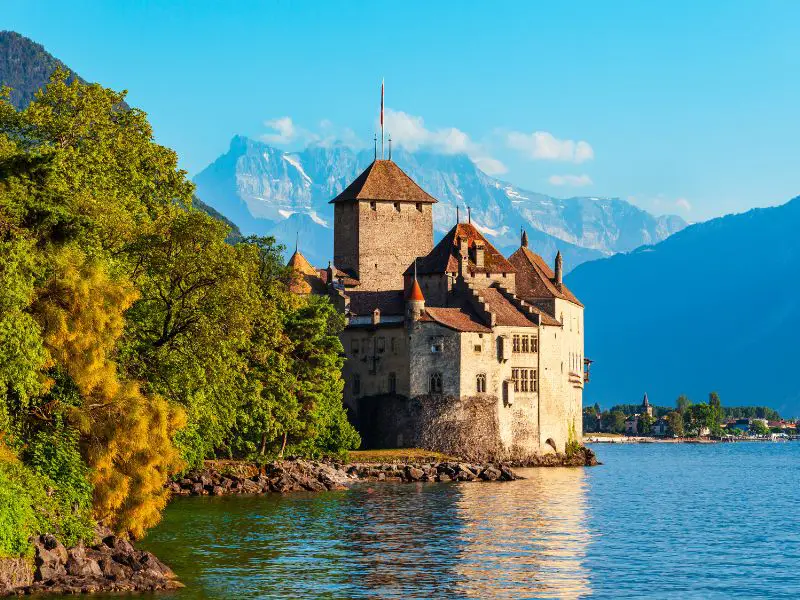
After visiting the Jungfrau Region and Zermatt, the highlights of the Swiss Alps, it’s time to explore another side of Switzerland.
Did you know there’s a part of this country that feels like the Mediterranean? That’s Montreux, a beautiful lakeside city in the canton of Vaud. From its vineyards to the posh and fancy atmosphere of its lakeside promenades, you’ll surely feel Montreux’s Mediterranean vibes.
On the morning of the 11th day of your 14-day Switzerland trip, you’ll be moving from Zermatt to Montreux. Try to arrive in Montreux by late morning so you can pick a restaurant in the city that offers not only Mediterranean food but also a beautiful view of the lake. The journey from Zermatt to Montreux is a 2.5-hour train ride with a transfer in Visp.
After lunch, you’ll visit Chillon Castle , which I consider one of the most beautiful castles in Switzerland. Perched on a small rock island in Lake Geneva and with the panorama of the French Alps in the background, it’s a place you’ll absolutely love.
Let’s not forget about its blend of Gothic and Renaissance architecture, which is nothing short of impressive. During your visit, you’ll find lots of rooms to explore, like the Great Hall, the Chapel, and the Dungeon. Each room has its own story to tell, with historical artifacts and exhibits that bring the castle’s rich history to life.
You can reach Chillon Castle from Montreux in three ways: by train, bus #201, or ferry ride. The amount of time you’ll spend at Chillon Castle could vary, but usually, 2 hours is enough to fully explore the palace.
It’s not necessary to book your tickets in advance, but you might want to, especially during the peak season. If you have a Swiss Travel Pass , you can explore Chillon Castle and its contemporary art exhibitions free of charge.
After visiting Chillon Castle, it’s time to see the rest of the city and take so many pictures ! Visit the promenade and stumble upon amazing artworks that stand by the tranquil lakeshores.
Discover the musical heritage of the city by visiting the museum of the British rock group Queen ( Queen Studio Experience ) inside Casino Barriere de Montreux. If you still have time, you might also want to see the former home of Charlie Chaplin in Vevey, where you can find his memorabilia.
Montreux also has a vibrant nightlife. There are plenty of bars in the city where you can meet new friends or acquaintances. By the way, you’ll be spending a night in Montreux since there’s an amazing day trip you can do from this city the next day.
If you don’t have a place to stay in Montreux, you can find the best hotel deals in the city from this link. Lastly, if you need more ideas on how you can spend a day in Montreux aside from what I mentioned, you can get more ideas by checking my article explaining why I find Montreux worth visiting .
Day 12 — Gruyeres
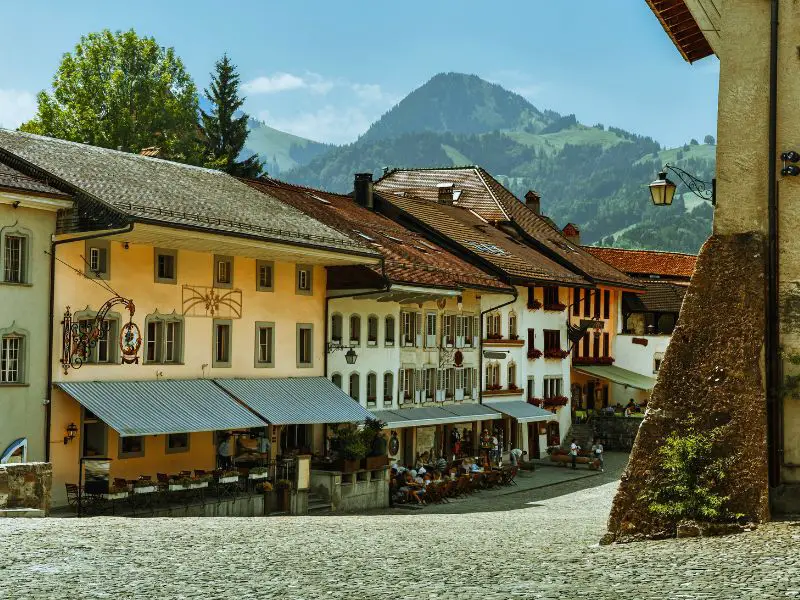
Like southern France , southern Germany , and northern Italy , Switzerland also boasts beautifully preserved medieval villages.
One of them is Gruyeres, which is only a 1 hour and 10-minute train ride from Montreux with a transfer in Montbovon. Interestingly, Gruyeres is not just a charming medieval village. It boasts a fantastic castle, charming streets, lovely countryside scenery, and unusual museums.
In this village, you can find an authentic cheese for which Switzerland is known: Le Gruyère AOP. Naturally, there are dishes you can enjoy that are made special because of Gruyere Cheese. Near the village, there’s a chocolate factory where you can indulge in unlimited chocolate after the tour.
Simply put, this is why Gruyeres is included in this 14-day Switzerland Itinerary. You can check my guide on how to make the most of your visit to Gruyeres . Alternatively, below are different guided experiences that summarize your visit to Gruyeres.
Day 13 — International Museums in Geneva
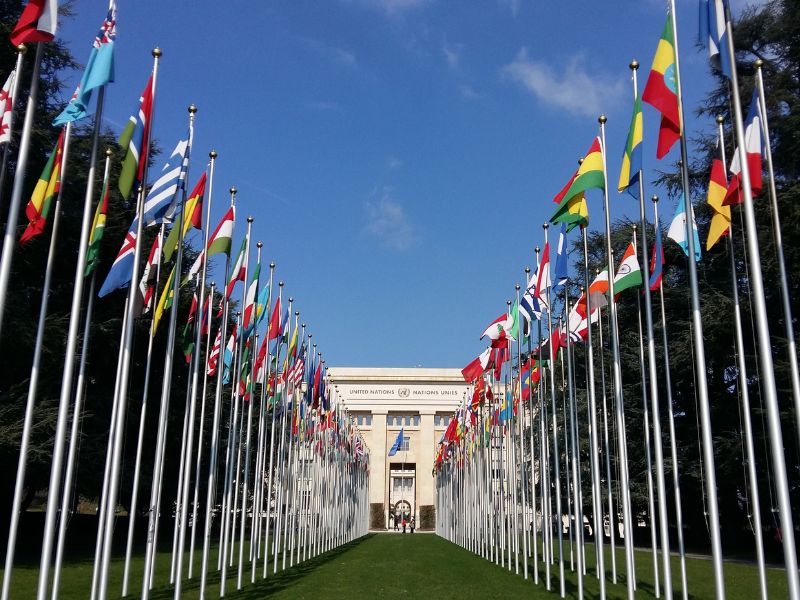
On the penultimate and final day of your 14-day visit to Switzerland, you’ll discover another aspect of Switzerland: a diplomatic hub, home to numerous international organizations. This is most apparent in Geneva, the second-largest and westernmost city in Switzerland.
You can find the best accommodation offers in Geneva from this link .
In this city, you’ll explore mind-nourishing and heart-touching museums, sightsee meaningful modern landmarks, and relax with pleasant views of the lake, mountains, and vineyards. Since I expect you’ll be leaving Switzerland on the afternoon of day 14 and museums open late in the morning, we prioritize visiting the museums and touring offices of the international organizations in the city on day 13 of your trip.
It would be great to arrive in Geneva from Montreux by late morning, so you can still visit a couple of museums in Geneva for the rest of day 13. The journey from Montreux to Geneva takes about an hour on a direct train ride.
So, which museums should you see in Geneva? There are several to choose from. But if you ask me, I recommend the International Red Cross and Red Crescent Museum, Patek Philippe Museum, and CERN.
Explore the International Red Cross and Red Crescent Museum in Geneva to discover the history, principles, and global impact of these humanitarian organizations through interactive exhibits and personal stories. You’ll gain a deeper understanding of international solidarity and our shared responsibility for global well-being.
Visit the Patek Philippe Museum to see what makes Swiss watches so famous. Here, you can see exquisite watches, clocks, and the legacy of Patek Philippe, offering a unique glimpse into the artistry and innovation of precision timekeeping.
If you’re a fan of science like I am, you can also visit CERN (European Organization for Nuclear Research) in Geneva. CERN provides insight into particle physics and features exhibits explaining groundbreaking research conducted in its facilities. It’s one of the most unique and educational destinations in Switzerland.
Day 14 — Geneva City Tour
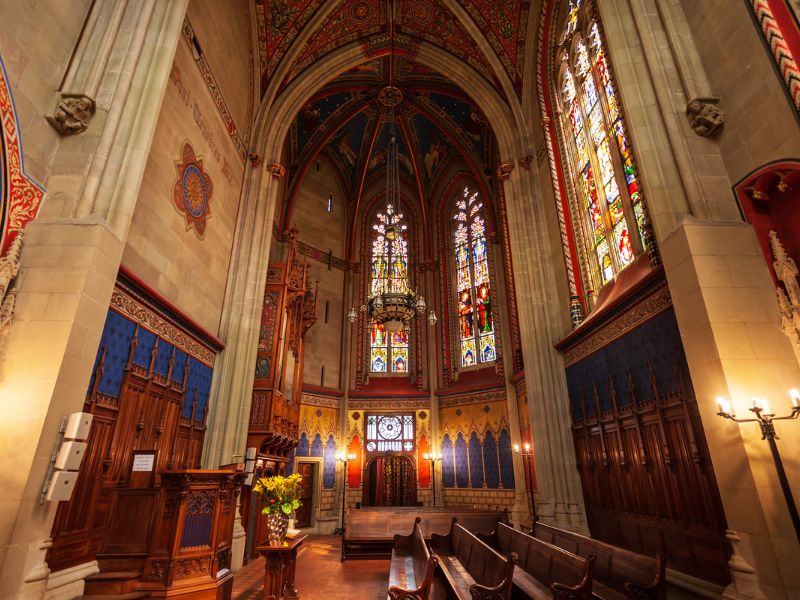
If you plan to leave Switzerland by evening, you still have the whole morning and early afternoon to explore Geneva. This time will be enough to see the notable and historical landmarks of the city.
Check out my guide to the places and experiences that make Geneva worth visiting .
What should you not miss? Firstly, Jet d’Eau . This is a huge fountain that sprays water really high from Lake Geneva. It’s like the city’s signature and you can see it from many places. One such place is Jardin Anglais , a lovely park with a clock made of flowers and a bronze fountain.
Not too far from the park is the old town of Geneva where you can find the Cathedral of Saint-Pierre . This old church dates back to the 12th century and was where John Calvin gave his speeches during the Protestant Reformation. You can climb the towers for amazing views of the city and the lake.
When you visit the Cathedral of Saint-Pierre, you must not forget to check out the Chapel of Maccabees. To me, it is Geneva’s architectural gem and a must-see for architecture lovers like you. This Gothic-style chapel has an awe-inspiring chancel vault, pulpit, and stained glass window.
Exploring the city of Geneva is not complete without a selfie in front of the flags of Palais des Nations . This is the home of the United Nations in Europe and the second-biggest UN center after New York. It is located close to the Museum of the International Red Cross and Red Crescent, which you might have seen during day 13.
Not too far from Palais des Nations lies another iconic landmark of Geneva: The Broken Chair Sculpture . It looks like a giant chair with a broken leg – a symbol of opposition to land mines and cluster bombs, and a reminder to the politicians and diplomats who come to Geneva. Don’t forget to take a selfie during your visit!
For an insightful tour of the city, consider joining a guided tour . The good news is that there are different kinds of tours available to suit everyone’s type of exploration. There is the tour for the photogenic spots of the city , a tour to unveil hidden gems of the city, a chocolate walking tour , and more.
More Ways to Spend Days in Switzerland
So, that wraps up my 14-day Switzerland itinerary. I hope it gave you an idea of how you can make the most of your 2 weeks in Switzerland. However, before you go using this plan, know that there are other alternatives to the destinations I mentioned in this post.
For example, if you like to make your trip unique by visiting less-travelled destinations, check out other cities near the Swiss Alps like Sion and Brig.
Sion, the capital of the canton of Valais, is a stunning destination for wanderers and explorers. Its two ancient landmarks, perched on top of its two hills located in the heart of the city, offer a throwback look into the history of the region with breathtaking views of the Pennine Alps.
Since Sion is located along the route to Montreux from Zermatt, you can easily insert it into this itinerary after day 10. Here is my guide to help you make a visit to Sion worth it .
Brig, on the other hand, is in the middle of the route between the Jungfrau Region and Zermatt. If you like, you can insert Brig into this itinerary after day 8 before you visit Zermatt. You can spend half a day in Brig to see a unique-looking castle or one whole day if you want to relax in its thermal baths, one of the largest in all of Switzerland.
Learn more about Brig by reading my post about the tourist attractions and activities you can find in Brig .
Actually, there’s another destination you can visit after Day 8 before you go to Zermatt. It’s called Kandersteg and it’s another one of the most beautiful villages in the Swiss Alps . From this village, you can visit Oeschinensee. It’s the lake below a spectacular mountain face. Both will take your breath away.
Lastly, if you like seeing artworks and more amazing city vibes, perhaps you would not miss Basel. It’s another Swiss city located north of Bern. From Bern, Basel is just a short train ride. You can easily visit this city on a day trip from Bern after Day 4. You can start discovering from my guide to Basel’s most beautiful places .
Save it on Pinterest .
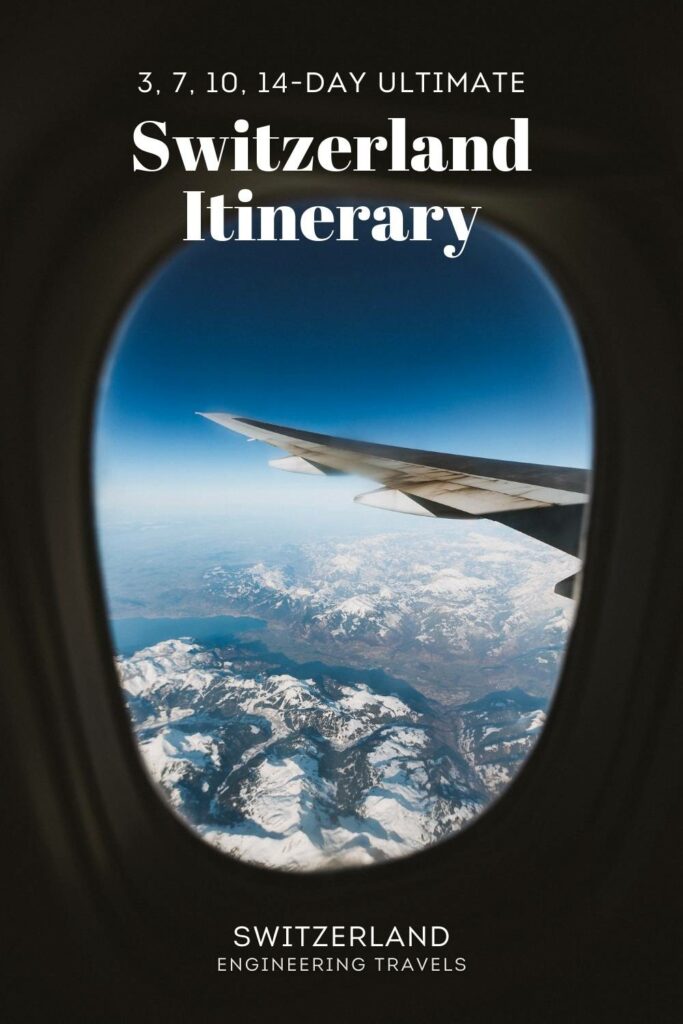
Similar Posts
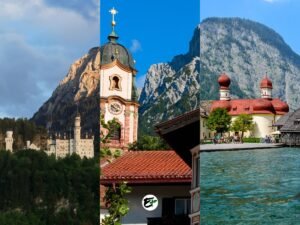
10 Days in the Bavarian Alps Itinerary (The Highlights)
In just 10 days, you can explore the highlights of the Bavarian Alps. This includes a visit to five distinct towns and more than a dozen tourist attractions within the Bavarian Alps. Some of these are the country’s most iconic landmarks and impressive natural attractions. These include Neuschwanstein Castle, Eagle’s Nest, Linderhof Palace, Zugspitze, Eibsee,…

A Complete Guide to Zurich: Discover Why It’s Worth a Visit
Zurich is the favorite starting point of most travelers visiting Switzerland. With almost all the destinations in Switzerland easily reachable by train from Zurich and Zurich’s flight and train connections to other countries, it’s no wonder. Whether it’s a tourist wanting to relax for 1 to 3 days in Lucerne or an adventurer desiring to…
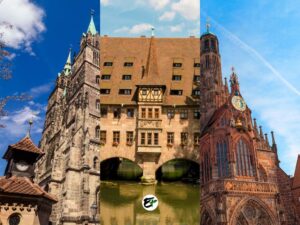
Nuremberg Itinerary For 1, 2, 3 Days (I’ll Let You Choose)
Among the major cities in southern Germany, Nuremberg is the one that kept me wandering its streets the longest. Its old town, filled with colorful half-timbered houses and landmarks that transport you back in time, is like Disneyland for adults. Absolutely charming! If my friends were to ask me where to go in Southern Germany,…
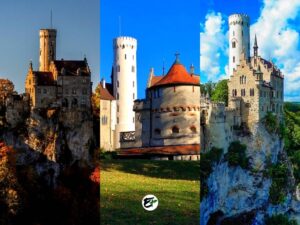
Visit Lichtenstein Castle in Germany, Things to Do Nearby
If you are looking for picturesque places in southern Germany, Lichtenstein Castle would not disappoint. As I explored the castle, I was struck by the thought that this is a place that would captivate any traveler, especially wanderers. The castle’s unique architecture, coupled with its seemingly impossible location, makes it an extraordinary destination for sightseeing….
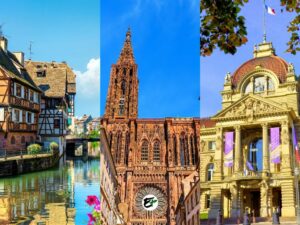
The Ultimate Strasbourg Travel Guide: 22 Things to See & Do
One of the things that fascinates me about European cities is their profound history and diverse culture. These facets are intricately woven into the city’s fabric, and they come alive as you stroll through their streets. This is particularly true for Strasbourg, a city located in Alsace, Grand Est. As a traveler from the other…
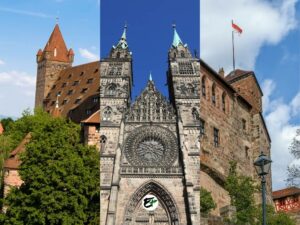
Explore Nuremberg: 15 Highlights that Make It Worth a Visit
For over two decades of my life, I had no idea that Germany had cities that looked like they were straight out of a fairytale. It wasn’t until I discovered Nuremberg that I felt like I had stumbled upon Disneyland for adults. As I wandered through Nuremberg’s quaint streets with their colorful half-timbered houses and…
Phenomenal amount of detailed information presented. You should conduct small group private tours
Maybe soon! I’d like to meet more people too. I hope this article helped you. Thank you for this. 🙂
This contained so much detailed information! Truly helpful, thank you for gathering this for all to enjoy😍
Welcome! 😀 I hope you enjoy your trip.
Very well organized travel information. Whole page is full of vital details. Thanks, this page helped me save time organizing upcoming Switzerland travel 🙂
I hope you enjoy Switzerland!
Leave a Reply Cancel reply
Your email address will not be published. Required fields are marked *
- Search Please fill out this field.
- Manage Your Subscription
- Give a Gift Subscription
- Newsletters
- Sweepstakes
- Destinations
- Switzerland
This Stunning Swiss Town Has Cozy Chalets, Epic Skiing, and One of the Highest Mountains in Europe
Come to Zermatt for the Matterhorn, stay for the shopping.
:max_bytes(150000):strip_icc():format(webp)/Stacey-Leasca-2000-631fabdcfe624115bea0ce8e25fdec96.jpg)
XU BO/Getty Images
The Matterhorn is one of the world's most dramatic mountains. Its sharply pointed peak attracts visitors around the world to the Swiss Alps to glimpse it for themselves, and there is perhaps no better place to do so than Zermatt. Not only is this southern Swiss resort town special for its views and ski slopes, but it's also famously car-free. This means it takes a little more effort to travel there and get around by train, electric taxi, or even — if you're romantically inclined — a horse-drawn carriage.
Whether you visit during the stunning winter season or another time of year, this place is an outdoor lover's paradise. It also doesn't hurt that there's plenty of culture, food, and shopping to be enjoyed. Here’s where to eat, see, and play on your next trip to Zermatt.
What to Know Before You Go
Jordan Lye/Getty Images
Located high in the mountains, Zermatt has upheld its ban on combustion vehicles since the 1960s. The only way to arrive is by train, taxi, or helicopter. If you're driving through Switzerland, you can park in the garages in the nearby town of Täsch and take the shuttle to Zermatt. Visitors arriving at Zurich International Airport (ZRH) or Geneva Airport (GVA) can take a train to Zermatt in four hours or less. There are also adorable blue electric buses to help visitors get around town upon arrival.
Best Times to Visit Zermatt
Suttipong Sutiratanachai/Getty Images
If you’re looking to visit Zermatt when the weather is warm and the birds are chirping, it may be best to look into a trip between June and September, when the temperature ranges from 53-75 degrees Fahrenheit. However, those searching for snowy scenery will want to come between December and March, when the average high consistently falls below 45 degrees Fahrenheit.
The Best Things to Do in Zermatt
Aumphotography/Getty Images
See the Matterhorn.
If you’re going to Zermatt, odds are you already have plans to see the Matterhorn. If you don’t, you should add it to your itinerary immediately. This mountain is one of the highest in Europe, and it's a gorgeous sight to behold. You can admire it from town, but you should also plan to get a closer peek by taking the Gornergrat Railway , which brings passengers to the best viewpoint. Tip: sit on the right side for a stellar view along the entire journey.
Pascal Gertschen/Courtesy of Zermatt Tourism
Shop the Bahnhofstrasse.
Zermatt may be a small town, but it packs a major punch when it comes to shopping. Visit the Bahnhofstrasse, its main street area, to shop for clothing at Bijou les Boutiques, jewelry at Atelier Marcus Marienfeld, and ceramics souvenirs at Zermatt Keramik.
If you come in the winter, you simply must ski. Everyone from beginners to pros can find a trail that’s right for them on the mountain, which is home to more than 200 miles of trails. One slope, the Matterhorn Glacier Paradise, goes on for a whopping 15.5 miles, so you could spend all day on just this one.
Korawee Ratchapakdee/Getty Images
Take a hike.
Visiting in the summer? Spend time on those same trails by hiking through the verdant landscape. There are more than 150 trails to explore, according to AllTrails , which lists the Five Lakes Trail as the top community recommendation. This 6.8-mile trail is classed as moderate. Give yourself an entire day to complete it so you can stop and enjoy the views for as long as you’d like.
The Best Restaurants in Zermatt
Fuchs bakery.
Get a delicious start to the day by visiting the Fuchs Bakery , which produces freshly baked goods using locally sourced ingredients. This includes plenty of sweet treats alongside croissants and breads.
Courtesy of CERVO Mountain Resort
Madre Nostra
Grab a slopeside lunch or dinner at Madre Nostra , located at the Cervo Mountain Resort. On Mondays, meat eaters can enjoy a special three-course BBQ dinner, and pescatarians, vegans, and vegetarians can still order the regular menu for Italian-style salad, pasta, and fish dishes.
3100 Kulmhotel Gornergrat
Enjoy dinner with a view at 3100 Kulmhotel Gornergrat , the highest hotel and restaurant in the Swiss Alps. Its restaurant, Vis-à-Vis , offers Swiss-centric meals made with local ingredients, including salmon trout, fondue, and pork cordon bleu.
The Best Hotels in Zermatt
Courtesy of Alpen Resort Hotel
Alpen Resort & Spa
Consider booking a classic Swiss chalet-style room at the Alpen Resort & Spa . Located close to both the town train station and the Gornergrat Railway, it’s a convenient property that also comes with all the bells and whistles one would want on a mountain getaway, including a full-service spa, sauna, pool, hot tubs, and more.
Courtesy of THE OMNIA
Visitors seeking a little luxury on their Zermatt getaway should book a few nights at The Omnia . This upscale hotel features a massive wall of windows that look out onto the Matterhorn. With just 30 rooms, it’s a boutique offering that provides guests with ultra-personalized service, sustainable dining, lounge areas with spectacular views, and a gorgeous spa.
Unique Hotel Post
Feel the history of Zermatt when you book a stay at the Unique Hotel Post , which first opened in 1875. Though the building may be old, its interiors are thoroughly modernized and now include four restaurants, a small spa, and rooms overlooking the town.
Related Articles
A Snob's Guide to the Best Adventure Skiing in the Alps
It's a European thing and it's called a ski safari: Traveling from lodge to lodge with an expert guide who each day finds the best snow, food, and place to stay. Here are the top three outfitters.

Photo above: Eleven in France will find the best terrain for your ski level every day.
The bad news is snow in the Alps isn't what it used to be—the season is later and shorter. The good news is there's an excellent way around that. And it's called the ski safari. It's not a new concept. Long before the first ski lifts, winter sports enthusiasts like Sir Arthur Conan Doyle and Ernest Hemingway climbed Alpine slopes on their own power, then schussed down through valleys and charming villages, never skiing the same piste or staying in the same hut twice. From their exploits the modern ski safari was born. And, as snow conditions become less predictable, it’s having a day. These three outfitters—snow cognoscenti and logistical wizards—will take you to where the snow is, crafting custom, adaptable itineraries with an eye to the best conditions, terrain, lodges, lunches, and mugs of vin chaud. (And no, you won't have to climb the slopes—unless you want to.) For all skill levels, and a no-crowd guarantee .
SwissSkiSafari (Switzerland, France, Italy)

Founder Danielle Stynes nails the alpine trifecta, accompanying guests on most trips and always with a plan A, B, and C. A 10-day tour might include runs under the Matterhorn, a few days in Zermatt and Vallée Blanche in France, and a heli-drop, weather permitting, on the Italian side of Mont Blanc.
• Stay: Mont Cervin Palace, Zermatt; over-the-top Hameau Albert 1 er , Chamonix; and the Fior di Roccia chalet in Italy, accessible only by ski, snowshoe, or snowmobile. In the mood for a down day? Stynes is a wellness snob and has a Rolodex to match.
Dolomite Mountains (Italy)

Founder Agustina Marmol has spent decades researching the best ski runs, restaurants, and rifugios. A seven-day safari might start at Cortina d’Ampezzo and end at the Alta Badia ski area. Tour WWI battle sites, ski Marmolada Glacier, and lunch on sun-soaked terraces.
• Stay: Ciasa Salares, with its 24,000-bottle wine cellar, and the seven-room Rifugio Fuciade.
Eleven (France)

This collection of adventure lodges runs two properties in the Tarentaise Valley; you’re within 30 minutes of seven world class ski resorts, including Val d’Isère, and you can heli-transfer to Italy.
• Stay: Eleven’s Chalet Pelerin and neighboring Chalet Hibou. And this year you can ski-tour between their two backcountry rustic-chic huts, Ruitor Alpage in France, and Rifugio Valgrisenche in Italy.
Opening Soon An outpost of IGNIV, the shared-plate restaurant from the tree-Michelin-star chef Andreas Caminada, will open in December in the Swiss ski village of Andematt. It will occupy the ground floor of Maya, a new residential project from designer Patricia Urguiola.
This story appears in the October 2024 issue of Town & Country . SUBSCRIBE NOW
Jen Murphy is a journalist who specializes in fitness, wellness, and active travel. She covers fitness for the New York Times and is the author of the Yoga (Man)ual .
In the Magazine

Milan's New Creative Aristocracy

The 2024 Creative Aristocracy

Anoushka Lucas Is Your New Favorite Leading Lady

The Rise of Chappell Roan

The Modern Mogul: David Ellison

Daniella Kallmeyer Is Making Your New Uniform

How Chloe Misseldine Got Big in Ballet

Marco de Vincenzo Comes Into His Own at Etro

3 Questions For: Titus Kaphar

Meet British Museum Director Nicholas Cullinan

Monica Rich Kosann Celebrates a Jewelry Milestone

How Rosario Candela Built New York City
Discover The 'Swiss Alps Of Texas' On This Unbelievably Scenic Road Trip
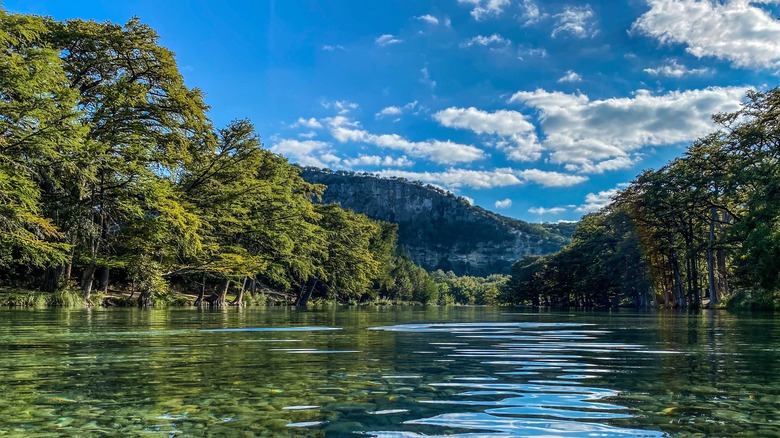
If you think Texas is all dusty plains, oil wells, and hulking cities, think again. A little way outside of San Antonio, you can discover the so-called "Swiss Alps of Texas." While the mountains may not reach the towering heights of those in Switzerland, the region's sparkling rivers, lush (for Texas) scenery, and 2,400-foot peaks will give you a taste of the Alps. The route also passes by one of the best state parks in Texas , if you need more reasons to make the trip.
The 85-mile circular route starts in Bandera, around an hour from downtown San Antonio. Bandera is a quintessentially Texan place to begin a road trip in the state, even holding the nickname "the Cowboy Capital of the World." The town earned this moniker as it was a starting point for the Great Western Cattle Drive in the 19th century, and even now, you can watch cowboys testing their skills at summer rodeos. You might want to stay at one of the many dude ranches around the town and spend the evening enjoying live music and dancing the Texas Two-Step.
Lose yourself in nature
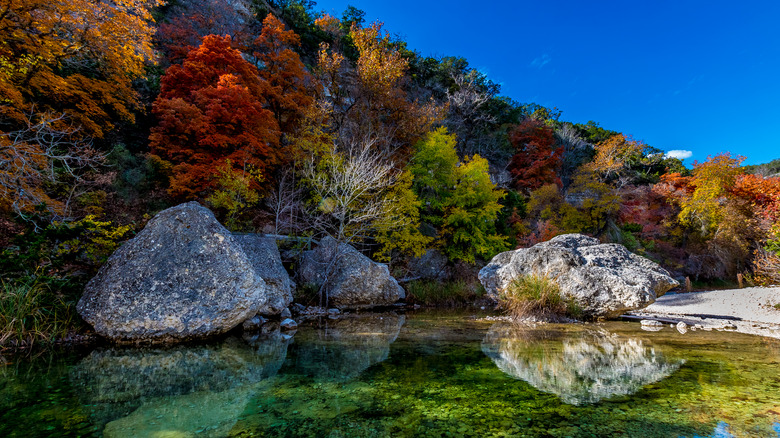
Once you're ready to hit the road, head north towards Medina before turning west on Highway 337. As you drive towards Vanderpool, the landscapes will become increasingly filled with trees and rolling hills as you crisscross the region's many waterways. At Vanderpool, the route has you turning south, but we recommend postponing that for a short while.
Instead, go 5 miles north to Lost Maples State Natural Area. This picturesque area has crystal-clear rivers for fishing, as well as campgrounds and hiking trails, one of which reaches over 2,000 feet and offers glorious views. True to its name, Lost Maples is full of maple trees that burst into a kaleidoscope of color in the fall. Here, you get a real taste of why the area is called the Swiss Alps of Texas. After visiting, go west towards Leakey and then turn south on Highway 83 to reach Garner State Park.
The park is an incredible destination for water adventures . In the summer, you can rent kayaks, stand-up paddle boards, and inflatable tubes to float peacefully down the Frio River. Garner is fantastic year-round, with spring wildflowers, cooling water in the summer, and vibrant foliage in the fall. One happy Tripadvisor reviewer described the park as "Beyond imagination," perfect for hiking and relaxing by the "pristine river." Swiss Alps, eat your heart out.
Quirky pitstops on the road home
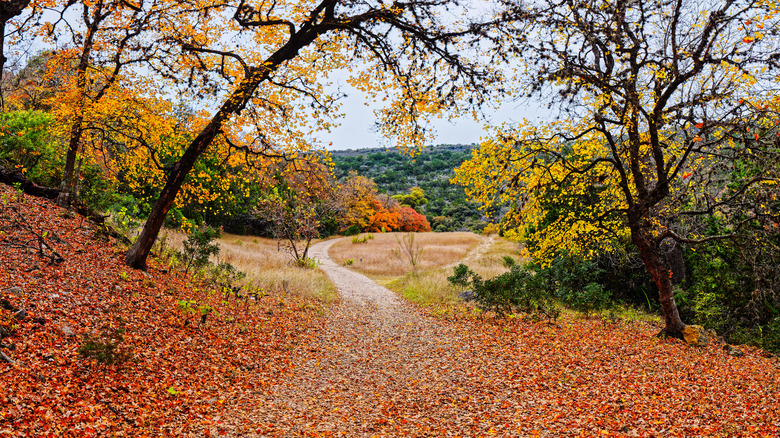
From Garner State Park, you can take Highway 470 back to Bandera. The scenery remains beautiful as you return to your starting point. However, your road trip isn't over, and you have a few stops to make on the road back home. First, you'll pass through Utopia, a small town with a big name. Make sure to visit the Sabinal Canyon Museum, which has a small but fascinating collection of artifacts from local pioneers and Native Americans.
Your final pitstop before reaching Bandera should be Tarpley. This tiny town is home to Mac & Ernie's Roadside Eatery, a delicious restaurant that appeared on an early episode of "Diners, Drive-Ins & Dives." The menu is updated weekly, but for lunch, you can expect burgers and sandwiches (red deer and goat burgers were on the menu at the time of writing). For dinner, you could try the highly-rated catfish, steaks, pork and lamb chops, and fried shrimp. With a full stomach, it's time to wrap up your adventure in the Swiss Alps of Texas. If you think this road trip sounds good, check out our article about another Texan road trip to discover hidden gems in the state.

COMMENTS
3. Drive or cycle across three mountain passes. With their snaking hairpins and otherworldly landscape, Switzerland's mountain passes are a sight to behold and a thrill to navigate. Experience three in one go by driving or cycling a circular route that takes in the Grimsel, Furka and Susten passes.
By Management. 999. Swiss Alps, Switzerland. A magnet for skiers and hikers, these dramatic peaks - including the iconic Matterhorn - range from 3,000 to 15,000 feet and spread across three-fifths of the country. Abundant glaciers, scenic valleys and gorgeous alpine lakes add to the region's visual appeal. The Glacier Express train travels ...
The Swiss Alps extend from both Valais in the West to Graubünden in the East. Of this, the most important blocks are the Alps in Valais, Bern, Appenzell, Glarus, Ticino, and Grisons (Graubünden). The Mont Blanc massif in Valais is shared with France and Italy. And the Bernina Range is shared with Northern Italy.
Browse 35 tours from the best tour operators in Swiss Alps with 87 reviews visiting places like Interlaken and Zurich. Compare & book now! Home / Europe tours / Switzerland tours / Swiss Alps ... Melissa Swiss Alps travel expert at TourRadar. Magical Switzerland (Small Groups, 7 Days) 5 Day Zurich including Lake ferry, Cable Car, Mount Rigi ...
7-day hiking itinerary in the Swiss Alps, fully customizable. Enjoy 1 week of self-guided hiking in the famous Jungfrau Region and the Upper Engadine, plus a ride with the Glacier Express. Extend and customize the tour however you want! This page was last updated by Annika on 13 February 2024.
This is a very complete 2-week Switzerland holiday. It includes many highlights of the Swiss Alps: Lucerne, the Jungfrau Region, Zermatt and the Matterhorn, the Aletsch Glacier, and much more. It's a relaxed tour. You won't change base towns and hotels each day. Most of my suggested excursions take about half a day.
Take the scenic Glacier Express, visit the beautiful car-free village of Zermatt, visit the Matterhorn, the famous St Moritz and more on this Swiss highlight trip. view trip ⤍. 12 days. Scenic Trains, Mountains, Lakes and Chocolate. A Swiss adventure, exploring the panoramic trains, majestic mountains, and serene lakes.
per adult. 3. Bernina Express Tour Swiss Alps & St Moritz From Milan. 390. Rail Tours. 6+ hours. An exclusive "Bernina Red Train" 1 day tour from Milan to discover the enchanting beauty of the Alps on board the highest…. Free cancellation. Recommended by 92% of travelers.
In this ultimate travel guide, we'll explore the best places to visit, things to do, and tips for planning your trip to the Swiss Alps. Geographical Overview of the Swiss Alps. The Swiss Alps are a mountain range located in Switzerland and neighboring countries, including Italy, Austria, France, and Liechtenstein. The Alps cover a significant ...
Overview Itinerary. Day 1 - Arrive in Lucerne -- Mt. Pilatus. Day 2 - Through the Historic Heart of Switzerland on the Gotthard Route. Day 3 - Bernina Route - Lugano past northern Lake Como to St Moritz. Day 4 - Beautiful Swiss Alps, Lakes and Vistas. Day 5 - Mountains, Meadows, and Breathtaking Scenery on the Glacier Express.
2. The Charming Village of Zermatt and the Iconic Matterhorn. Experience Switzerland in style at this unique place to visit in the Swiss Alps. Zermatt, a picturesque village nestled at the foot of the mighty Matterhorn, is a must-visit.This charming village is a top international resort that offers a unique blend of quaint chalets, world-class restaurants, and hotels.
Day 1: Voralpen-Express and GoldenPass northern leg. You'll first take a regular train from Zurich to St. Gallen. Then change to the Voralpen-Express for a scenic ride across the pre-Alps to Lucerne.Finally, you will take the GoldenPass route to Interlaken Ost.The whole trip will take nearly 6.5 hours.
Discover the Alps and scenic Switzerland on gentle walks and mountain excursions Tour Add-Ons & Getaways Discover the Alps on an Alpenwild Getaway, a self-guided, short-stay vacation in our favorite Alpine destinations.
1. Bring Layers. The weather in the bucolic valleys of Switzerland vary dramatically from the weather at the top of the mountains and peaks in this region. Because the Swiss Alps straddle the northern European climate and the warmer southern European climate, the weather can be both cool and warm at the same time.
Let's face it: Travelers don't flock to Switzerland for its cities. Spend most of your time getting high in the Alps. Frolic and hike high above the stress and clouds of the real world. Take a vacation from your busy vacation. Recharge your touristic batteries high in the hills, where distant avalanches, cowbells, the fluff of a down comforter, the whistle of marmots, and the crunchy footsteps ...
The ultimate road trip through the Swiss Alps. The spectacular Lauterbrunnen Valley, near Grindelwald in the Bernese Alps. BY Leigh-Ann Pow. Last updated . 28 January 2020. A roadtrip through the Swiss alpine landscape from Vevey to Zürich reveals a country that really is as picturesque as its postcards…. GPS notwithstanding.
Begin your alpine tour in Munich and travel to Austria, Italy, Switzerland, and Lichtenstein on this comprehensive Swiss Alps tour. 800-788-7885 or your ... Savor a real taste of the Alps at a Swiss cheese-making demonstration, lunch with a tour and schnapps tasting at a 400-year-old farm, dinner in Berchtesgaden's salt mines, lunch in the ...
Switzerland, despite its small size (fitting 14 times inside Madagascar), can't be fully explored in a 14-day trip. However, two weeks are enough to discover top destinations in the Swiss Alps and explore few of its amazing cities. During this period, you'll immerse yourself in a complete Swiss travel experience, from stunning natural scenery to...
Glorious Switzerland. 8 Days. 11 Locations. 2 Countries. Experience the Glamour and Glitz of Glorious Switzerland on an 8-Day Guided Tour. Add to Compare. From. $4,175. VIEW TOUR.
Swiss Alps Adventure ~ Itinerary. Trip Start: Zurich Trip End: Zurich. Day 1 Arrive in Zurich, ride along the Walensee, surrounded by the Alps. Day 2 Travel to Unterterzen, hike around Flumserberg. Day 3 Take a scenic train ride to St. Moritz, bike from Sils Maria to St. Moritz. Day 4 Experience a Via Ferrata for majestic views of the Alps.
Everything you need to know for an adventure-filled trip to Zermatt, Switzerland, including the best hotels, restaurants, and things to do. ... the highest hotel and restaurant in the Swiss Alps ...
Ride up to Stans by Switzerland's oldest mountain railway. Start in Lucerne and travel along tracks from the 1890s, watching villages and views pass by in the window. With wildflower meadows in the summer and snow dusted trees in winter, you will unwind as you wind around the mountains for 30 minutes before reaching the top.
1 of 221 - Glacier Express. Scenic train trip Min. time required: 8:00. The Glacier Express is the most famous scenic train across the Swiss Alps, between Zermatt and St. Moritz. Check our must-read info about the route, tickets, reservations, discounts, and more. Show more .
The Glacier Express: The Slowest Express Train in the World. Known as the world's slowest express train, the Glacier Express offers a leisurely journey through some of Switzerland's most stunning landscapes, such as the Rhine Gorge (often called the Swiss Grand Canyon) and the dramatic peaks of the Alps. Connecting Zermatt, home to the iconic Matterhorn, with the upscale resort town of St ...
Photo above: Eleven in France will find the best terrain for your ski level every day. A SwisSkiSafari heli transfer. Founder Danielle Stynes nails the alpine trifecta, accompanying guests on most ...
While the mountains may not reach the towering heights of those in Switzerland, the region's sparkling rivers, lush (for Texas) scenery, and 2,400-foot peaks will give you a taste of the Alps. The route also passes by one of the best state parks in Texas, if you need more reasons to make the trip.